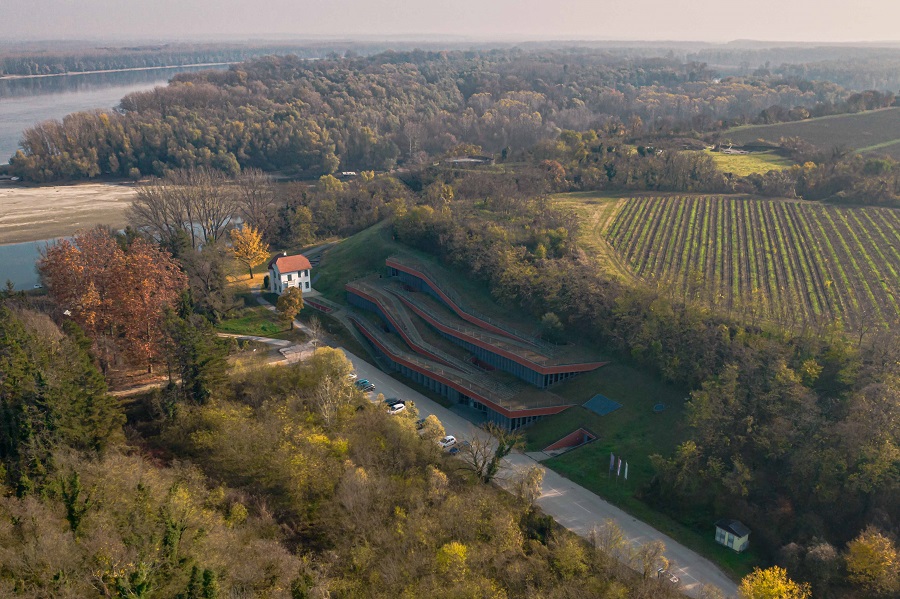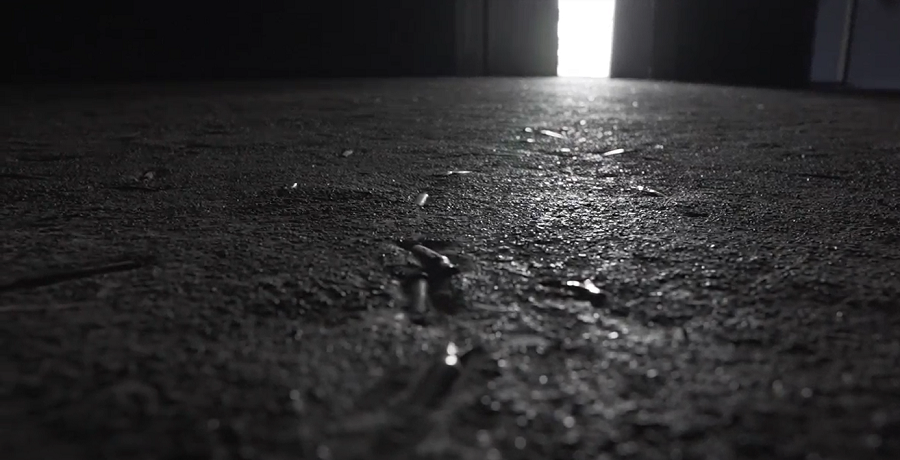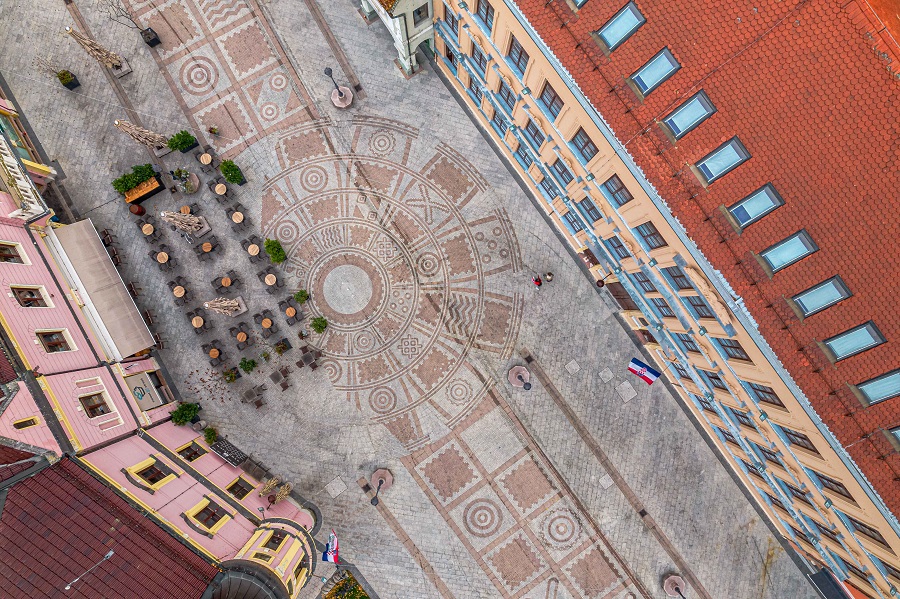Vukovar Card: 7-Day Tour to Enrich Eastern Croatia Understanding
December 9, 2021 - What if it was possible to support Vukovar economically rather than just emotionally, while having an incredible discovery of eastern Croatia. Meet the proposed Vukovar Card and itinerary.
The idea is simple, and it puts money into the Vukovar economy, allows Croatians from all over the country and the diaspora to have a direct connection and contribution to the Vukovar today, as well as having one of the most incredible weeks of discovery of a part of Croatia that few know about in details. Here is a detailed look at my recent 6-day trip to eastern Croatia in November. It was one of the best weeks of my 18 years in Croatia.
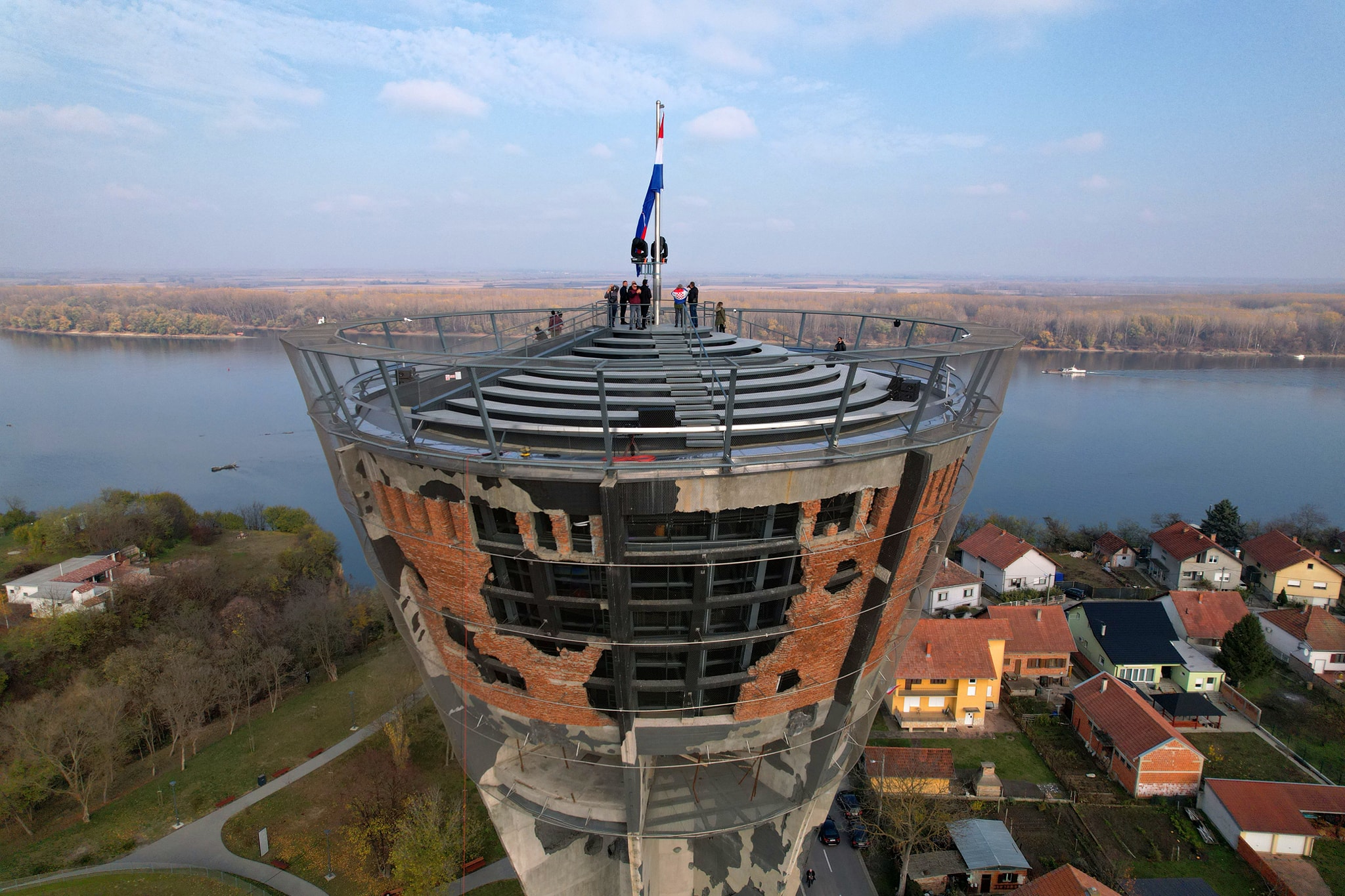
I presented the concept of the Vukovar Card recently in Vukovar Card: Support Local Economy Rather than Temporary Facebook Status.
The concept is simple.
Vukovar is a very emotive issue for all Croatians after the events of 1991, and November 18 sees an outpouring of emotion each year, as Facebook statuses are changed to remember those who made the ultimate sacrifice.
While emotion and remembrance are appreciated in Vukovar, there is zero economic impact for a region which is suffering economically more than the rest of Croatia.
Many Croatians have never been east and have little knowledge of the magic they are missing out on.
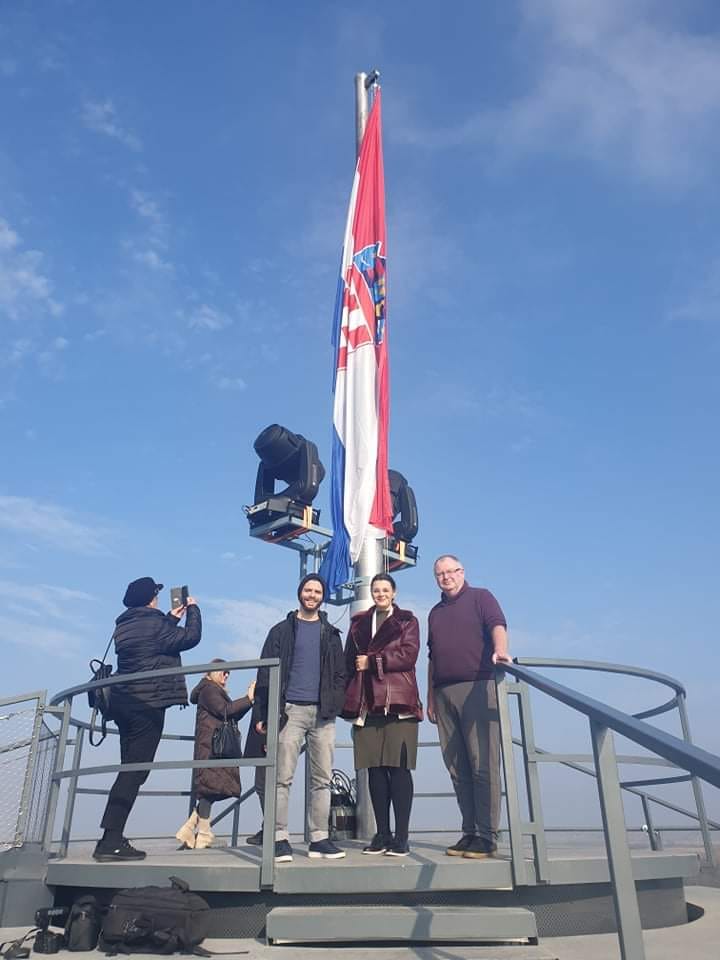
The Vukovar Card provides a partial solution to that.
Once in a lifetime, rather than heading to the beach for that 2-3 week holiday, take 7 days to head on east instead. Go and meet the people of Vukovar, drink in their cafes, eat in their restaurants, and enjoy a fabulous 7-day tour of eastern Croatia that will literally blow your mind and wonder how you have been missing out on all this for so long.
Once you take the tour, you receive the proposed Vukovar Card. It is proposed that the Vukovar Card is like a loyalty card (a little like the ill-fated Cro Card). Hotels, restaurants and bar owners on the coast, can all play their part to boost the Vukovar economy by offering a 10% discount on selected services by bearers of the Vukovar Card.
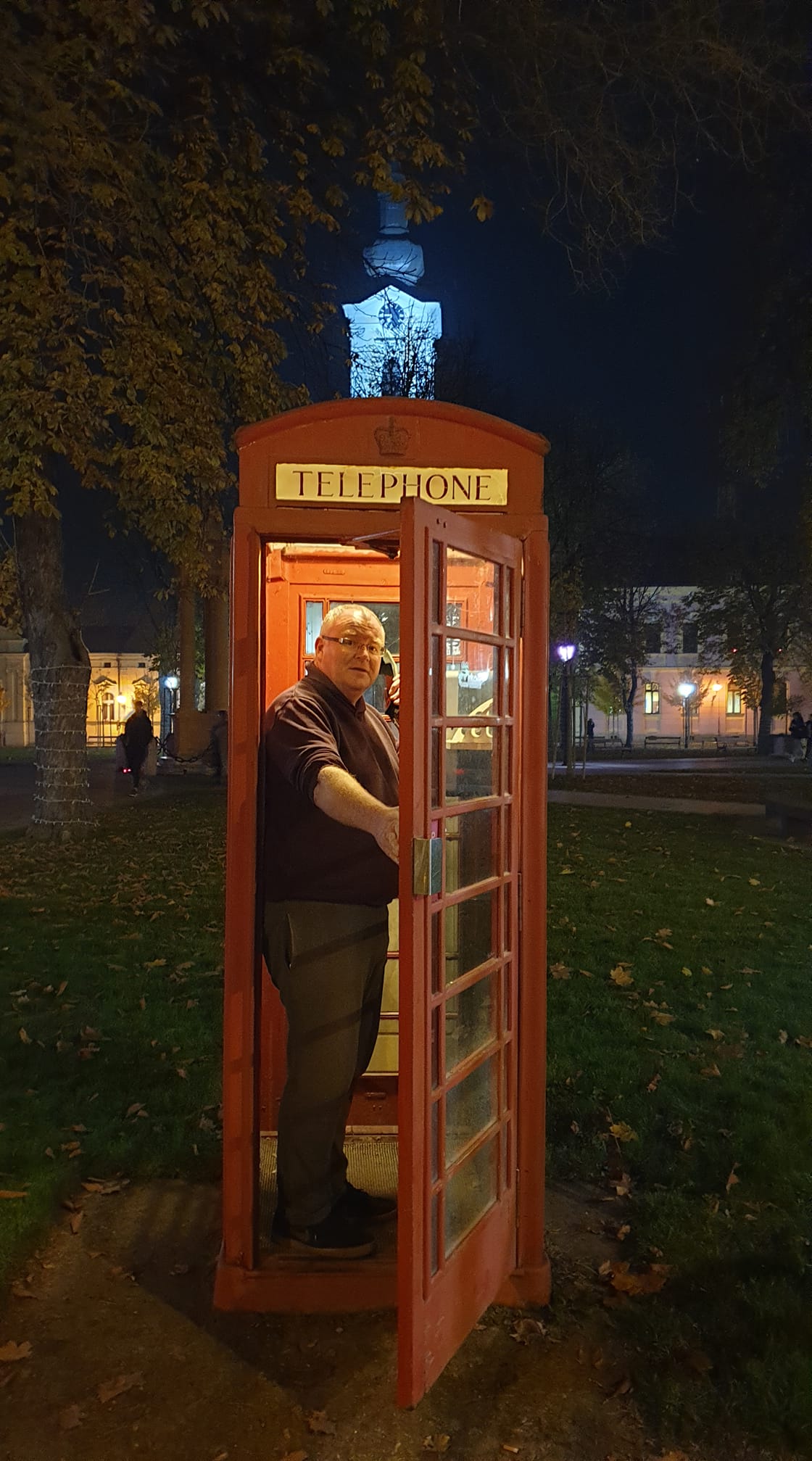
Nothing more complicated than that.
I pitched the idea to the two regional tourist board directors, Ivana Juric of Osijek-Baranja County, and Rujana Busic Srpak of Vukovar Srijem County, and they were both supportive of the concept. I asked them to prepare a sample 7-day itinerary that would show that, far from being charity, the Vukovar Card was actually a great way to stimulate tourism in the east and give participants a genuinely amazing tourism experience. I told them that if they came up with the itinerary, I would make an appointment to present the concept to Minister of Tourism and Sports, Nikolina Brnjac, to see if we could get national support for the initiative.
This is what Ivana and Rujana put together. I am emailing Minister Brnjac later today.
Proposal for visiting Croatian Danube region: Srijem and Slavonia and Baranja
Day 1
08.00 – departure from Zagreb
10.30 – Syrmian breakfast, restaurant Aquarius, Bošnjaci
11.30 – visit brandy tasting room Matkova pecara, Bošnjaci (announcement required)
Option: Forestry Museum in Bošnjaci
12.30 – visit to Gradište, Snašini kućari – tour of the estate, presentation of old crafts and traditional architecture (announcement required)
lunch
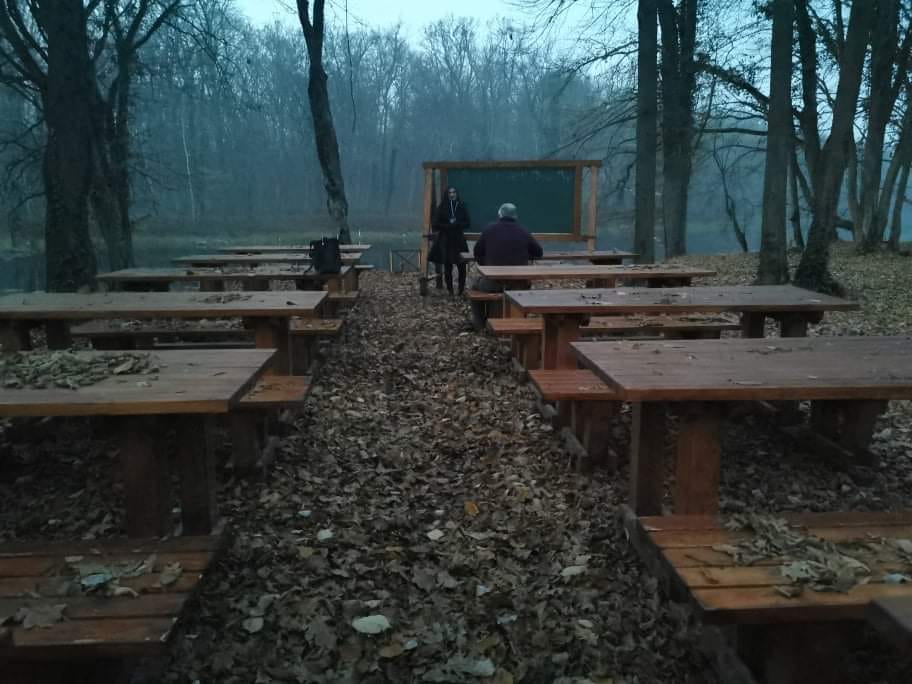
14.00 – visit to Otok, Bio-ecological centre Virovi: walk on the educational trail, kayaking, canoeing, cycling
16.00 – Nijemci, ride on the tourist boat Sv. Katarina from the centre of Nijemci according to the desired direction (reservation required)
18.00 – Vinkovci, tour: Vinkovci Town Museum, Birth house of Ivan Kozarac, overnight stay
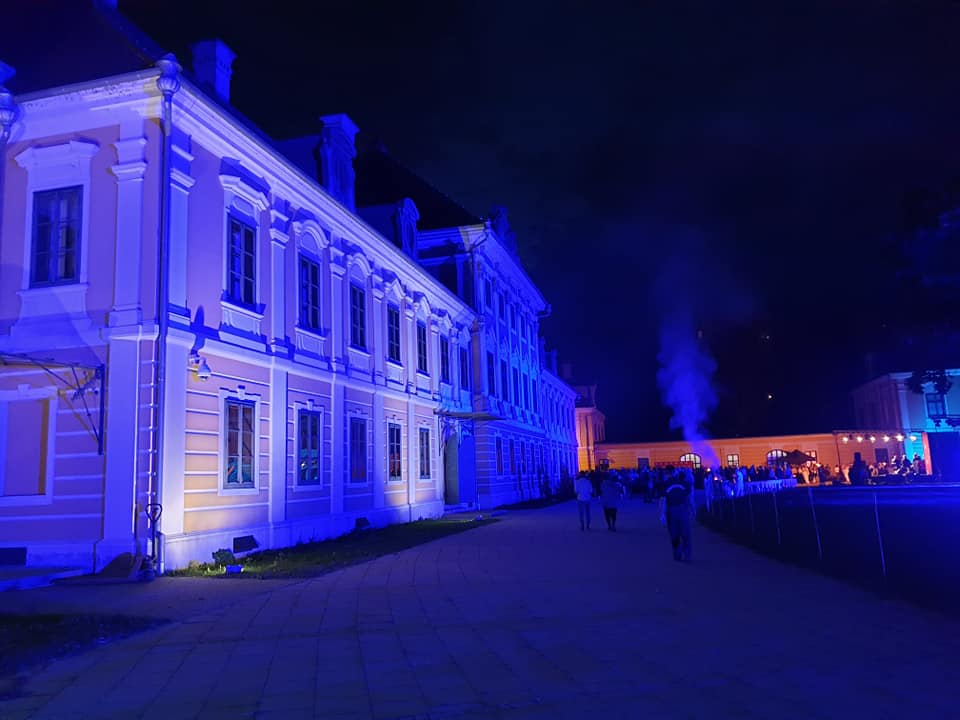
Day 2
09.00 – visit to Vukovar
09.30 – Tour of the Eltz castle
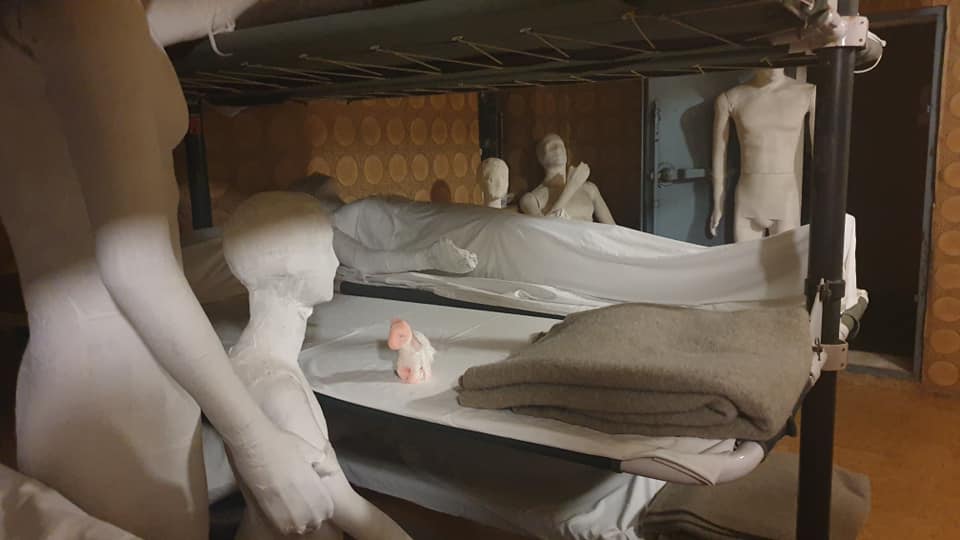
10.30 – War hospital museum
11.30 – Franciscan museum
12.30 – Ride on the Danube
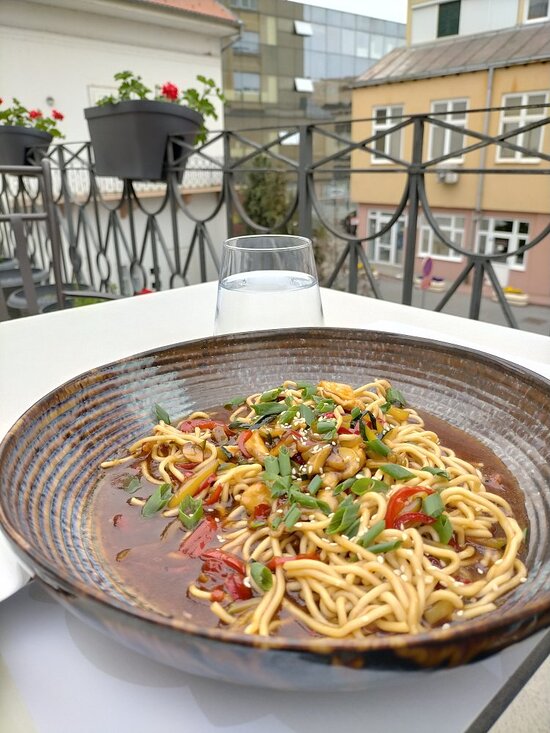
13.30 - Lunch, recommendation: „Lola“
14.30 – 16.30 – Afternoon city tour: Zadruga Vrhunsko vukovarsko, Vukovarsko pivo, Street art
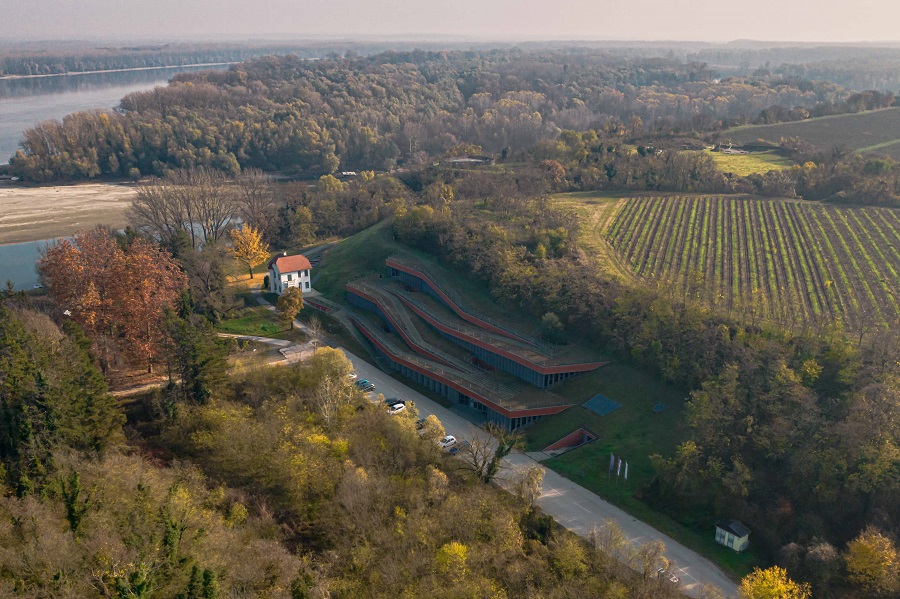
16.30 – Vučedol Culture Museum
17.30 – Tour of the Memorial house Ovčara
18.00 – Departure to Ilok
19.00 – dinner
20.00 – Tour and tasting: Wineries/Vinarija: Ivan Čobanković, Papak
Ilok, overnight stay
Day 3
09.00 - A tour of the medieval core of Ilok: the church of St. Ivana Kapistran with the monastery, Ilok Interpretation Center, Ilok City Museum
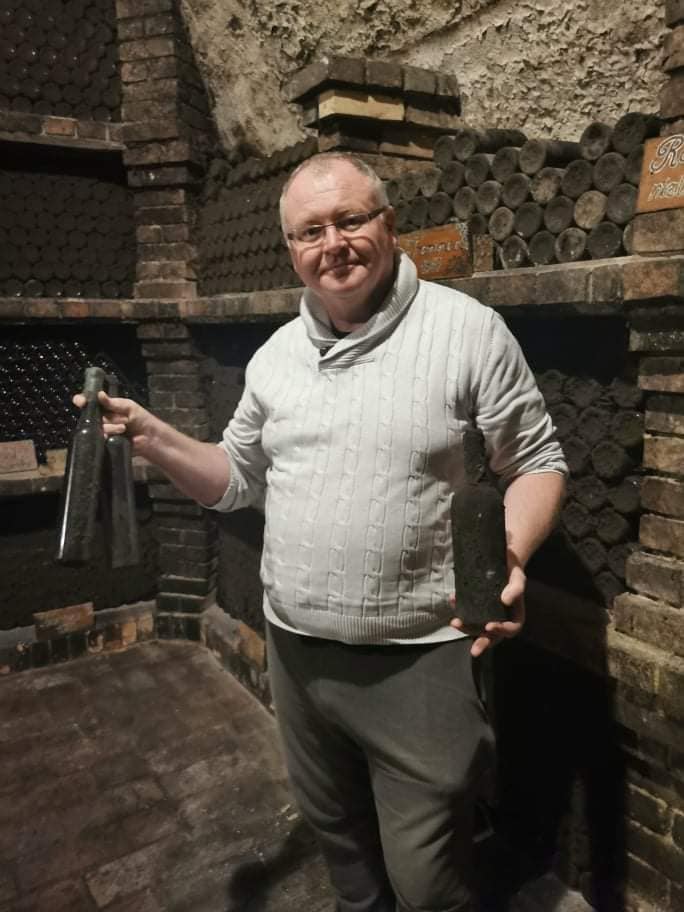
11.00 - Tour of Ilok cellars: tasting
12.30 – Lunch, recommendation restaurant of the hotel Dunav
14.00 – Principovac
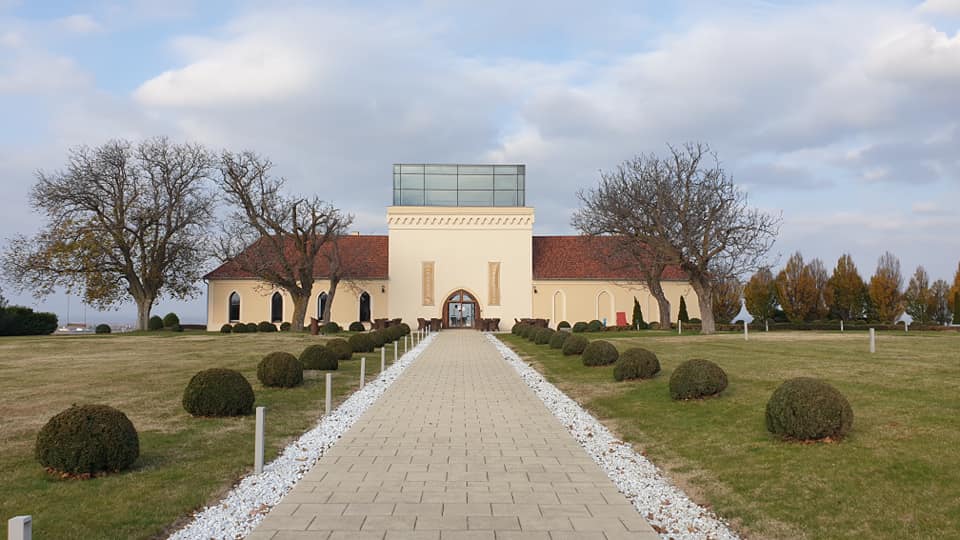
Departure to Osijek-Baranja County
NOTE: the program is proposed in a way to visit the key attractions and experiences of Vukovar - Srijem County in 3 days. The proposed facilities can be visited for a longer, more relaxed period of time, according to the choice of the traveller.
Day 4.
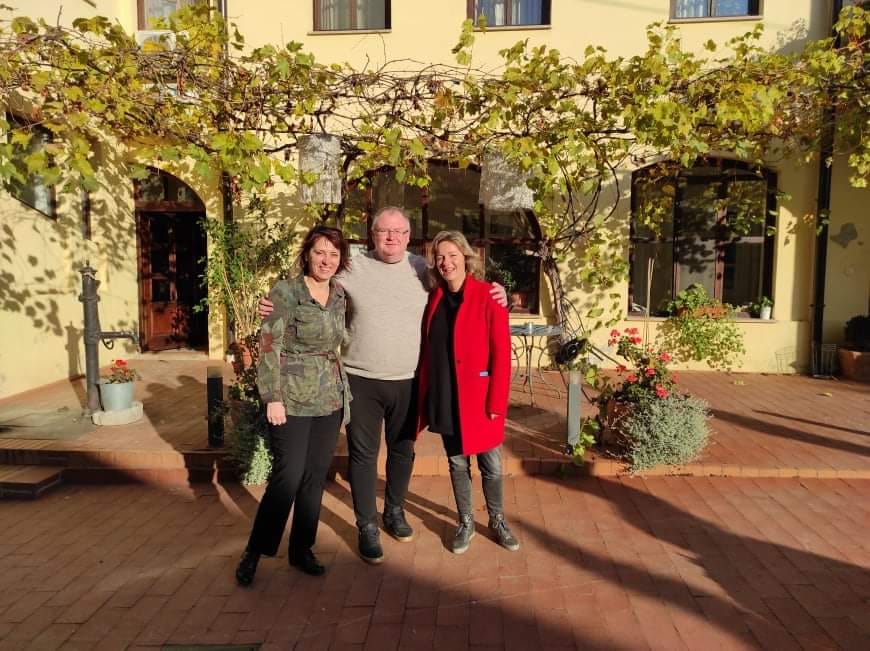
16.00 Arrival in Osijek, check in Hotel Osijek 4* / Guesthouse Maksimilian 3* / Hotel Boutique Tvrđa 4* / Hostel Stara Pekara (or other)
17.30 Sightseeing of the city centre: discovering Picasso along the most beautiful river promenade in Croatia, Bridge of Youth, finding traces of Freemasonry and tour of Co- Cathedral; local craft beer tasting (Von Becker’s, Runda, Beertija, Gajba, etc.)
20.00 Dinner Crna svinja (meat), Čepin / Slavonska kuća (traditional), Osijek / Lumiere
(international, city center), Osijek / Hotel Osijek – Zimska luka restaurant (international,
city center), Osijek / Čingi lingi (traditional), Baranja-Bilje / or other
Day 5.
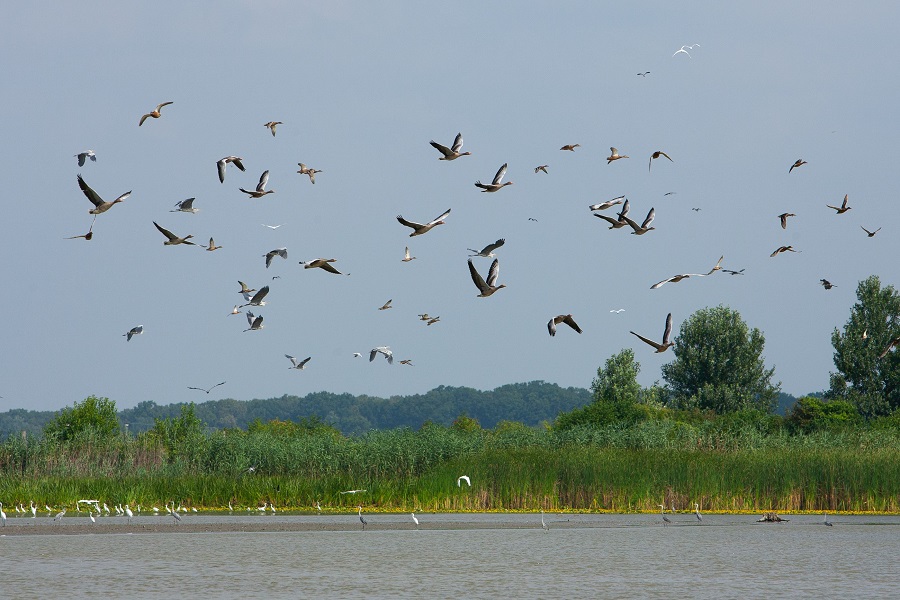
8.30 Breakfast
10.00 Kopački rit Nature Park – Heart of the Danube, boat ride, interpretation centre or
boardwalk stroll, https://pp-kopacki-rit.hr/index-en.html
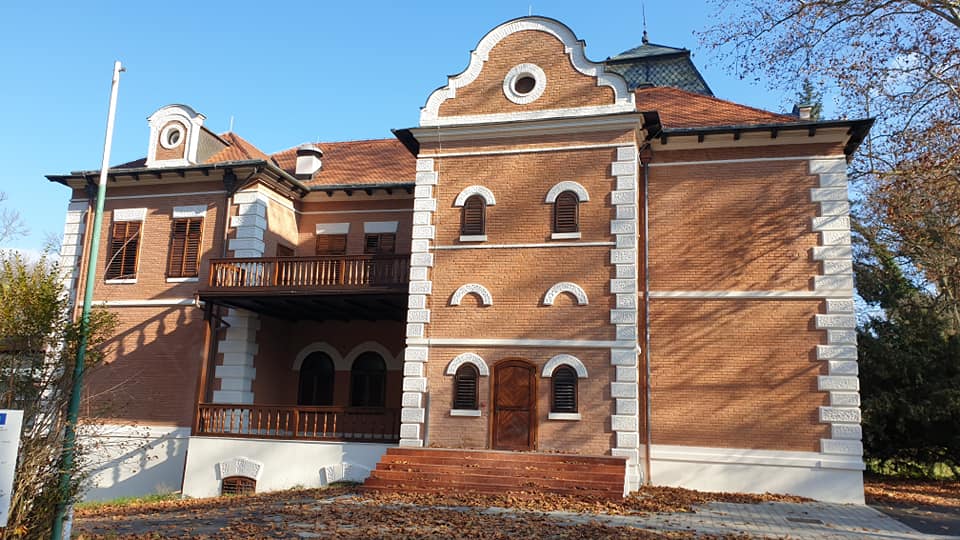
11.00 Tikveš castle sightseeing
12.00 Visit to Asztalos Art Ceramic Atelier, Suza; option: workshop can be arranged
https://www.facebook.com/Asztalos-Keramika-113478782041244/
12.30 Discovering the typical style old wine cellars in Zmajevac village
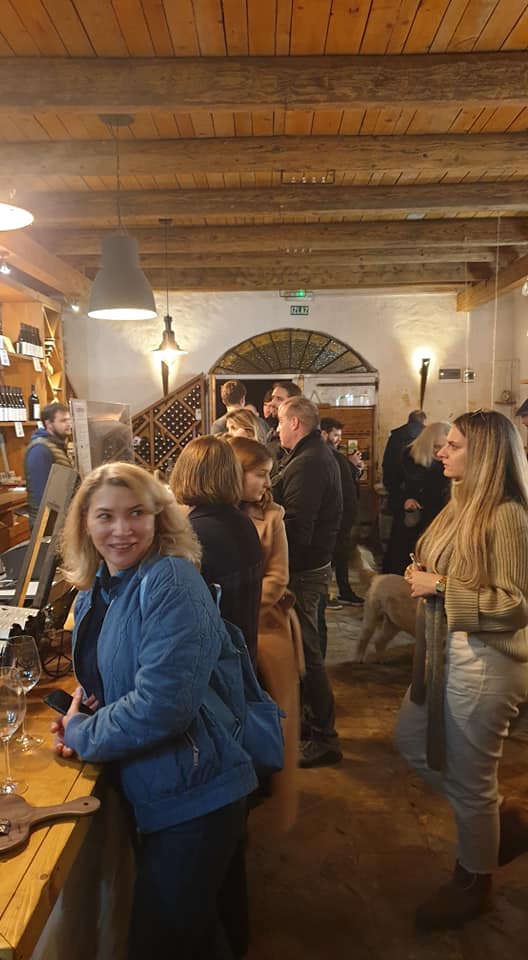
Wine tasting and lunch, Josić winery, http://josic.hr
14.00 Batina Battle Memorial Complex / WW II - Red Army
https://en.wikipedia.org/wiki/Battle_of_Batina
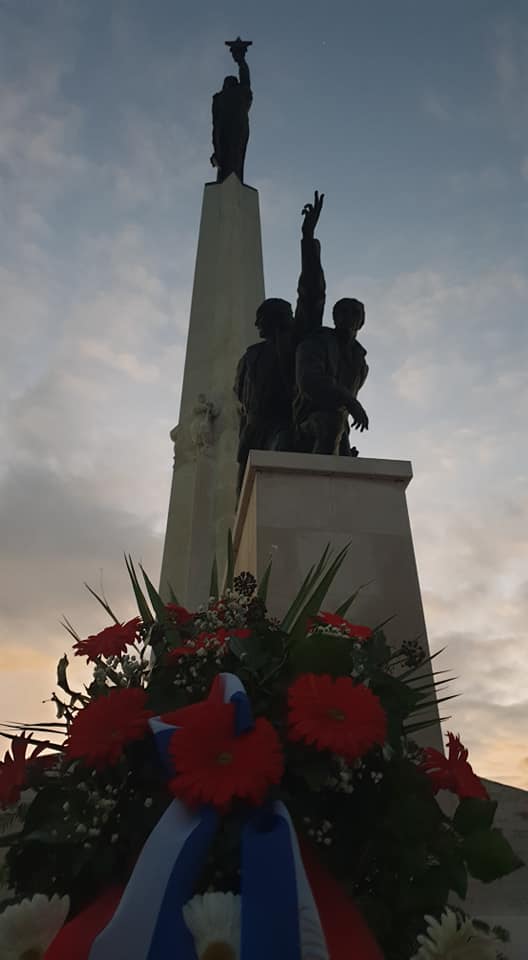
Sightseeing point over the Danube and three countries - Croatia, Serbia, Hungary
15:00 OPG Matijević family farm in Suza village, tasting of local products with PGI certificate, http://www.kulen-matijevic.hr/
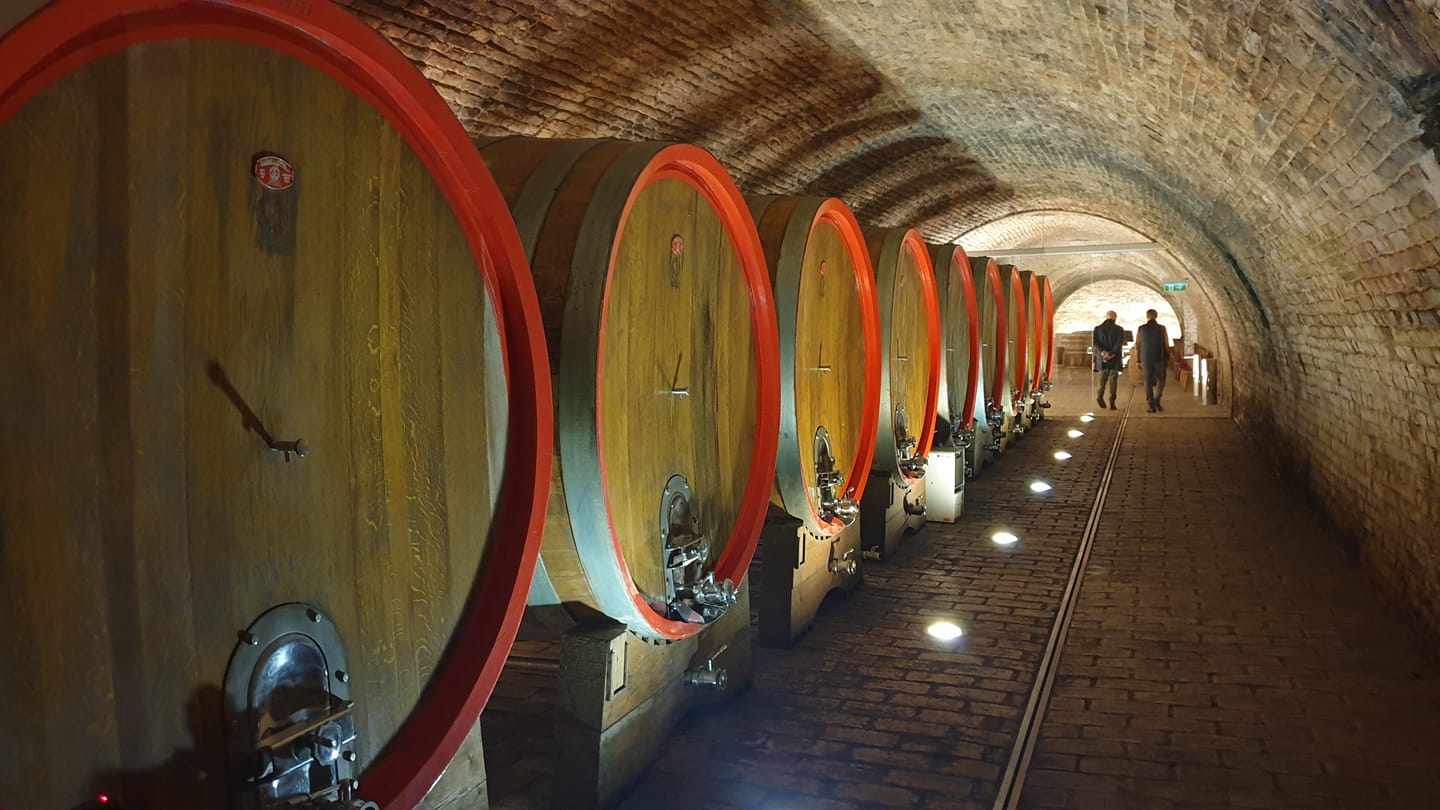
15.45 Belje wine road in the Bansko brdo hill, rolling wine yards and the breath-taking views of southern Baranja and Osijek in the background
16.30 Arrival to Osijek, break
19.00 Sightseeing of the Tvrđa, old town
Other options for Baranja:
- Village “museum” - Ulica zaboravljenog vremena / Street of forgotten time, Karanac
https://www.baranjska-kuca.com/
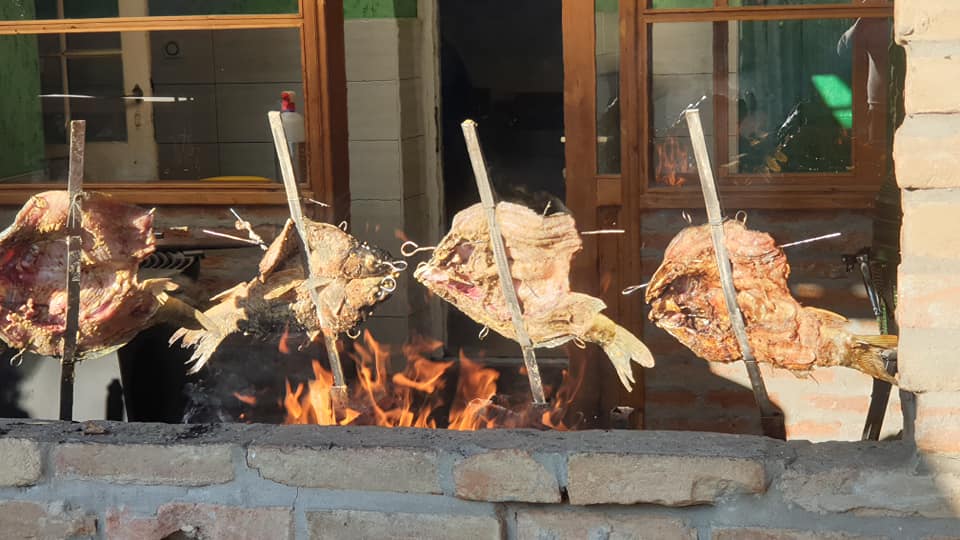
- Lunch in Baranjska kuća in Karanac (traditional), https://www.baranjska-kuca.com/
- Lunch in Hotel Lug (top chef), https://hotellug.hr/
- Vinarium Borarium, Zmajevac – collection of Baranja’s wine history
- Guided hiking on Bansko brdo with “Landranje team”
(https://www.facebook.com/LandranjeBaranjom/)
- Discovering Zlatna Greda, the forest lodge with adrenalin park and picnic site in the nature park Kopački rit, http://zlatna-greda.org/en/
Day 6.
Erdut-Aljmaš-Dalj area:
8.30 Breakfast
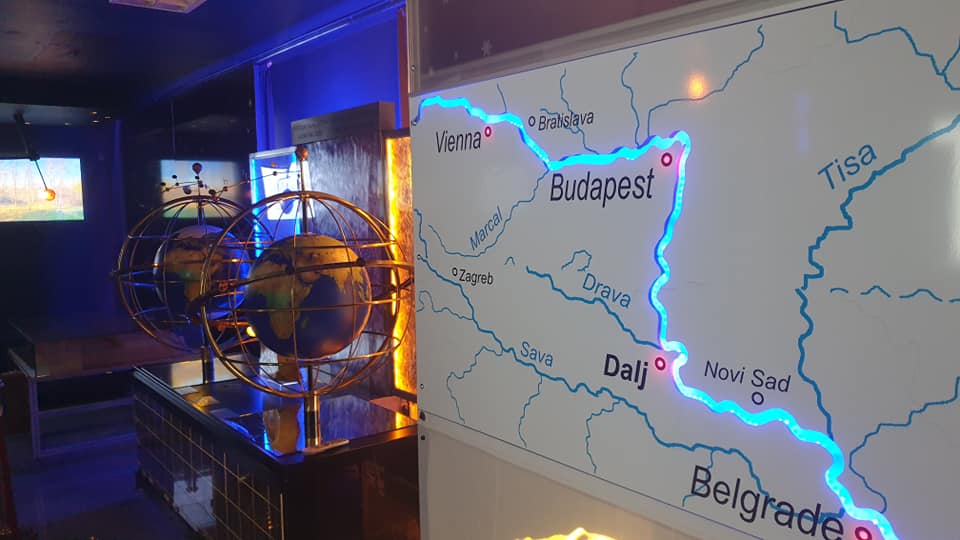
Milutin Milanković Cultural and Scientific center, http://www.milutin-milankovic.com/
10.30 One of the family run boutique wineries / Antunović – Dalj (https://vina-antunovic.hr/?lang=en) , Brzica – Erdut (https://www.brzica.com/), Magistra – Erdut (https://www.facebook.com/Vina-Magistra-286222865311970, Siber – Erdut (https://vinasiber.com/), Danubio (https://www.danubio.hr/, offers accommodation), Janečić (https://vinarija-janecic.hr/)…
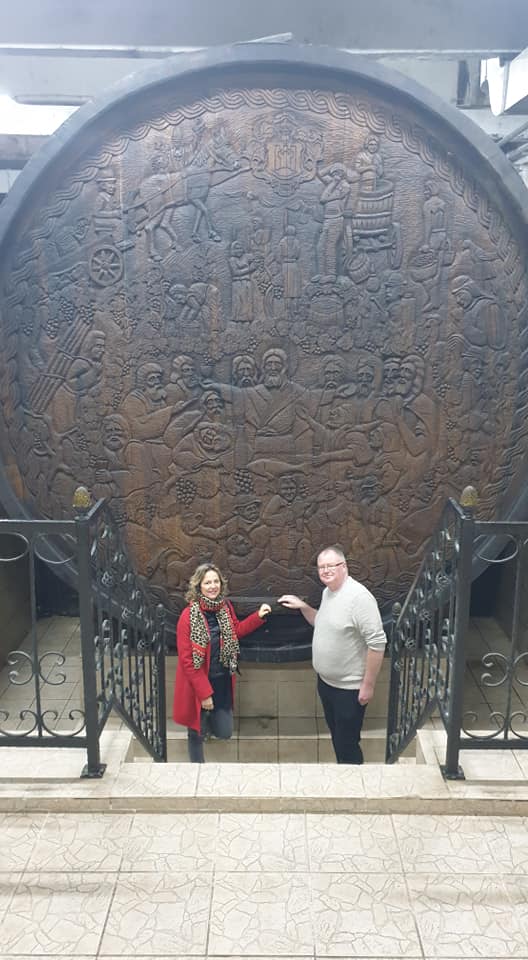
12.00 Visit to Erdut vineyards / Erdutski vinogradi, historic wine estate
https://www.erdutski-vinogradi.hr/index.php/en/
Visit to Erdut tower
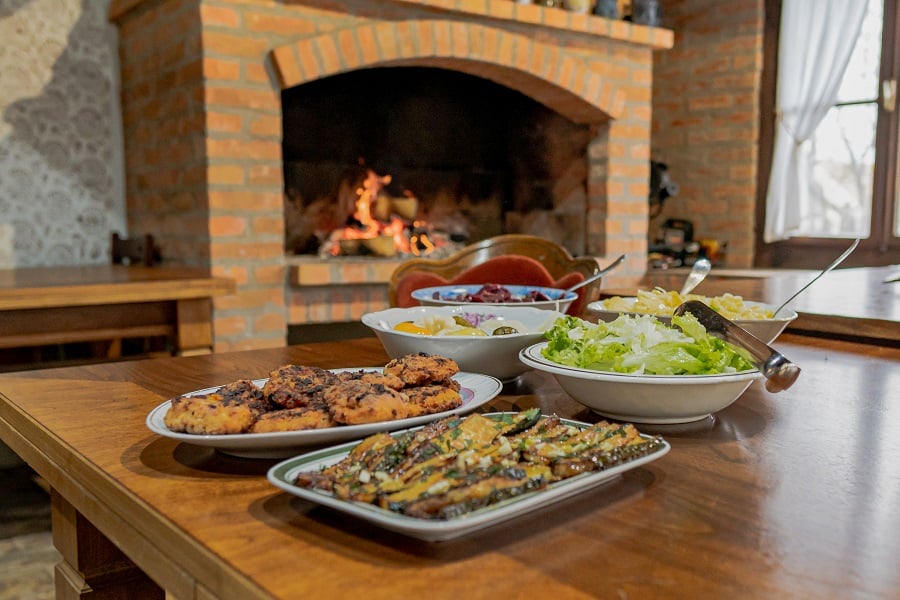
Lunch – OPG Etno kuća Stari dud / Zlatica Blagojević
https://www.facebook.com/etnokuca.staridud.1
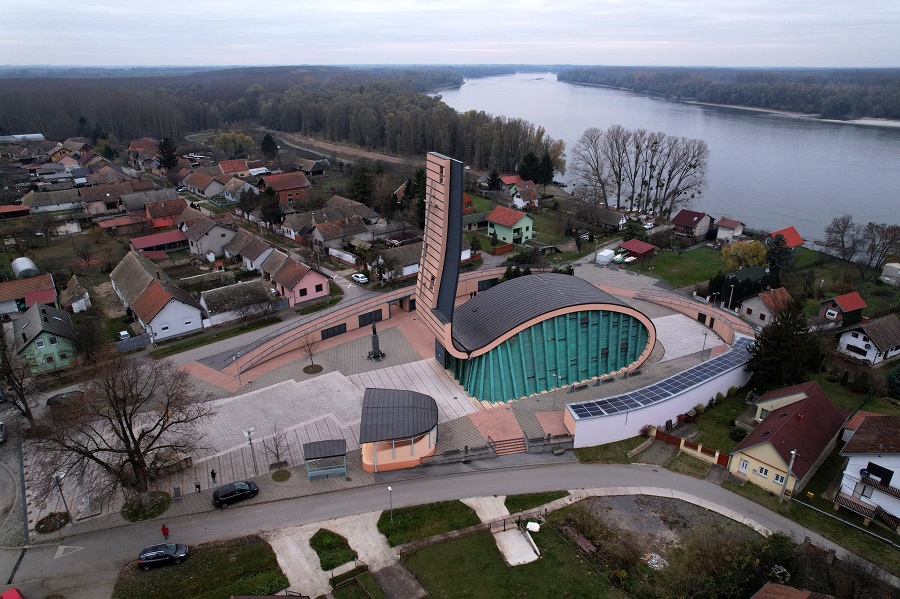
Visit to Aljmaš – pilgrimage site, Lady of Shelter, Marian shrine since 1704
Return to Osijek, free time
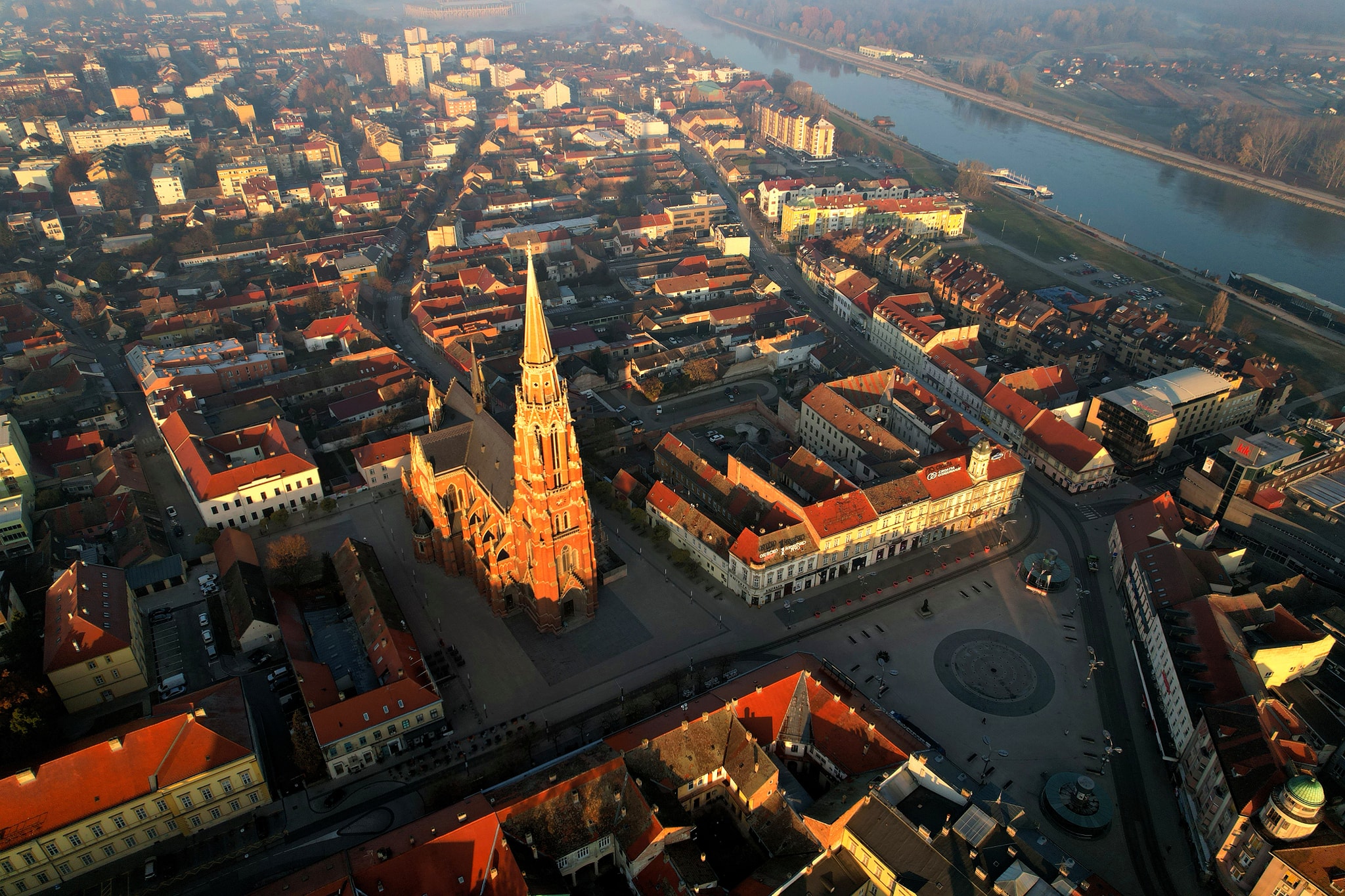
Day 7.
Đakovo:
Breakfast
9.30 State stud farm Đakovo – Ivandvor, http://ergela-djakovo.hr/en/about-us/ivandvor-2/
10.30 Visiting sacral cultural heritage - Cathedral of St.Peter
http://tzdjakovo.eu/index.php/en/znamenitosti/muzeji/item/34-st-peter-s-cathedral?rid=175
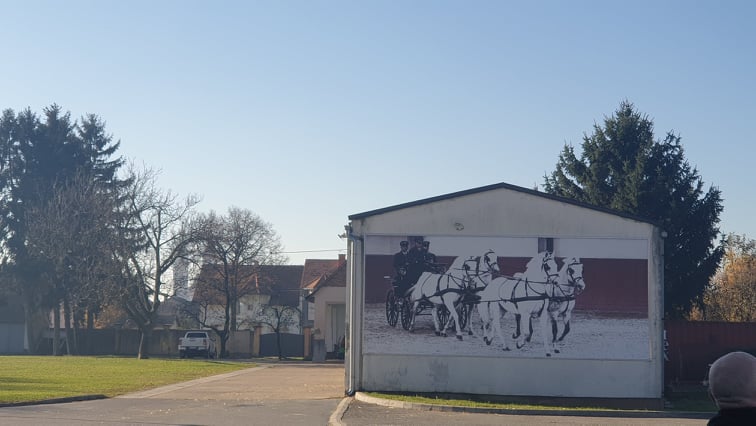
State stud farm Đakovo – the stallion station, http://ergela-djakovo.hr/en/about-us/stallion_station/
Lunch, departure
Optional: visit to Wine cellar of Đakovo-Osijek Archdiocese and to family-owned wineries in Trnava and Mandićevac wine area surrounding Đakovo (fantastic views!). In case of visit during spring and summer we recommend also visit to Borovik lake.
I have personal and recent experience of just how amazing eastern Croatia is on a 6-day tour. Learn more in Time to Tell the Truth about Slavonia Full of Life.
Gov't Continues to Strongly Support Slavonia, Says PM
ZAGREB, 2 Dec 2021 - The eastern city of Osijek marked its day on Thursday with a special City Council session at which Prime Minister Andrej Plenković said the government would continue to strongly support the region of Slavonia, Baranja, and Srijem through the policy launched five years ago.
He said that five years ago the government concluded that it was necessary to immediately do the utmost for the region's welfare and that that was the backbone of the policy for a region that was devastated by the Greater Serbia military aggression and which suffered major economic and population problems.
"We felt it was time to offer a strong hand of support to Osijek and Slavonia from the national level, and after five years of that policy, the results can be seen. It's visible that that policy was the right one and useful for citizens in all Slavonia counties, notably in Osijek-Baranja County, which is the engine of the modern development of all Slavonia."
Plenković recalled the many investment projects financed by the government and the EU.
They are all messages that we wish to make Osijek a real regional center of eastern Slavonia, a center of the academic community, culture, the economy, and modern technologies which will attract young people, he said.
He recalled that during the pandemic, government measures helped to save 17,000 jobs in Osijek, with 2,800 companies receiving HRK 242.3 million for wages in the private sector.
Plenković also said that Croatia's entry into the euro area would bring further investment.
Mayor: Biggest budget ever for the continuation of economic growth
Osijek Mayor Ivan Radić (HDZ) said the City Council recently adopted the biggest budget in the city's history, HRK 1.08 billion, and that it would facilitate the continuation of economic growth and development, the strengthening of the pre-school and school education system, the maintenance of the local infrastructure, and care for the most vulnerable groups.
He said a good absorption of national and EU funds was a priority for the realization of city projects, adding that funds from the National Recovery and Resilience Plan would also be tapped.
For more on politics, follow TCN's dedicated page.
PHOTOS: Spectacular Kaleidoscope Lights of Osijek City Day and Advent 2021
December 02, 2021 – A spectacular light show exploded across Ante Starčević square in Osijek this evening, welcoming hundreds of visitors to Osijek City Day and to the opening of Osijek Advent 2021. Among those gathered to witness the colourful display was the Croatian Prime Minister, Andrej Plenković.
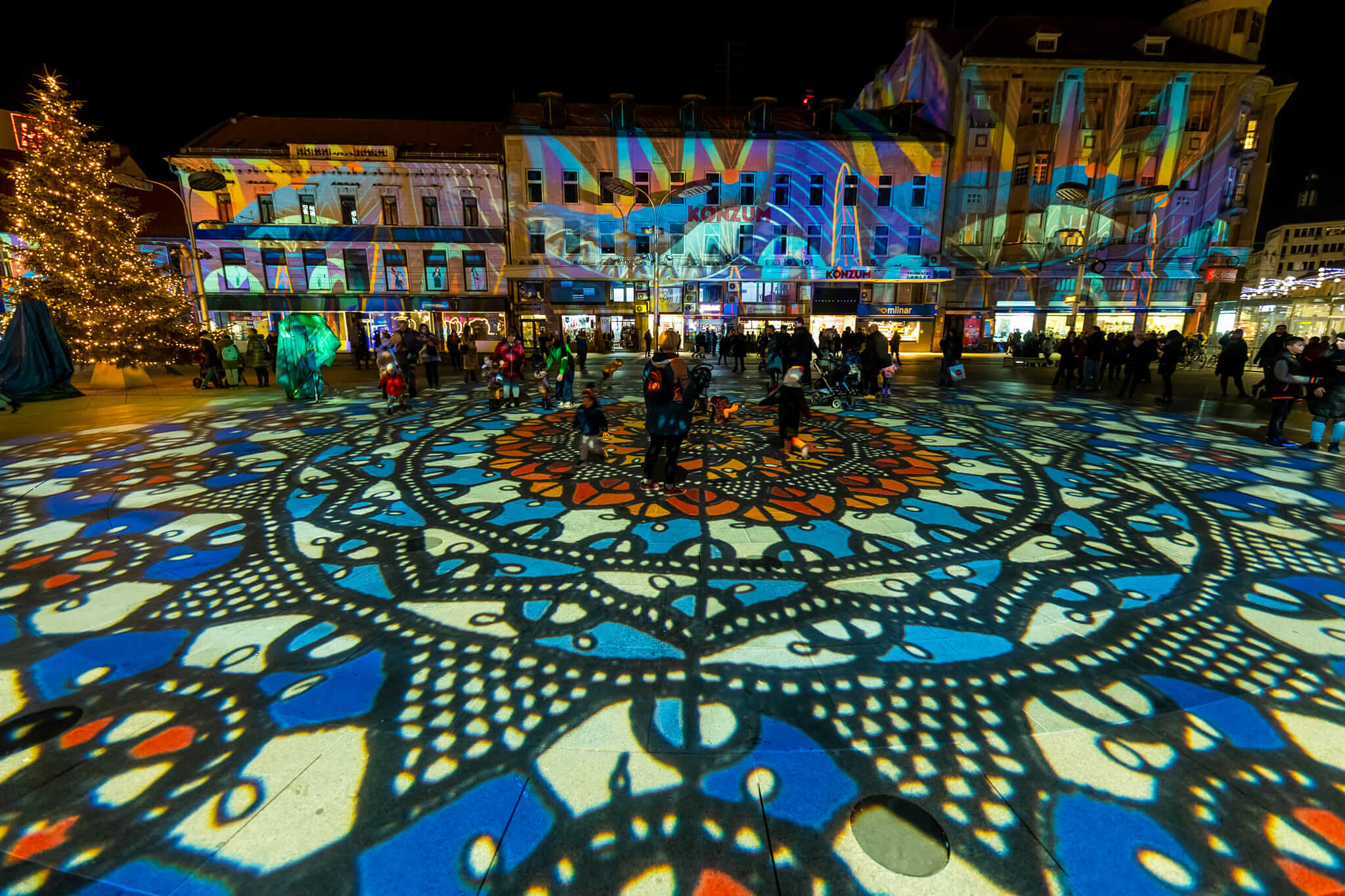 © TZ Grad Osijek
© TZ Grad Osijek
In recent times, Osijek's Ante Starčević square has seldom looked so thrilling. It is a wide and open city square - the only place in Osijek where the city tram lines all meet. Except for one modern sculpture and a statue of Ante Starčević, the square is floored with featureless concrete. The fine facades of surrounding Austro-Hungarian buildings have seen better years. In many instances, these historic frontages are cheapened by gaudy branded signage and advertisements.
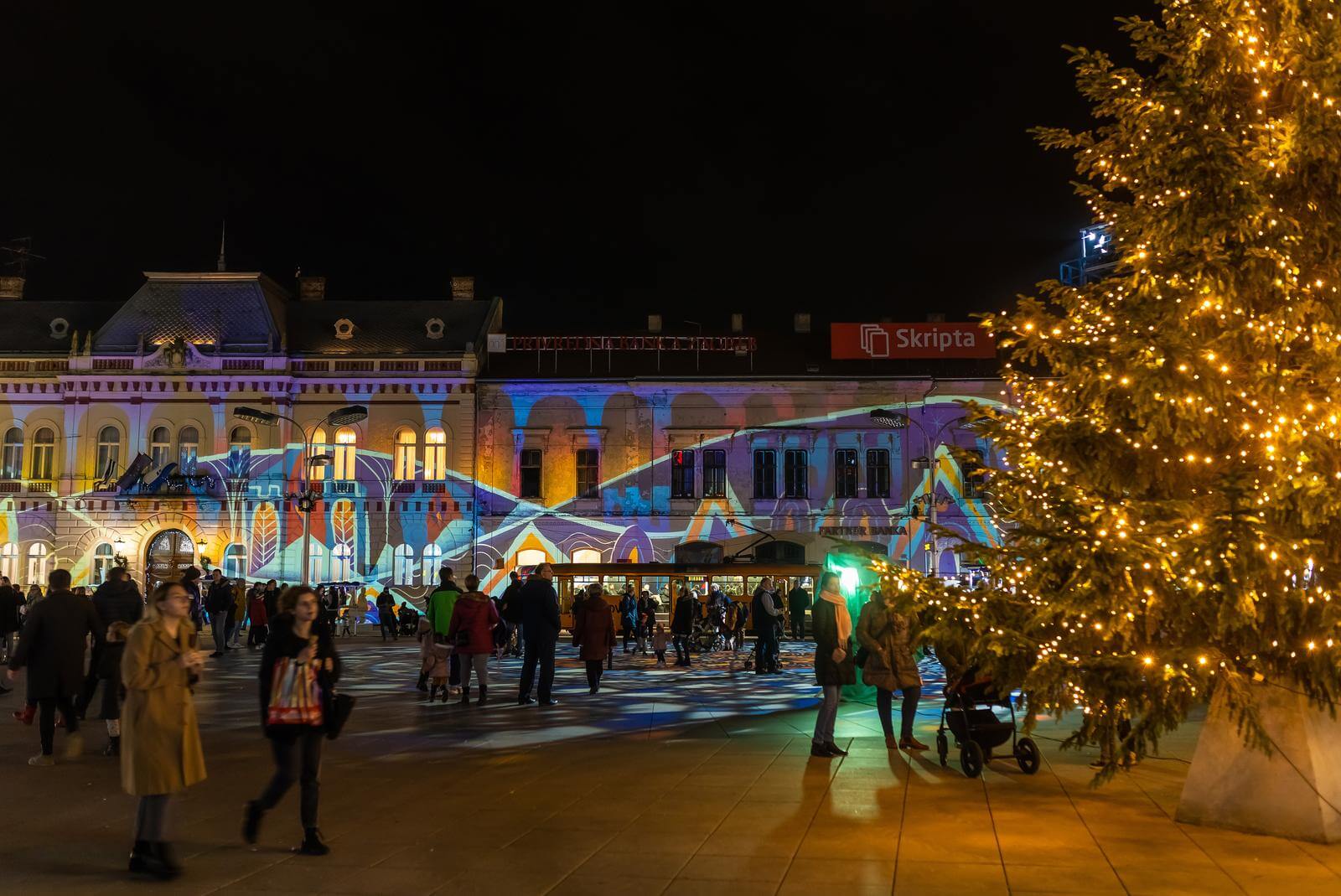 © Davor Javorovic/PIXSELL
© Davor Javorovic/PIXSELL
But, tonight, all the unsightly modern scars were hidden as an ocean of patterns and colours danced across the square. Children skipped along new pathways created by the brilliant lights' design. Now in its third year, these bright embellishments are part of the Kaleidoscope Festival of Lights. The arrival of its magical scenes heralds not only the start of this year's Osijek Advent but also marks Osijek City Day 2021.
Osijek City Day - 2 December
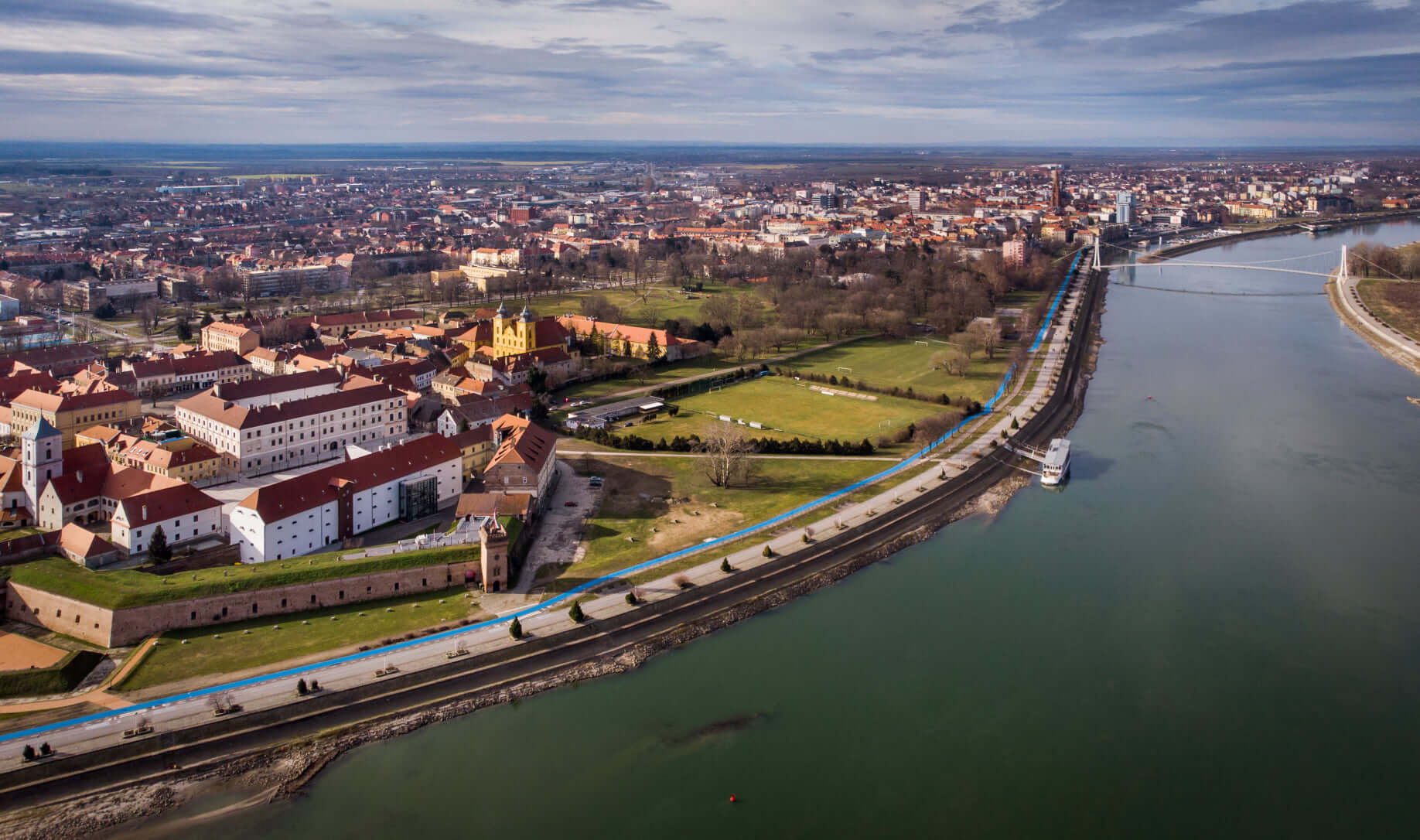 From above, Osijek's Tvrda and the Drava river © Mario Đurkić / Horizont solutions / TZ Grad Osijek
From above, Osijek's Tvrda and the Drava river © Mario Đurkić / Horizont solutions / TZ Grad Osijek
People have lived on this part of the Drava river for millennia. But, quite often, the modern life of Osijek city is only viewed as having begun after the Ottomans were removed by the Battle of Mohács. From 1687, Osijek and the eastern part of Croatia were part of the Habsburg Empire. But, Osijek remained close to the border of the new encroachment on Ottoman territory. Defensive fortresses were built along this line of defence, in Stara Gradiška, Osijek and Slavonski Brod in Slavonia and in Petrovaradin in Syrmia/Srem (Serbia).
Today, Osijek's fortress - Tvrđa – contains the largest collection of Baroque buildings in Croatia. It is a fantastic and picturesque location. There, Osijek's old city walls spectacularly overlook the Drava river. But, back when the city's defence was all-important, these walls made it difficult for Osijek to expand. Progress and growth proved impossible to hinder and, with the threat of the Ottomans becoming ever smaller, the population of Osijek simply began to settle outside the walls of Tvrđa. Indeed, today, residents of the city regard Osijek as having three centres – Lower Town, Tvrđa and Upper Town aka Ante Starčević square.
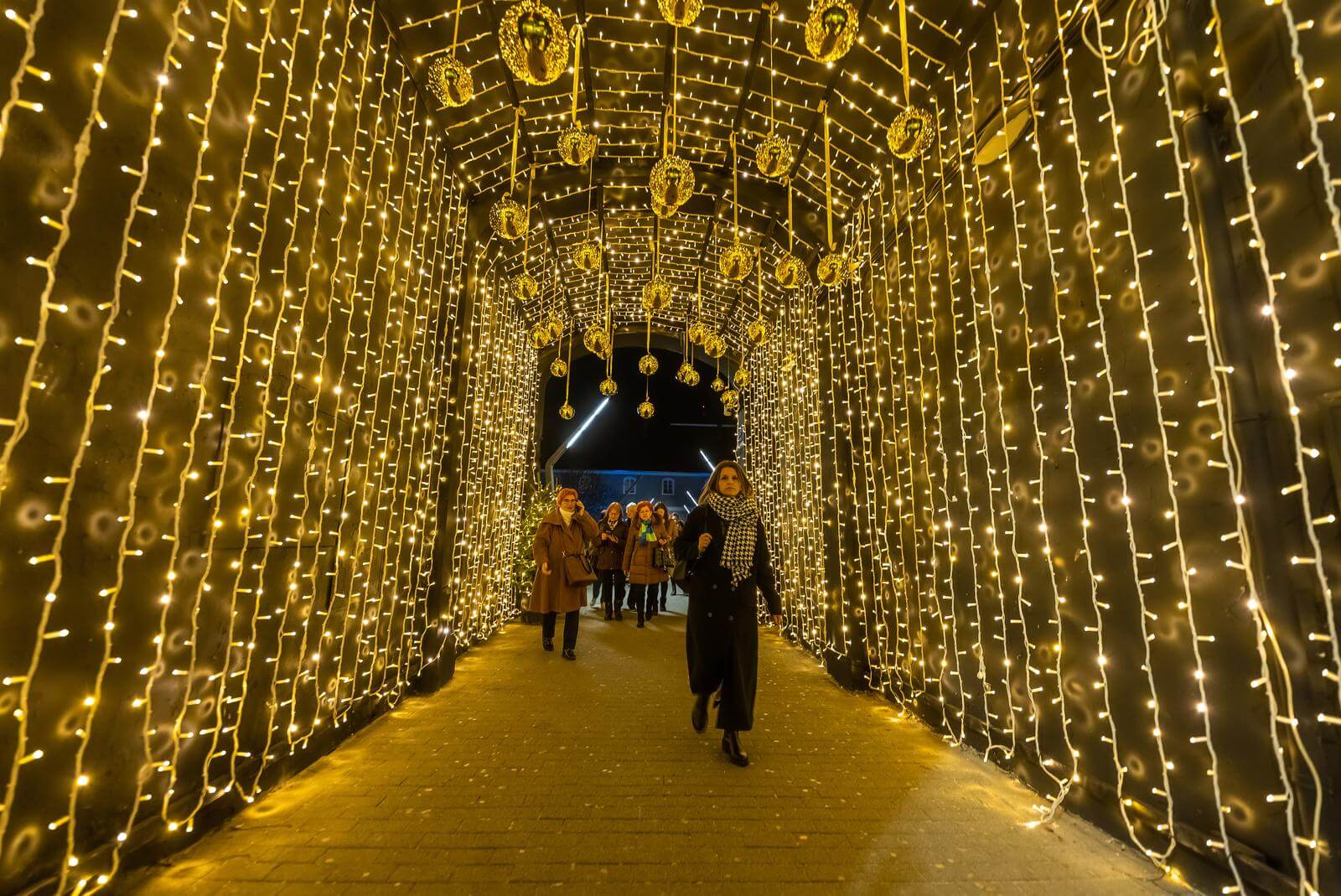 Lights in Upper Town turned on as part of Osijek City Day 2021 © Davor Javorovic/PIXSELL
Lights in Upper Town turned on as part of Osijek City Day 2021 © Davor Javorovic/PIXSELL
At the beginning of the 18th century, separate magistrates resided over Osijek's Lower and Upper Towns, effectively marking them as independent city municipalities. In order to gain status as a free and royal city, local authorities were eventually persuaded to unify the different municipalities on 2 December 1786. Since then, 2 December has been celebrated as Osijek City Day.
Kaleidoscope Festival of Light and Osijek Advent 2021
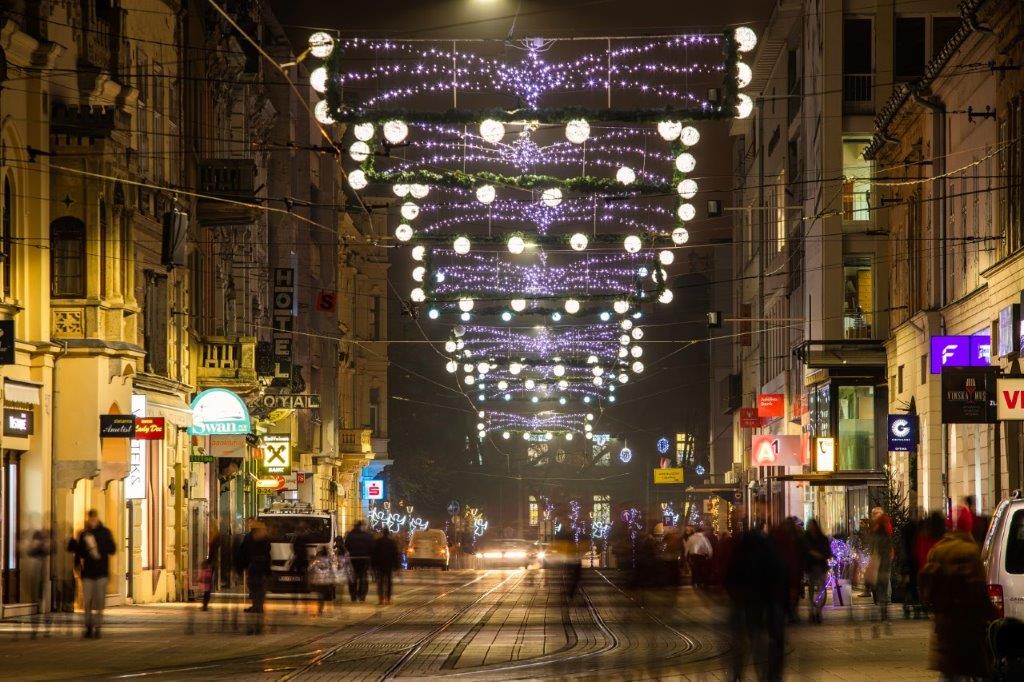 © TZ Grad Osijek
© TZ Grad Osijek
The incredible light show on Ante Starčević square is just one part of an Advent manifestation that, like the city itself, stretches long down the side of the Drava river.
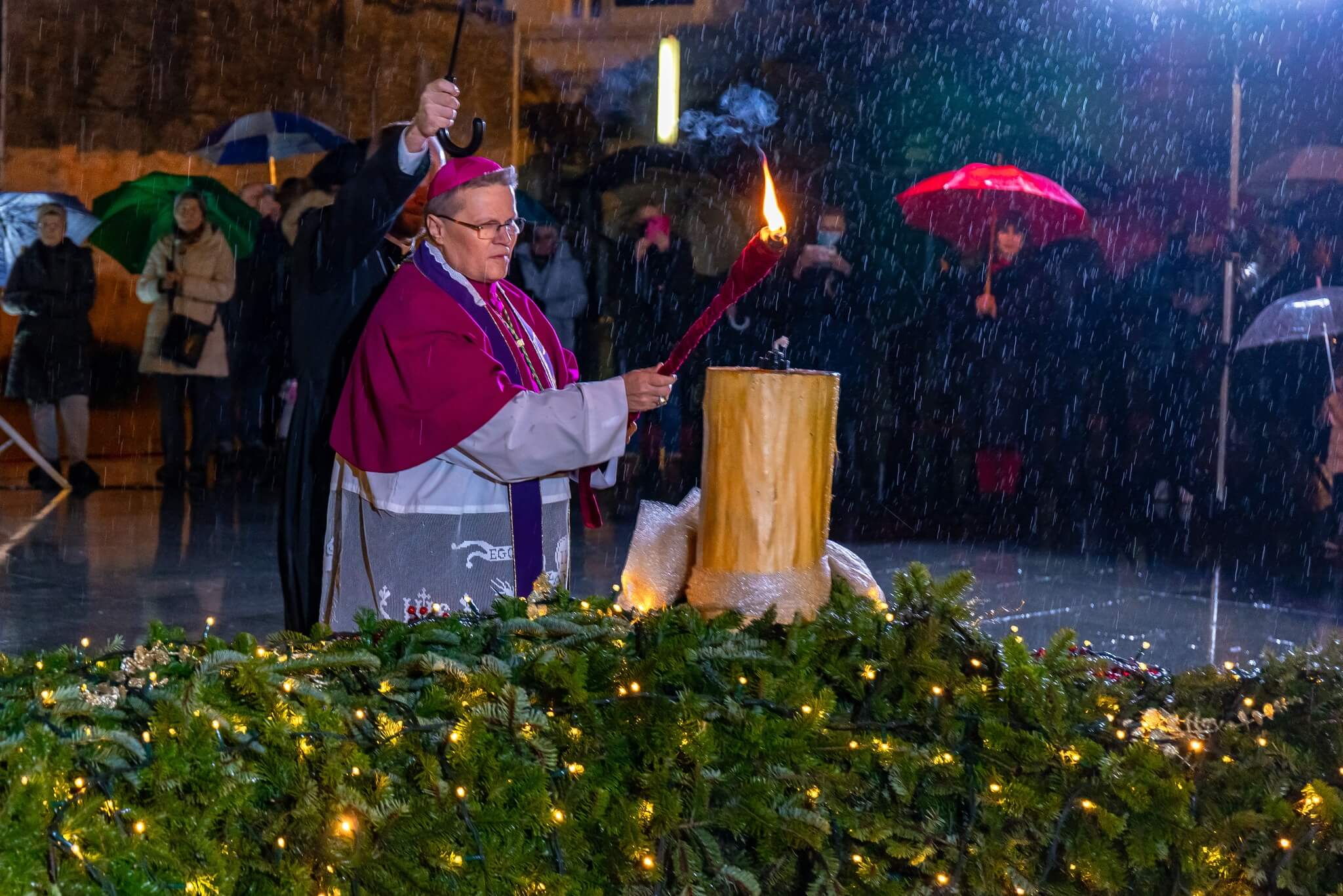 © TZ Grad Osijek
© TZ Grad Osijek
The first candle of Advent 2021 was lit by the Archbishop of Đakovo-Osijek Đuro Hranić on Sunday 28 November. Osijek City Day celebrations are the second key milestone of the Christmas holiday season. City-wide Christmas lights were formally turned on today at the Croatian National Theatre Osijek.
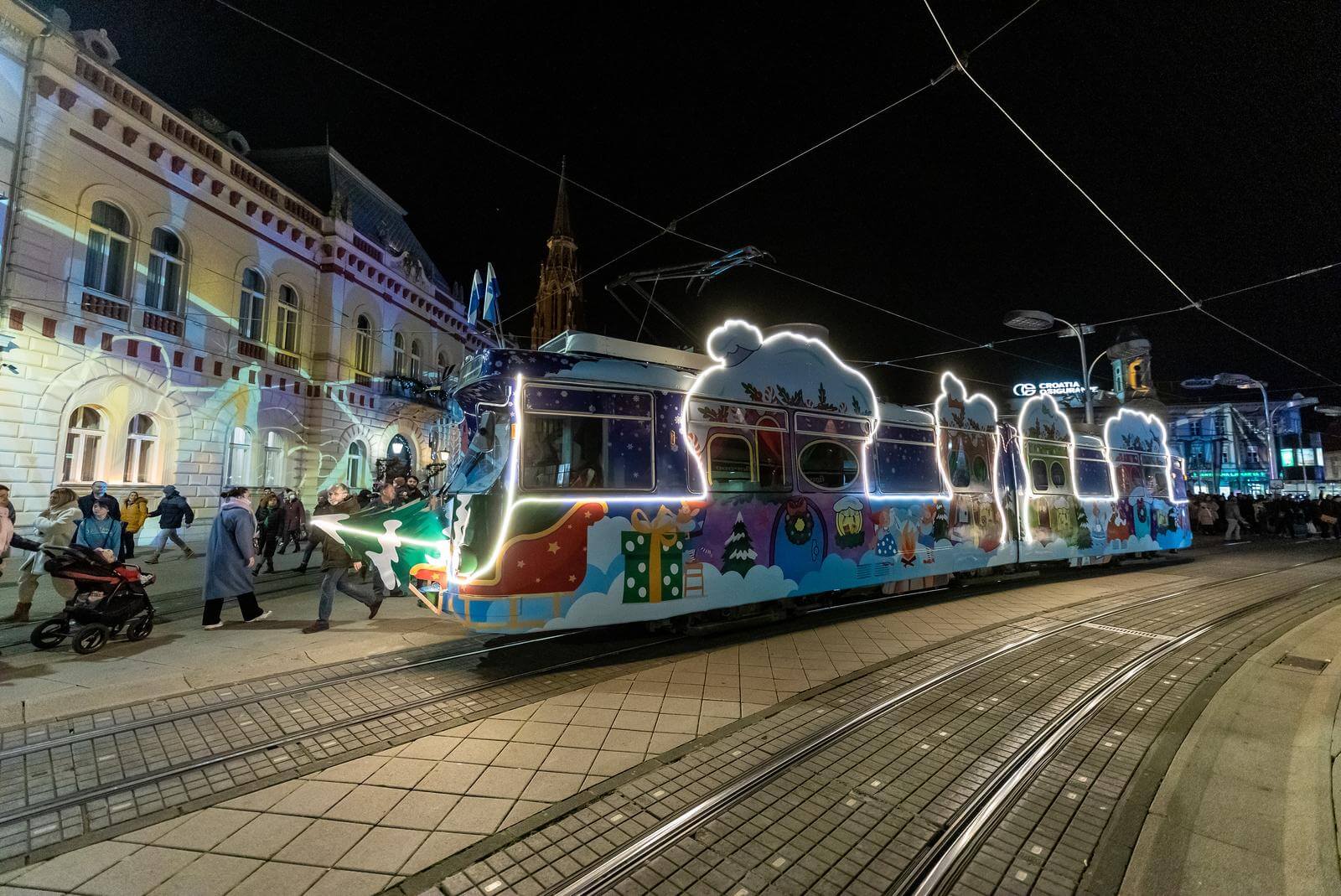 © Davor Javorovic/PIXSELL
© Davor Javorovic/PIXSELL
Osijek Advent 2021 includes the return of the Kaleidoscope Festival of Light and Osijek Advent Tram - which is visited by almost 15,000 people each season. Christmas lights extend down European Avenue, passing some of the city's most grandiose Austro-Hungarian architecture. Thereafter, the trail comes 'off road' and takes you through the trees of King Tomislav Park. Next, Tvrđa assumes the focal point of Advent, with a Winter Lookout on the roof of the Cultural Centre, the Museum of Fine Arts, the Sokol ice rink and the tallest Ferris Wheel in Croatia being key highlights.
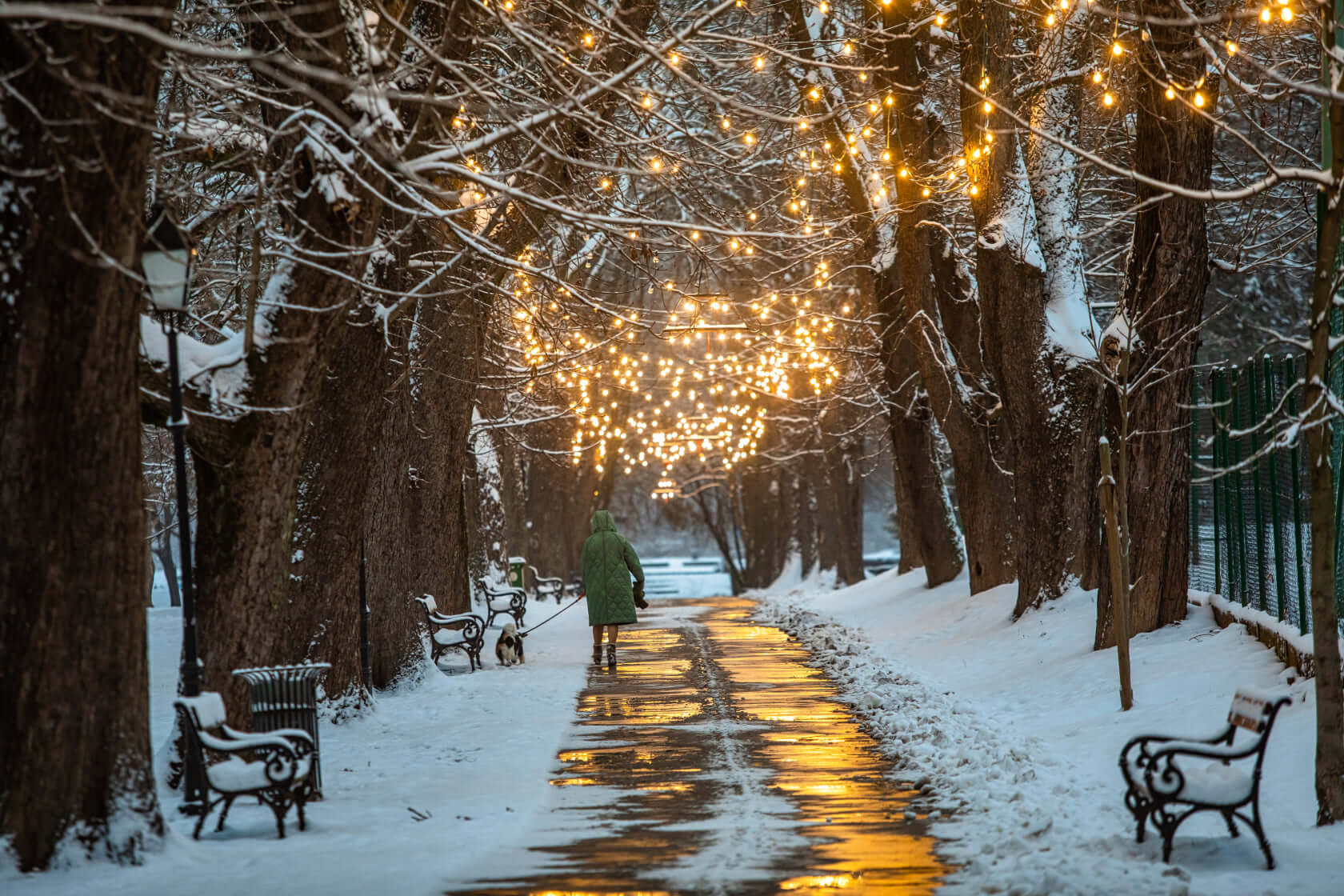 Photo from Osijek Advent 2020 © TZ Grad Osijek
Photo from Osijek Advent 2020 © TZ Grad Osijek
If you want to read more about Osijek, see the Total Croatia guide here. And, if you want to keep up with news from Osijek, bookmark Total Croatia News's Osijek pages here
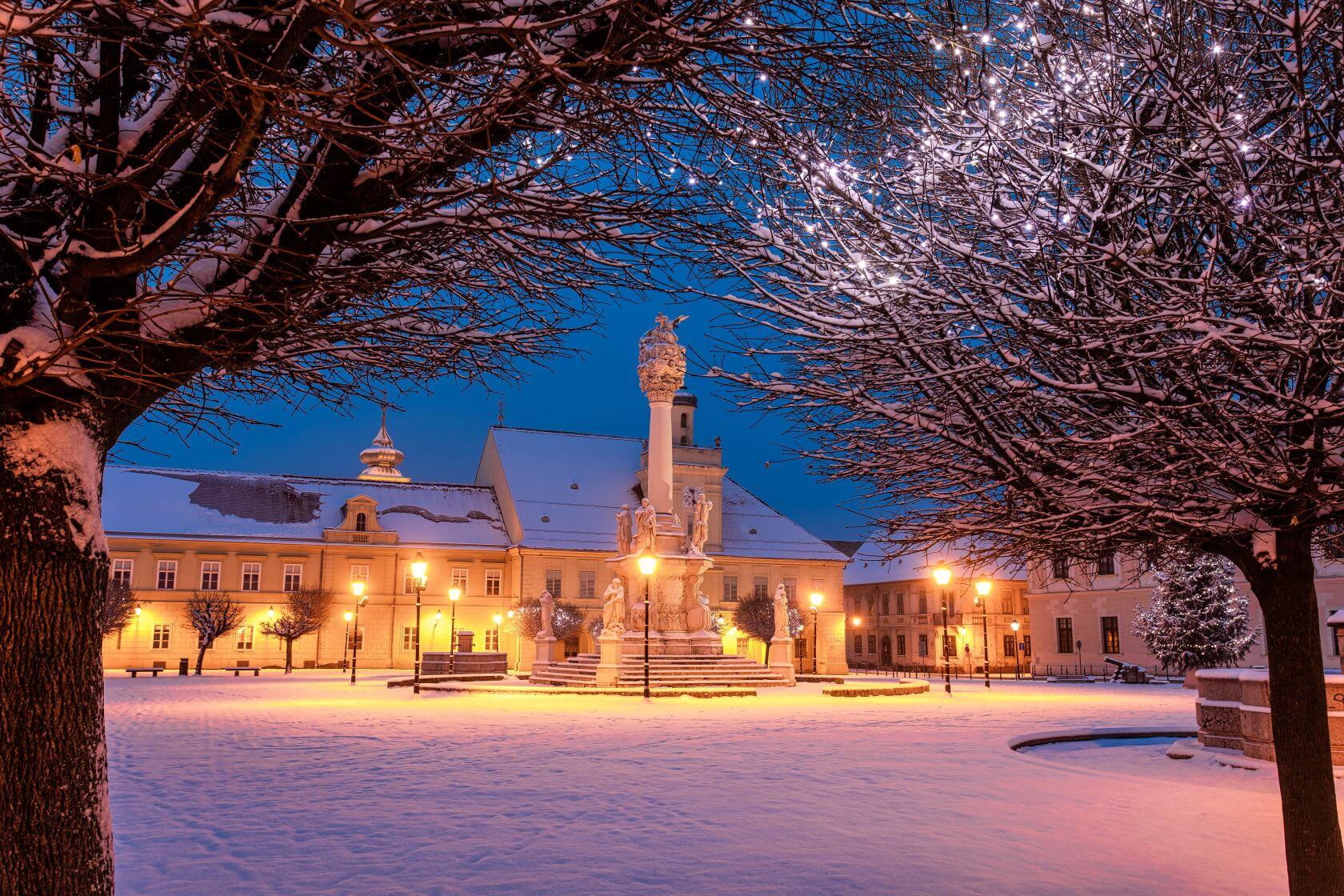 Photo from Osijek Advent 2020 © TZ Grad Osijek
Photo from Osijek Advent 2020 © TZ Grad Osijek
IBTM Barcelona: Great Interest in Slavonia as an Incentive Destination
December 2, 2021 - The Croatian National Tourist Board is presenting the Croatian tourist offer as part of the IBTM Barcelona, which has been held until today. Exceptional interest during the event was expressed for Slavonia as an incentive destination that represents something different on the market.
After last year's online edition, the fair is being held in person again this year, so numerous meetings of domestic and foreign partners from the business travel segment have been held, reports Turističke Priče. Namely, in addition to the Croatian Tourist Board as the main exhibitor, seven co-exhibitors present their offer at the fair, including the congress offices of Zagreb, Dubrovnik, and Opatija and Valamar, Liburnia Hotels & Villas, Le meridien Lav Split, and Spektar putovanja.
According to the first feedback from the IBTM Barcelona, many partners from the Polish and Ukrainian markets are interested in creating additional offers with Croatian destinations in the business travel segment, while Turkish partners are announcing great interest in Advent programs in our country. Also, exceptional interest during the stock exchange was expressed for Slavonia as an incentive destination that represents something new, different on the market, and which is adorned with a very rich and authentic offer.
Croatian partners, who have already received concrete inquiries for 2022, are also satisfied with the performance on the event, during which the main advantages of Croatia, as business tourism destinations, could be quality infrastructure, proximity, and accessibility; historical heritage, nature, top eno-gastronomy, etc.
Let us add that this event presents more than 3,000 destinations and providers, who have the opportunity for business meetings with more than 15,000 professionals from the business travel industry. The IBTM Barcelona congress, along with the IMEX Frankfurt, are the most important events of its type in Europe and the world.
If you want to learn more about Osijek, Vukovar, Vinkovci, Đakovo, Baranja, Slavonski Brod, and other magical destinations in Slavonia, be sure to check all the full detailed guides at Total Croatia here.
For more on travel in Croatia, follow TCN's dedicated page.
Happy Birthday Osijek: Time to Tell the Truth about Slavonia Full of Life
December 2, 2021 - Happy Birthday to Osijek! Enough of Zagreb ignoring eastern Croatia, it is time to tell the world the truth about Slavonia Full of Life.
One of the many paradoxes of this wonderful country - for me at least - is the relationship Zagreb and the rest of the country has with Slavonia and eastern Croatia (for ease of reading purposes, I will use Slavonia to refer to Osijek - Baranja, and Vukovar - Srijem counties in this article).

Every November 18, Facebook profile photos all over the country and the diaspora are changed to remember and honour those who made the ultimate sacrifice on the anniversary of the fall of Vukovar. All the politicians and thousands of Croats from all over the country head to the Hero City to pay their respects. It is an intense and emotional day, one which I documented in 2019 in Vukovar Remembrance Day Through the Eyes of a Foreign Resident.
But come November 19 and Vukovar - and the east - is forgotten for another 364 days until November 18 comes around again.

Despite bearing the brunt of the Serb onslaught in the Homeland War, and despite so many promises from politicians over the years, it seems to me that Slavonia has been treated like an embarrassing handicapped cousin that is best kept out of the limelight and gently ignored. Acknowledged only when necessary.
And not just by the politicians.
I have been genuinely shocked at how few of my Croatian friends have ever been to Slavonia, including those among the 200,000 Croats who go skiing abroad each year (the point here is not about skiing, but having the income to travel). And I am even more shocked at how little many of them know about eastern Croatia. Simple questions such as...
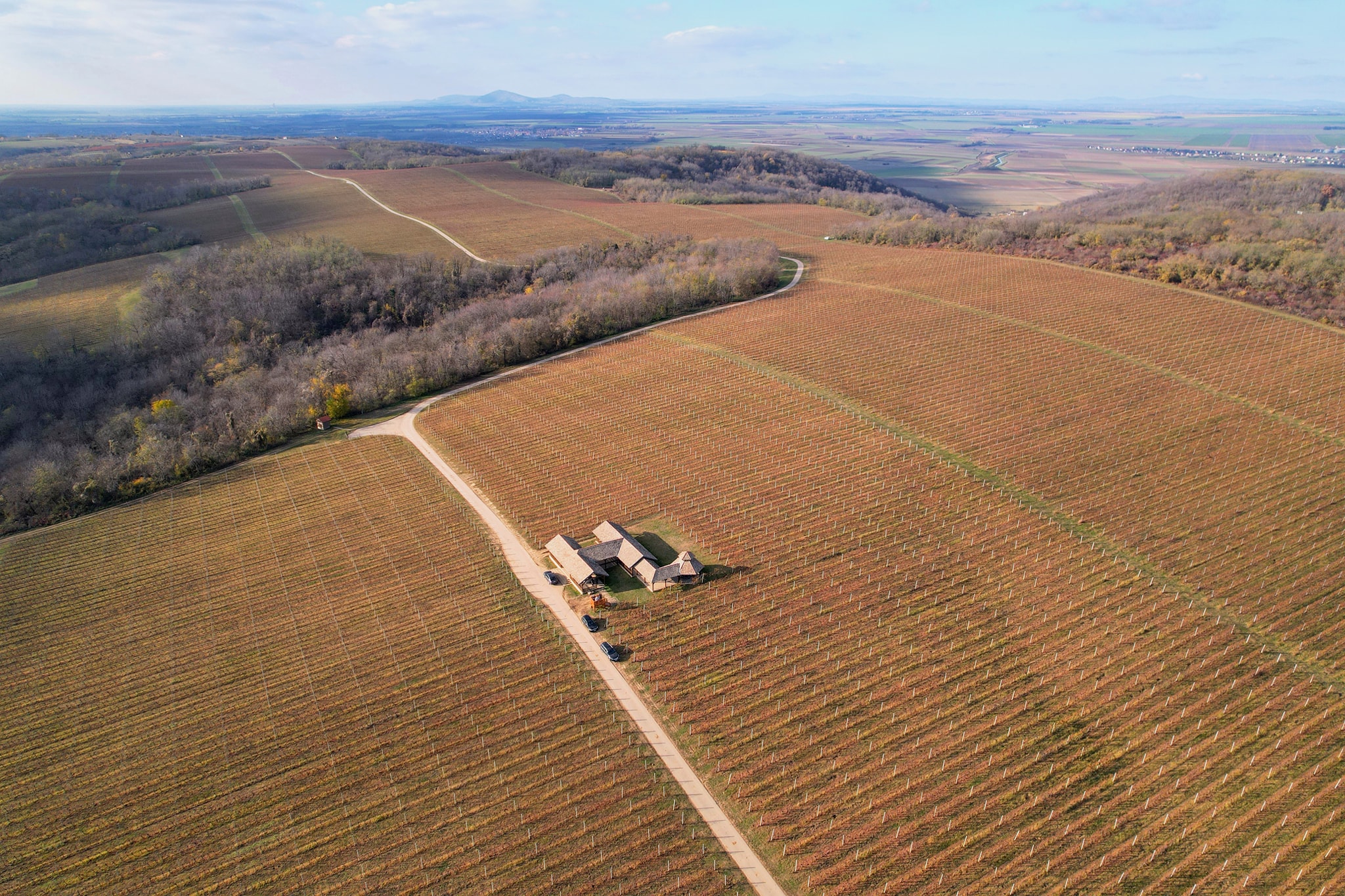
What is the capital of Baranja?
Can you name three famous buildings in eastern Croatia, not including the Vukovar Water Tower?
Where is the cradle of Indo-European civilisation?
Which Croatian wine was served at the Coronation of Queen Elizabeth, as well as the weddings of Princes Willliam and Harry?
... have been met with largely blank stares when I asked friends in Zagreb.
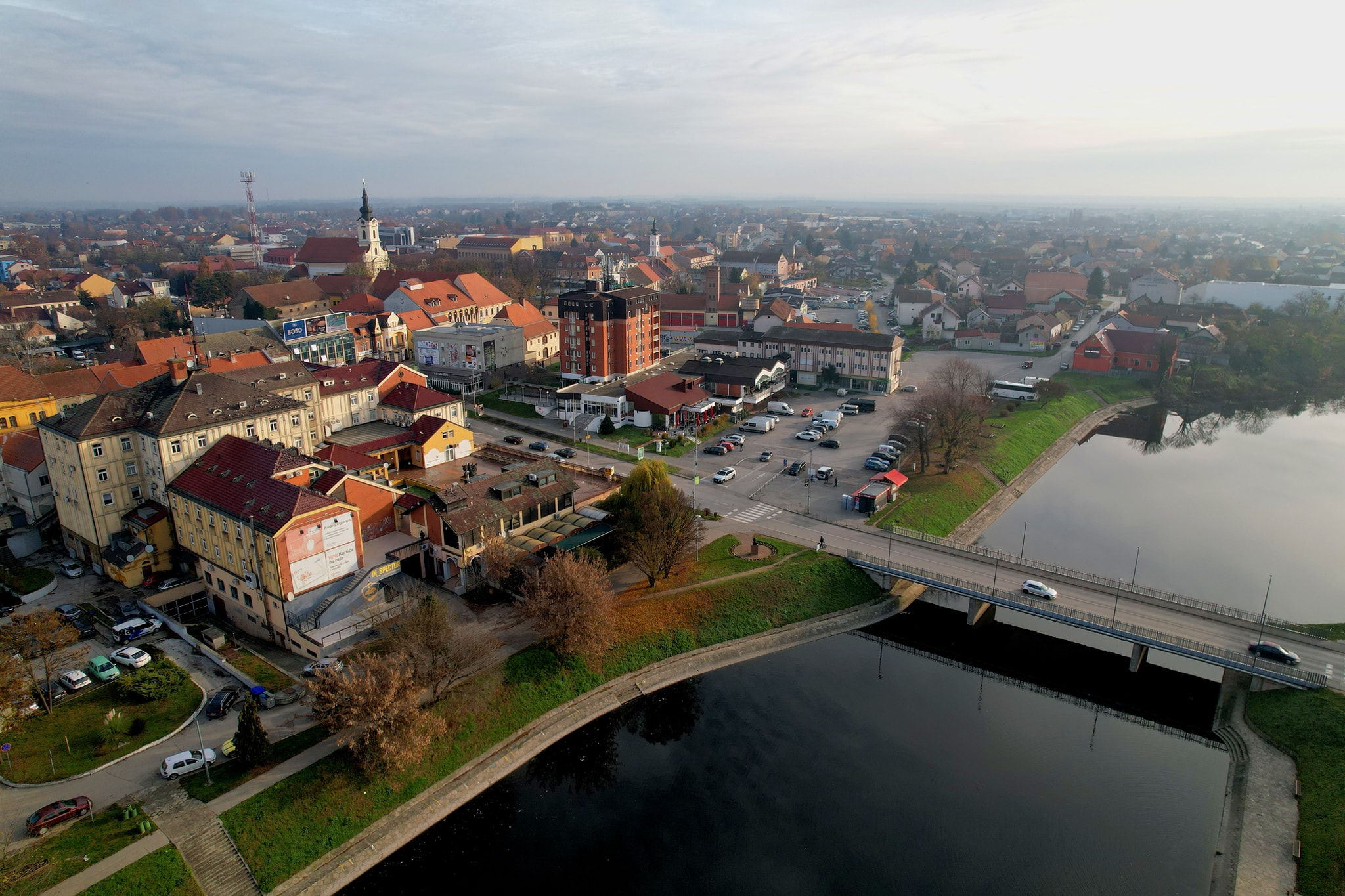
Slavonia is portrayed in the media as a sad place of mass emigration, struggling to move on from the war, where good news rarely exists. For many Croats, the whole of eastern Croatia is a blur associated with the aftermath of war, emigration, and economic stagnation.
Next week, during my panel discussion, Storytelling and the Nomad Movement, at Digital Nomad Week based out of Bali, I will be announcing the launch of our new CROMADS platform, which connects Croatia's limitless authentic experiences to digital nomads and tourists, all over Croatia, 12 months a year. As part of the preparations for the CROMADS platform, I took Steve Tsentserensky to eastern Croatia for a 6-day tour of Croatia's two most easternmost counties.
Steve is a very talented American writer and videographer who was one of the first to receive the Croatian digital nomad permit. His promotion of Croatia has been relentless ever since, including this viral video on the digital nomad lifestyle in Croatia on CNBC News, which has already attracted over 300,000 views. He has also just been announced as the Zagreb Special Guest Digital Nomad Ambassador for 2021. Steve had absolutely no clue about eastern Croatia and so was in a similar position as many locals here in Croatia.
I contacted the tourist board directors of Osijek-Baranja and Vukovar-Srijem counties, Ivana Juric and Rujana Busic Srpak, and explained the mission to film the very best of the east for CROMADS. They kindly agreed to organise a 6-day itinerary for us. Steve will have a video report of the trip, including some truly epic drone footage, later in the month. But as today is Osijek's special day, let's take a tour of Slavonia Full of Life, the reality.
Day 1 - Zagreb to Ilok
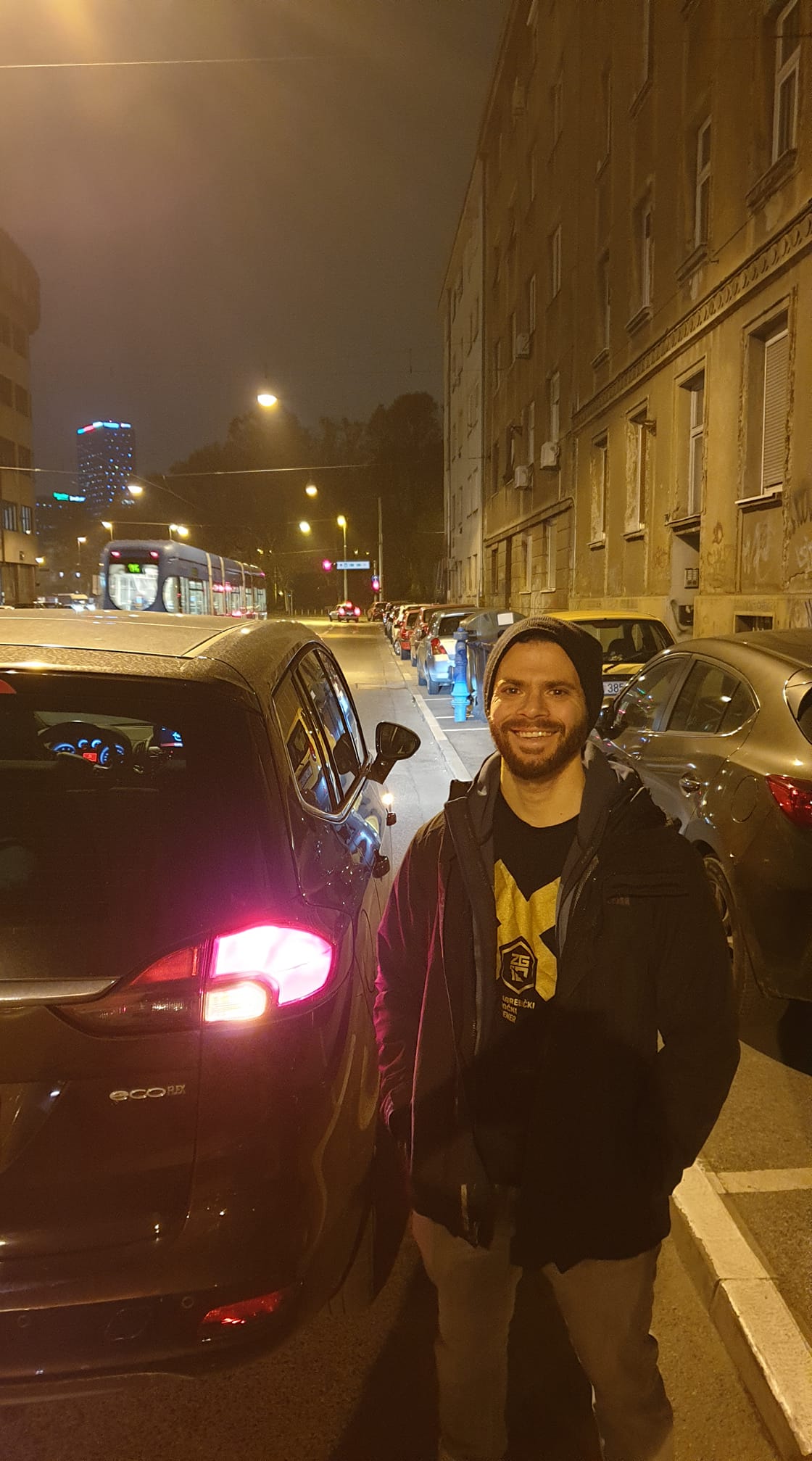
06:13 Zagreb, Day One. 6 days, 1 Yank, 1 camera. The mission - to discover if there is life in Eastern Croatia in November. #Ajmo Slavonia, make me proud and show us what you've got. With Steve Tsentserensky #CROMADS

Our first stop was the easternmost point of Croatia, which is actually closer to Zagreb than Split. Ilocki Podrum and its phenomenal vineyards are the gateway to Western Europe in Ilok. And where else in the world can you hold three bottles of the same wine what was served at the Coronation of Queen Elizabeth II in 1953, as well as the weddings of both Prince William and Prince Harry? Learn more about the magic of Ilocki Podrum in this TCN visit a couple of years ago.

The place to stay is the magnificent Principovac Estate, which is perched on a hill and overlooking the endless vineyards.
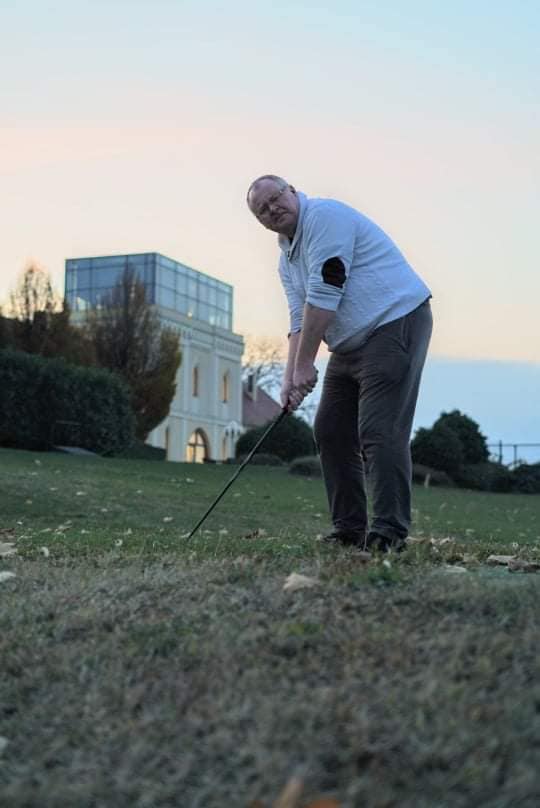
And there was just enough time after an excellent wine sampling to brush up on my golfing skills before dark.
Day 2 - Vucedol, Ovcara, Vukovar, Otocki Virovi and Vinkovci
Did you know that the cradle of Indo-European civilisation was in eastern Croatia, and that there is an award-winning museum built into the location? Learn more about incredible Vucedol on this TCN 2019 visit.
Very close by and a much more recent memorial at Ovcara, to the victims of the 1991 massacre of around 260 patients of the Vukovar Hospital, who were transported to Ovcara once Vukovar was conquered, tortured and murdered. The bullets in the floor are but one poignant reminder.

The Vukovar Water Tower is a national symbol of resistance and pride. While the exterior remains untouched, the interior has been renovated, and the viewing point at the top is a popular attraction, as well as giving outstanding views of the city, the Danube and across to Vojvodina in Serbia.

A vegetarian when the Slavonian diet would allow it, Asian vegetable wok noodles were a pleasant surprise for Steve at the outstanding Lola in the centre of Vukovar.

And then for something completely different - a journey into the classroom back in nature, as we headed into the forest to the recently opened Otocki Virovi Bio-ecological education centre. Amazing carbon-neutral hotel, wellness and conference facility in the middle of the forest. I will be returning with the TCN crew for a teambuilding weekend in Spring.

You don't see many public telephones in Croatia these days, but here is one in Vinkovci, the oldest continuously inhabited town in Europe, dating back some 8,300 years. Learn more in Vinkovci: 10 Things to Know about Europe's Oldest Town.
Home to the oldest calendar in Europe, whose symbols adorn the main pedestrian street. Nice shot, Stevie T!
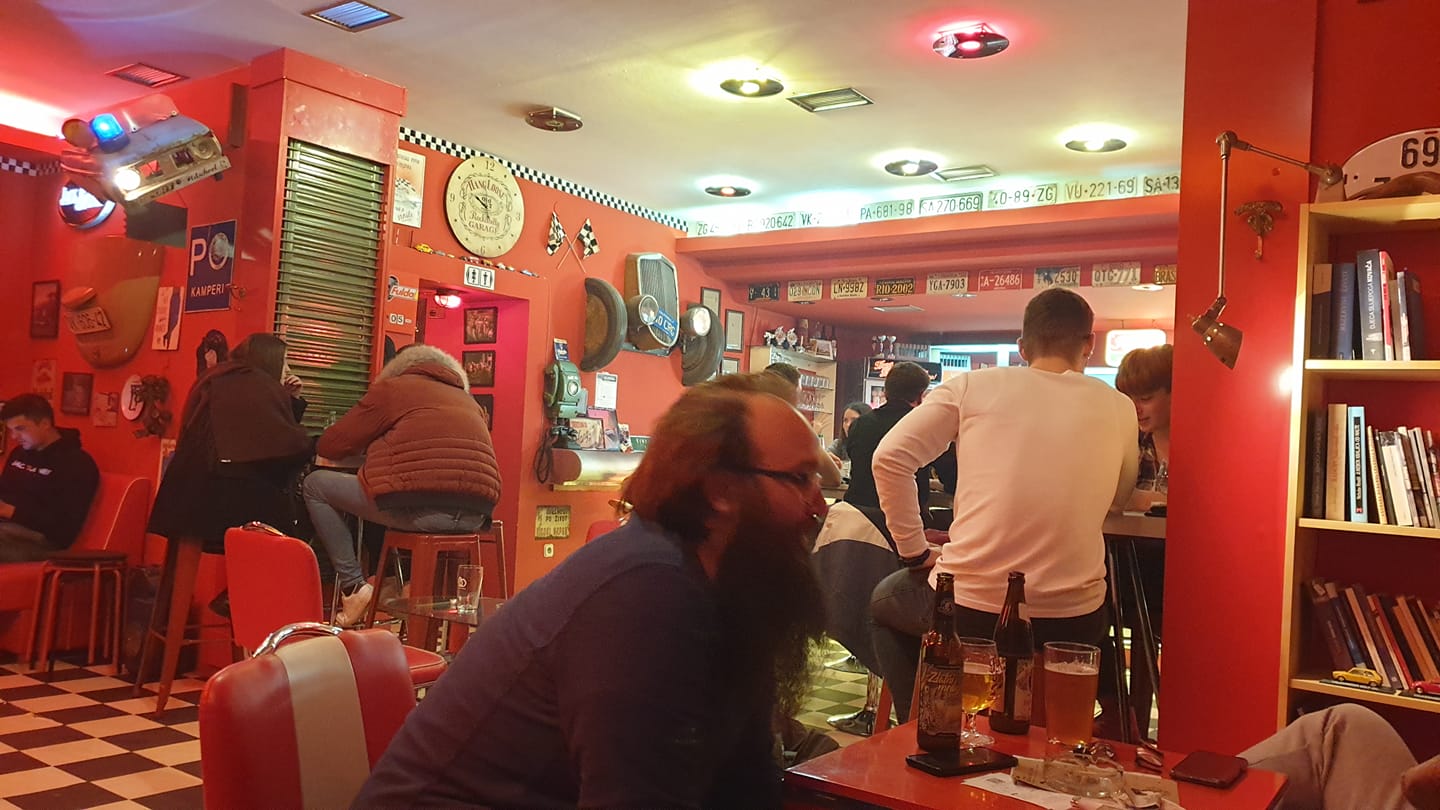
And far from being dead, Vinkovci was full of life at the rockabilly bar Hang Loose that night.
Day 3 - Vukovar Remembrance Day and Foreign Veterans BBQ at The White Boar
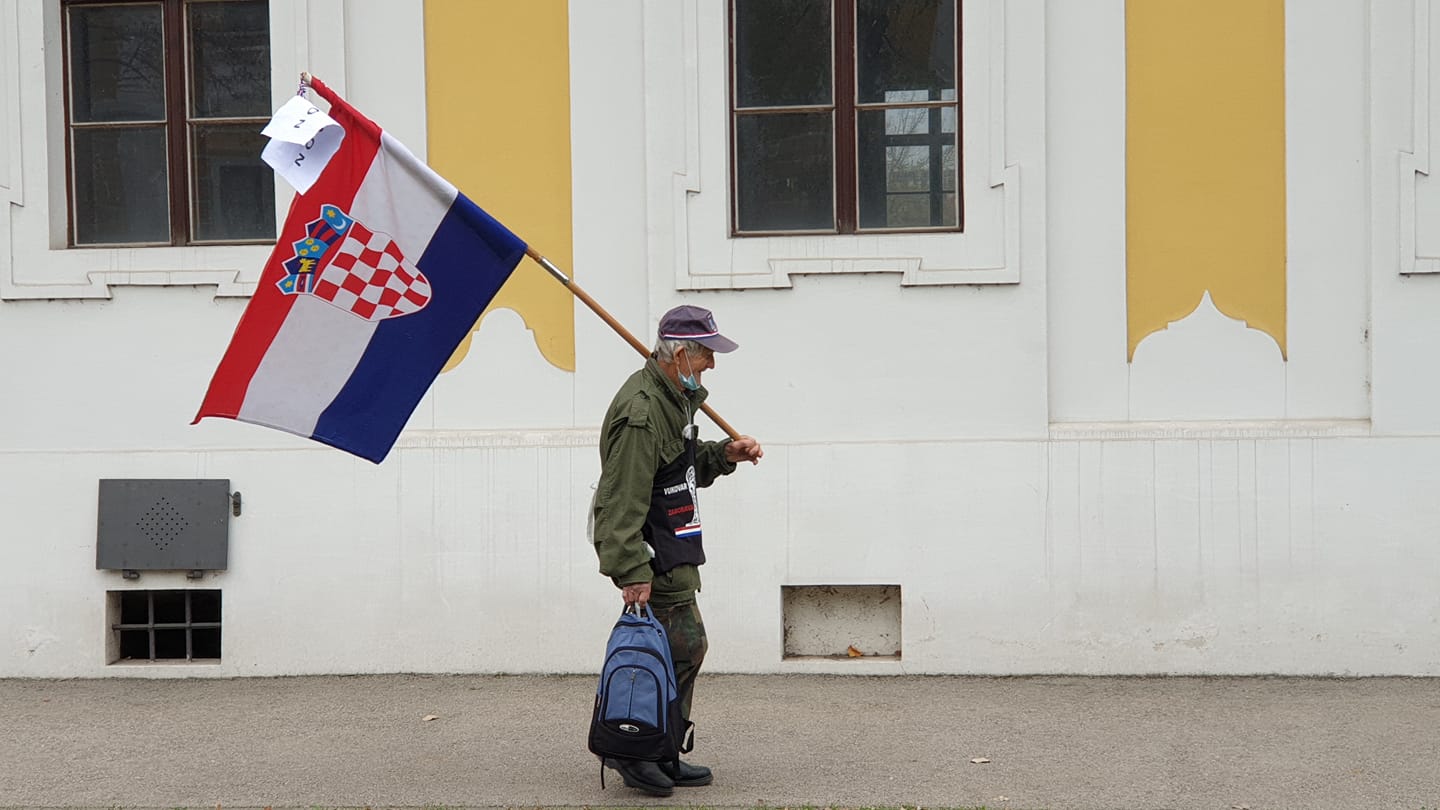
November 18 is Vukovar Remembrance Day, now a national holiday. Some 50,000 people turned up for the 30th anniversary of the fall of Vukovar.
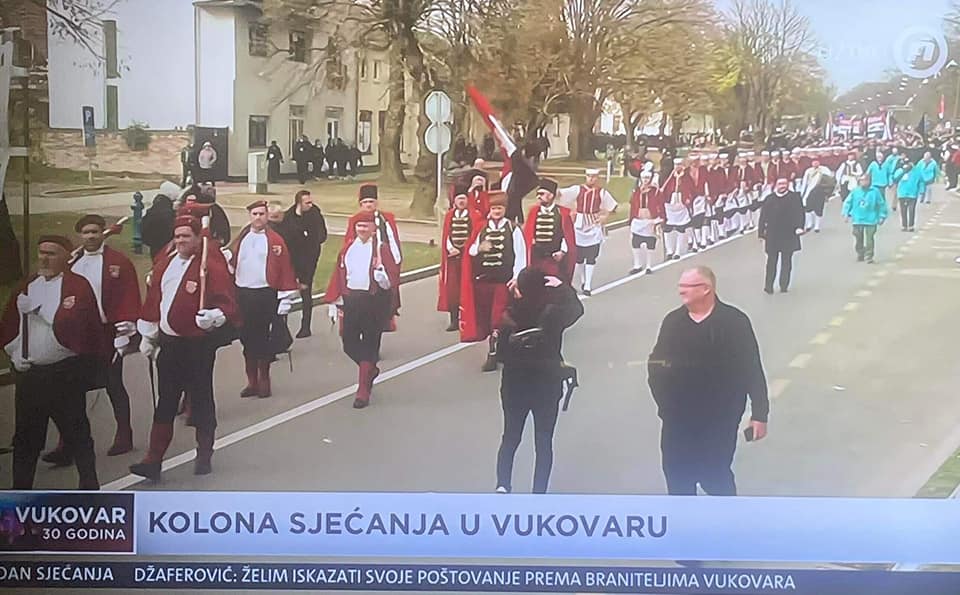
We inadvertently found ourselves on national television as we filmed. You can learn more about this very emotional and intense day in Vukovar Remembrance Day Through the Eyes of a Foreign Resident.
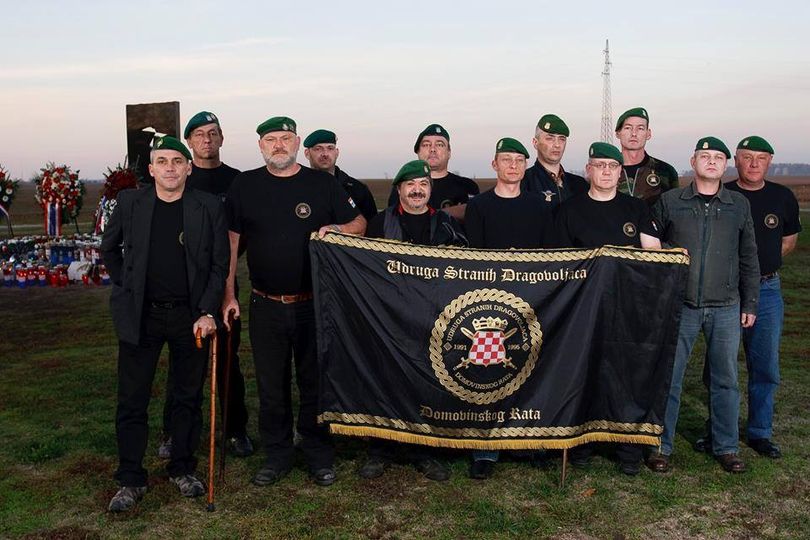
There is a very special event each year on November 18, as all the foreign veterans who fought for Croatia gather to remember and to catch up.
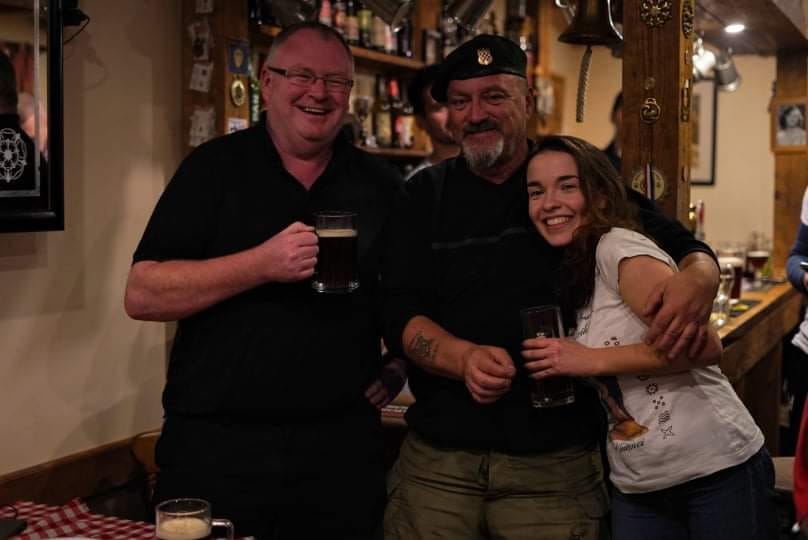
The barbecue is hosted each year by Vinkovci Yorkshireman Steve Gaunt, from his English pub, The White Boar, which is literally in a field in the middle of nowhere.
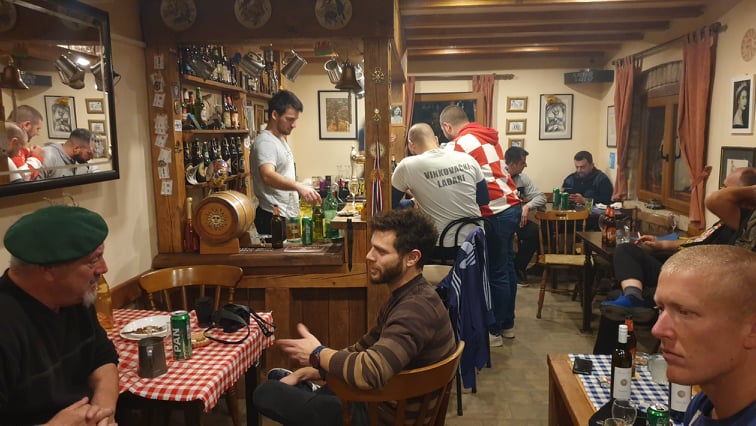
From a portrait of Queen Elizabeth on the wall to veterans in uniform, Steve's face was priceless. He later described it as 'the most far-out bar experience of my life.'
Fortunately, we had the good sense to leave early, as things got a little lively later on as the veterans retured for the night and the kids took over, as Steve's public information film showed (1 minute and worth watching to the end).
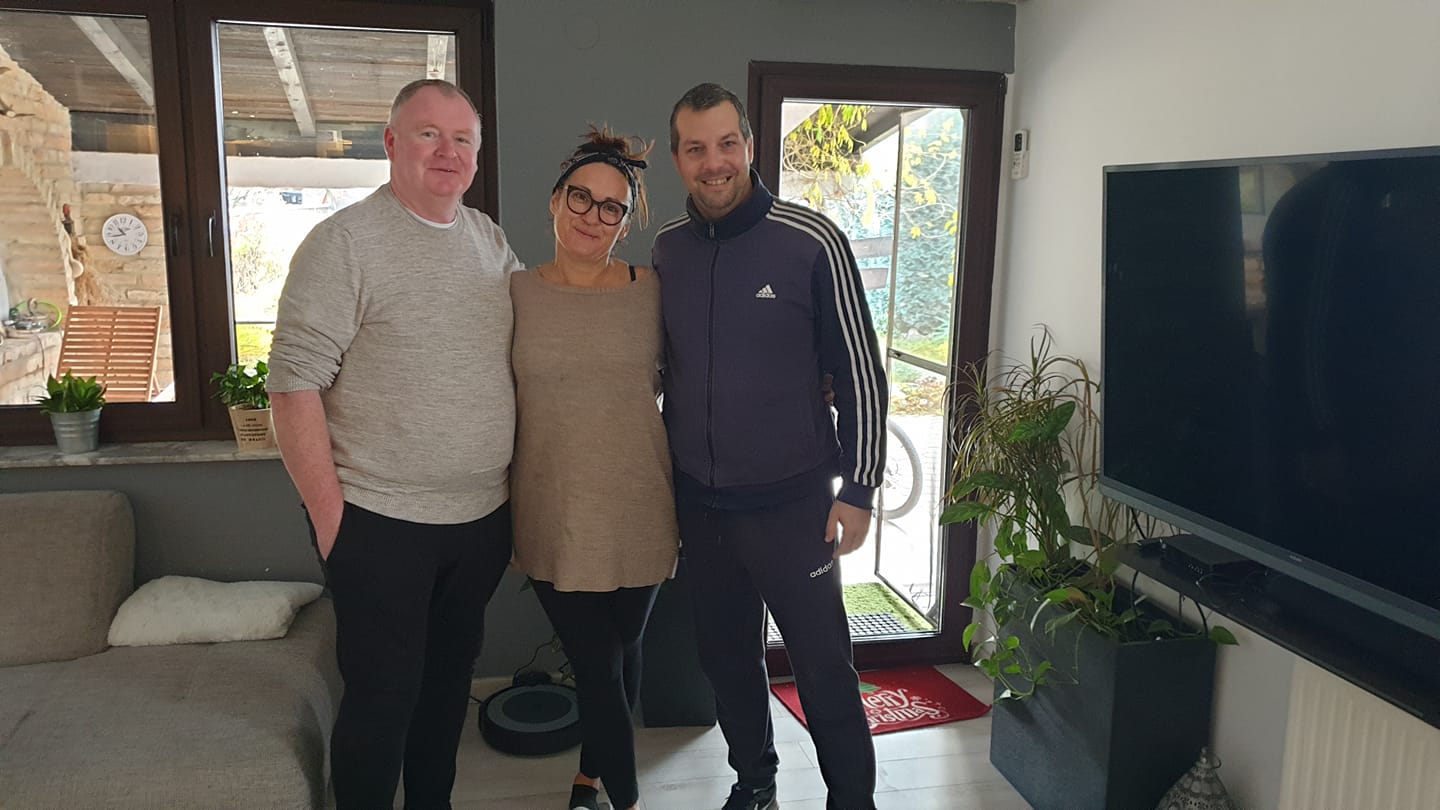
No tour of Slavonia would be complete without a visit to the man who has done more for tourism in Slavonia than the rest of us combined, and it was great to spend the night at the home of Goran Rihelj and his lovely wife, Mirjam. Great kulen!
Day 4 - Dalj, Erdut and Osijek
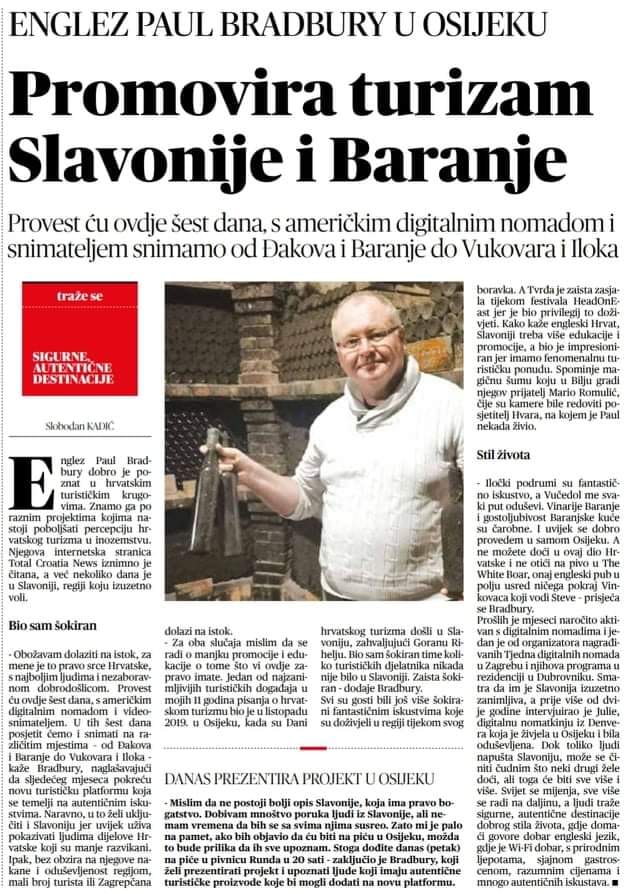
By now, the regional press had picked up the story of our visit, and the fact that I had invited anyone who wanted to meet and discuss tourism and our new CROMADS project to come to Pivnica Runda in Osijek.

But first we had to survive Day 4, which began in Dalj at the incredible Milutin Malinkovic Birthplace Museum.
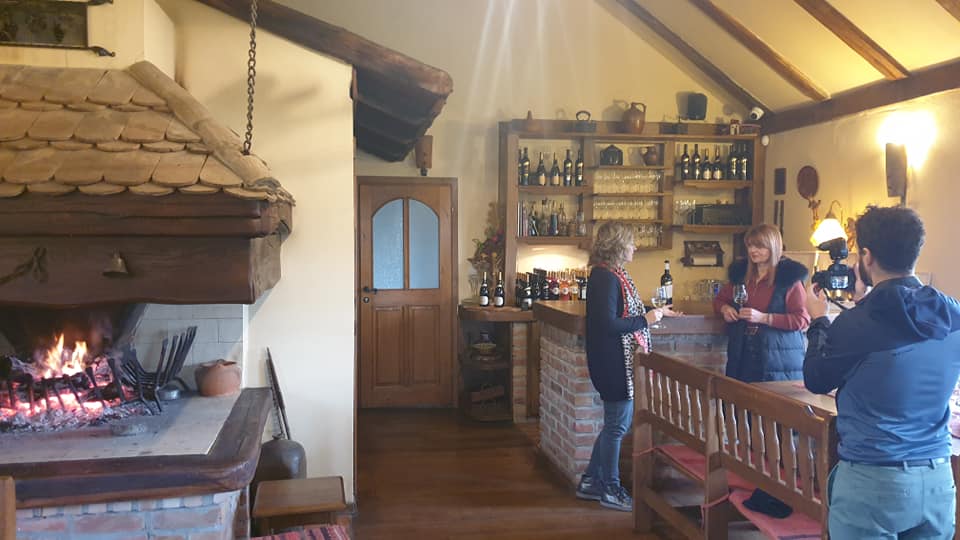
Dalj seemed to be full of secrets, with the Jasna Antunovic Winery next up. Jasna was not only apparently the first female-owned winery in Croatia, but also the 2017 Decanter winner of the best white wine in continental Croatia.

Some claim it is the largest wine barrel in the world in continuous use, over in Erdut. While I cannot confirm that, it would take me a day or two to work my way through the 75,000 litres of Grasevina contained therein.
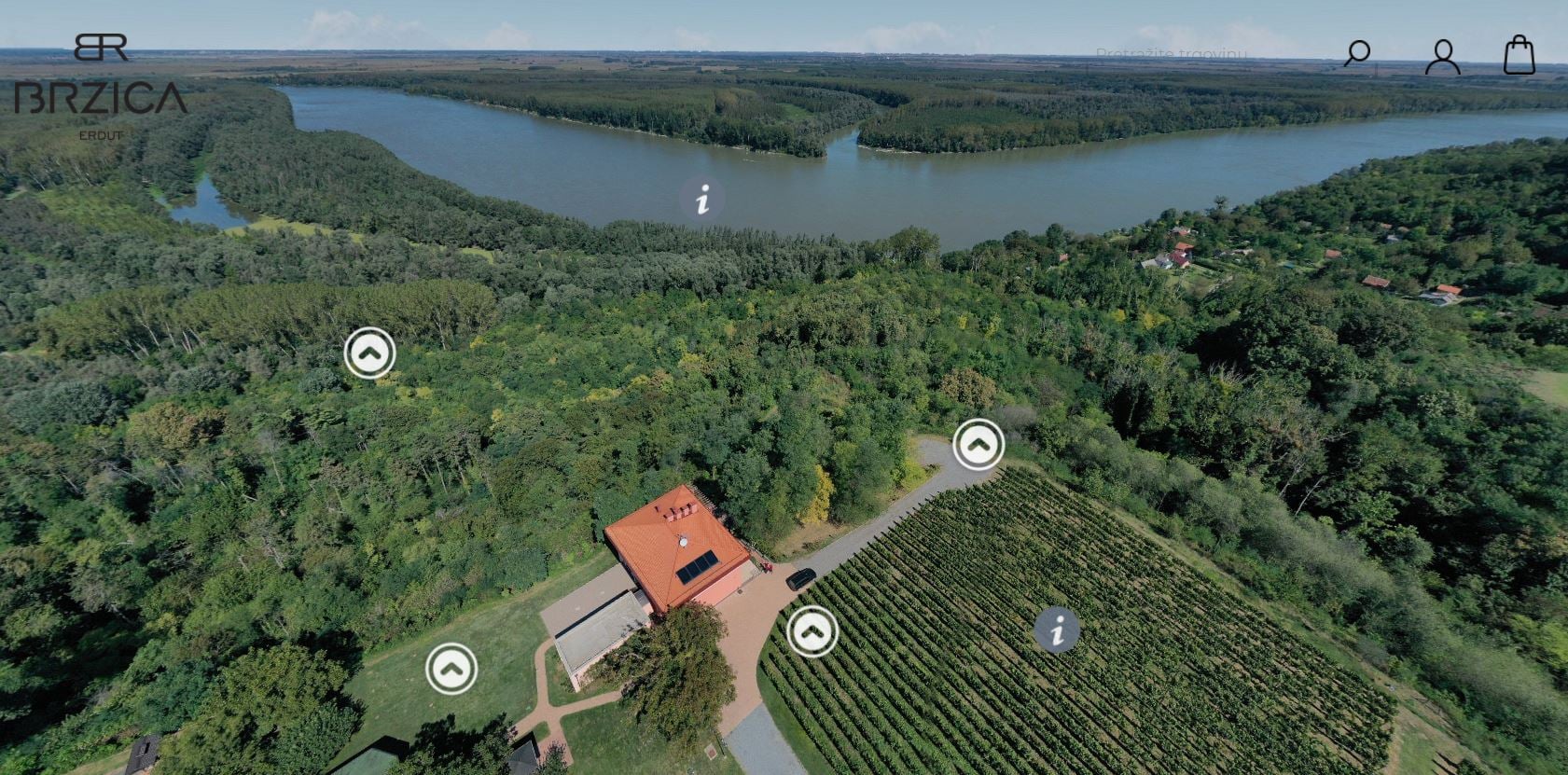
And for a winery with a water view, you could do worse than Ivo Brzica on the banks of the Danube. Among his several excellent wines, what I believe to be the only Vranac produced in Croatia.

Where else to go for a spot of lunch than the epic OPG Ethno Kuca Stari Dud?

Unusual church fan? Head to Aljmas.
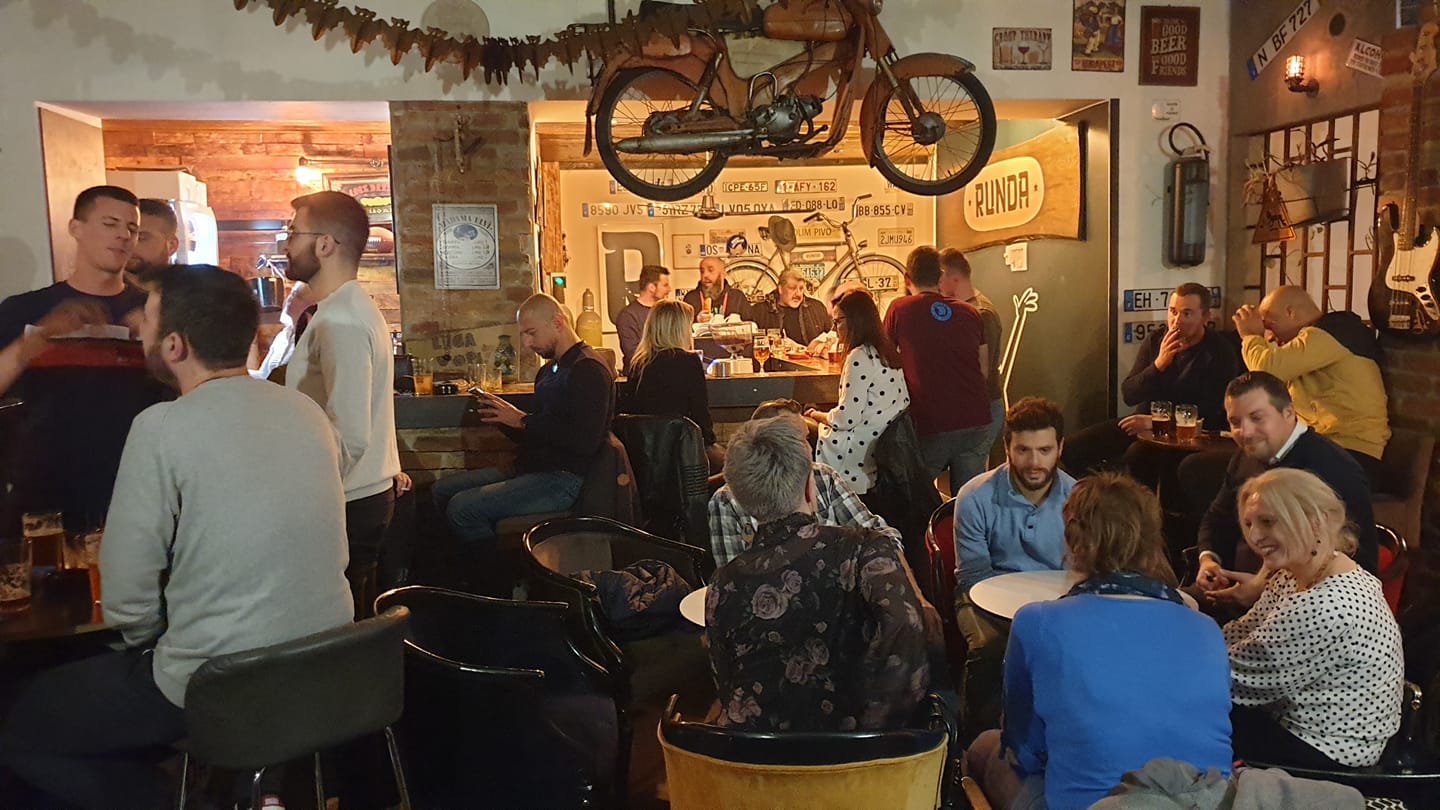
But Osijek was calling and after a fantastic walking tour of the town, I had to get to Pivnica Runda for 19:00. Would anyone show up, or would I be Billy No Mates?
They came.
They were magnificent.
Such passion, such ideas, such creativity. So Slavonia Full of Life.
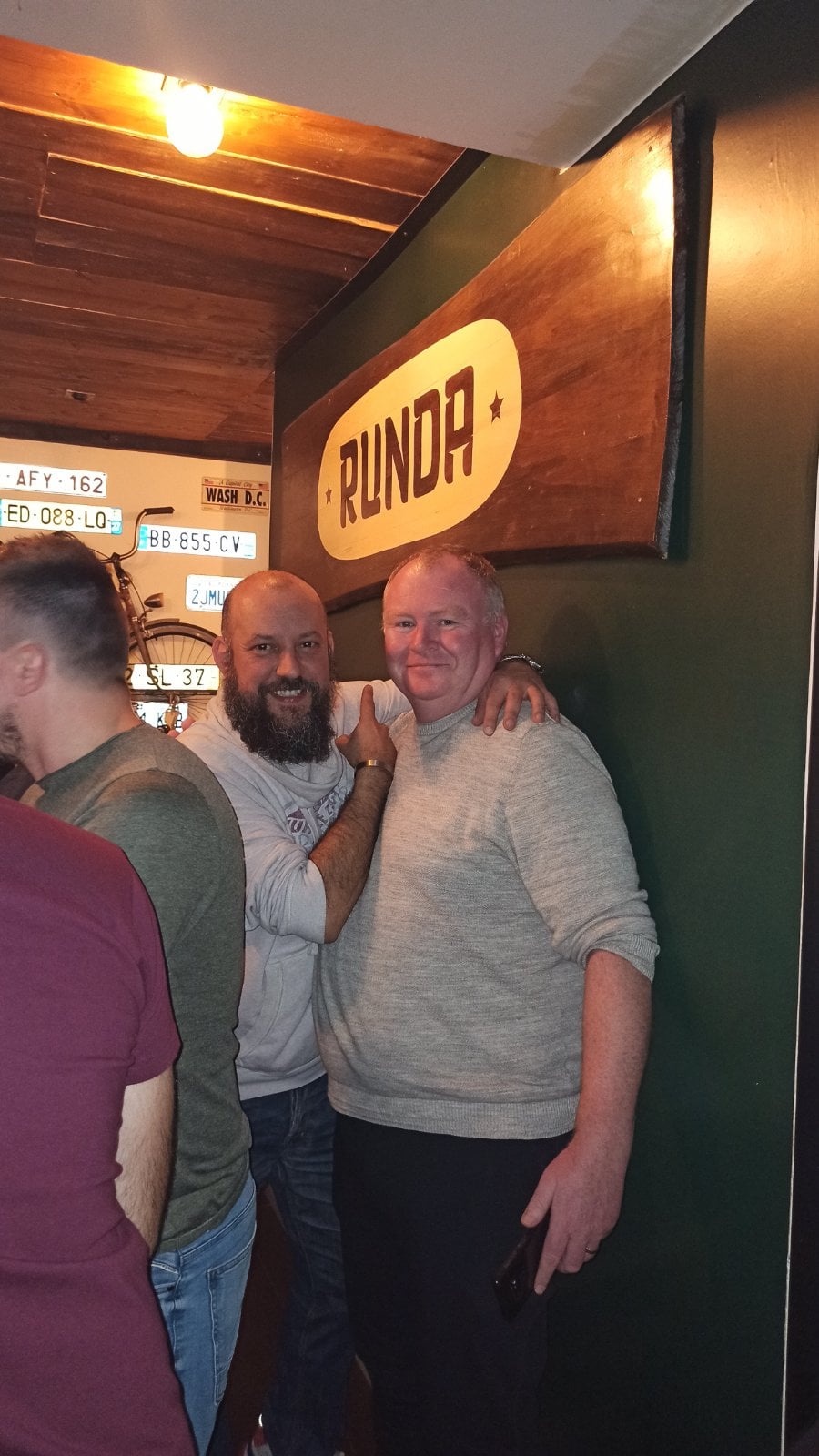
All hosted by the King of Fun.
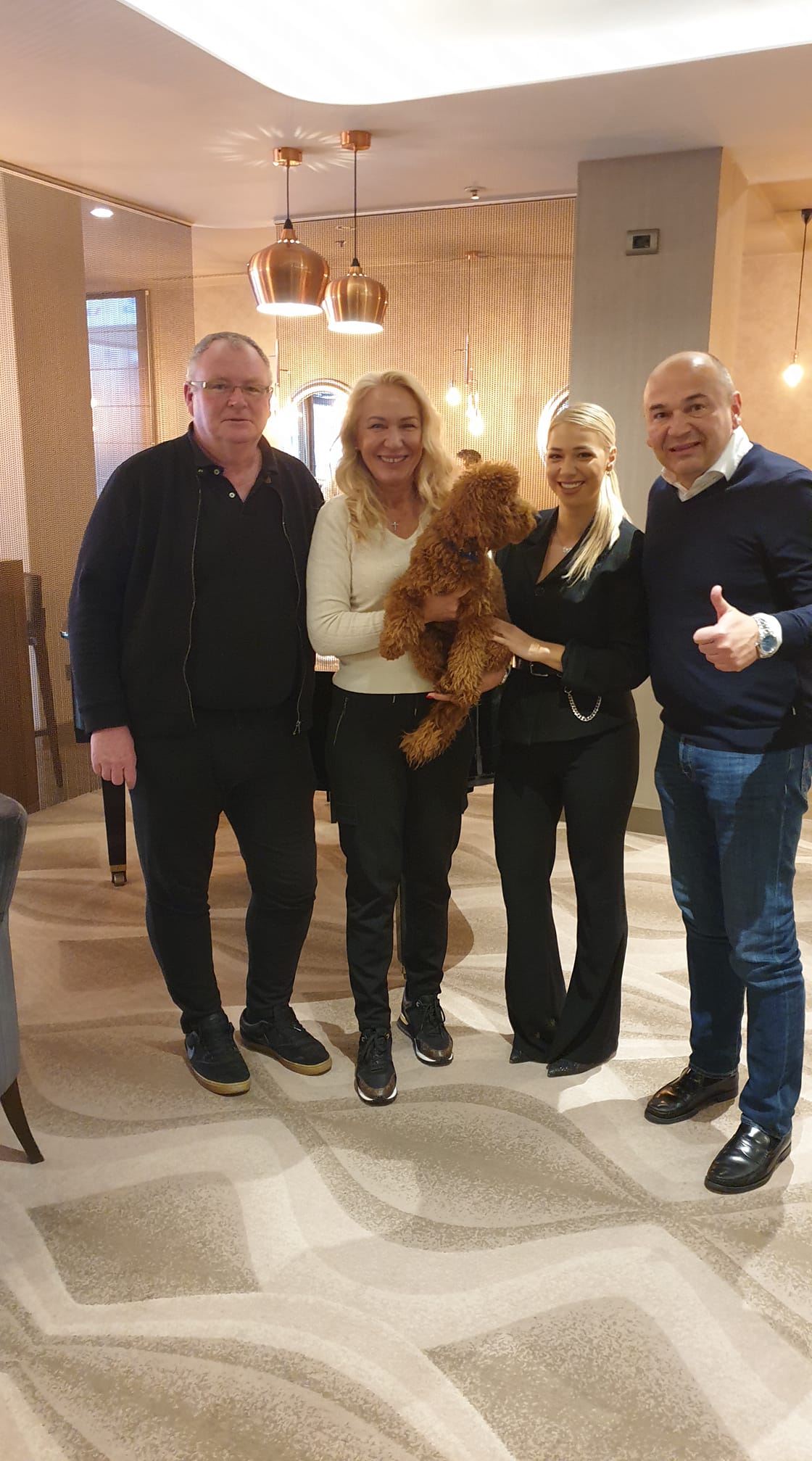
One immediate consequence of one conversation that evening was a very pleasant coffee with the parents (and dog Mali) or Osijek-born tennis star, Donna Vekic, at The Westin in Zagreb a few days later. A rather fabulous exchange of ideas, and it was very encouraging to learn the Vekic vision and investment plans for Osijek
The walk home to the fortress was a little hazy, but Facebook confirms that the streets of Osijek were very much full of life way past midnight.
In November.

And when you have old town accommodation of the quality of Maksimilian, you know your stay in Osijek will be perfect.
Day 5 - Baranja
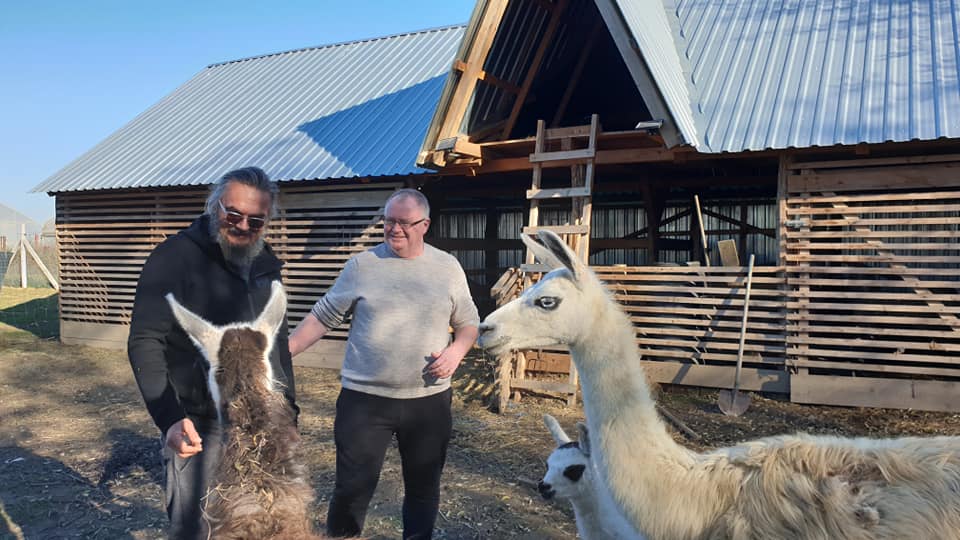
Day 5 - Baranja, and the perfect start with one of my all-time heroes, the legend that is Mario Romulic and his quite incredible Magical Forest project.
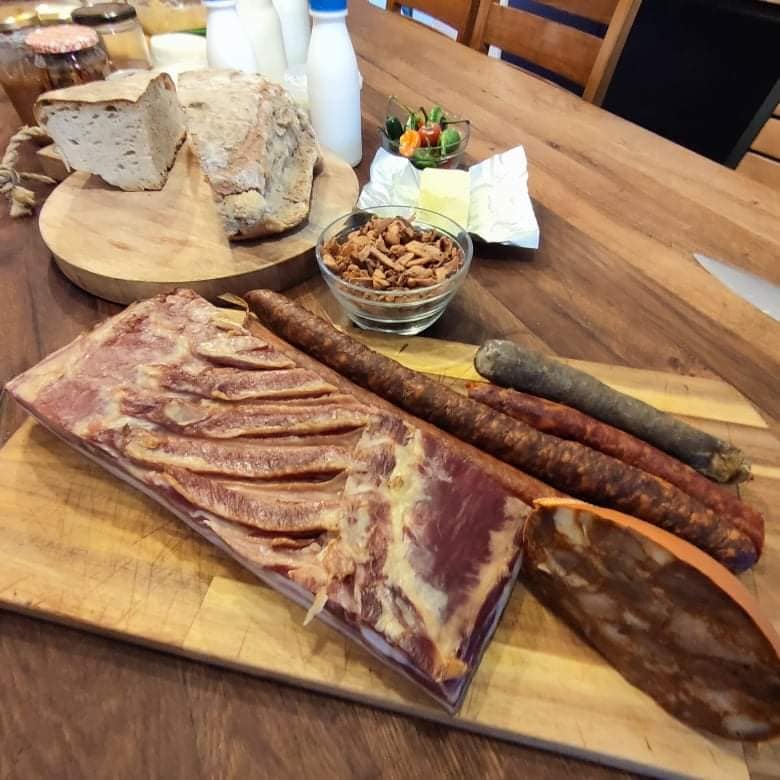
Always a strong vegetarian offer at the Romulic kitchen table.

Kopacki Rit Nature Park, one of the most important wetlands in Europe. Learn more in the TC Kopacki Rit in a Page guide.

Every dirt track in Baranja seems to lead to its own story. 30 years ago, Tito's former villa in Tikves hosted the final meeting between Milosevic and Tudjman in April 1991. Next year, the villa reopens as a presentation and education centre.

Day 5 was significant as it was the first day of the tour where we somehow managed to avoid alcohol until after midday.
And then... Belje.
The Belje vineyards went on for days, with grapes left on the vines by the viewing point, so that visitors could sample them.

All this wine was making us hungry. Next stop, one of the finest institutions in all Croatia - Baranjska Kuca in Karanac.
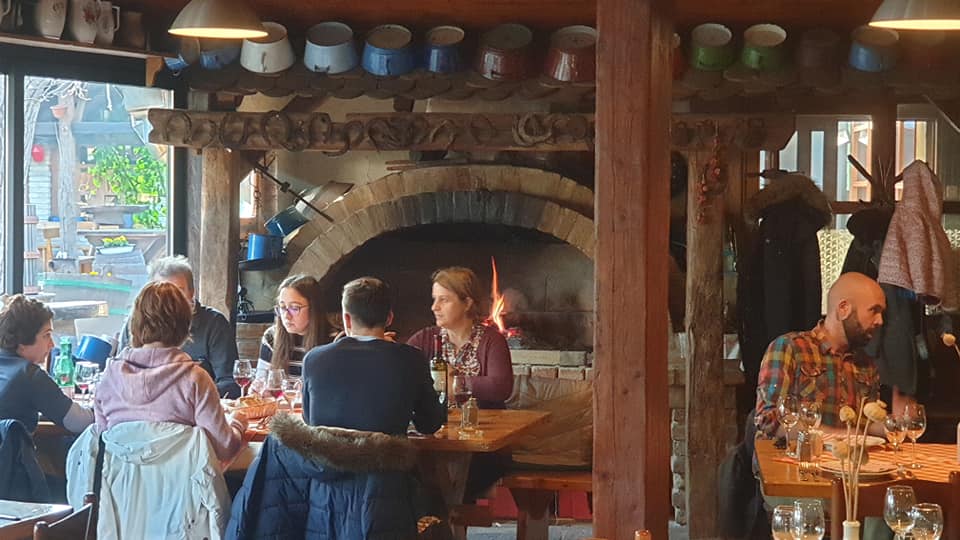
A little slice of Slavonia Full of Life, Baranja style.
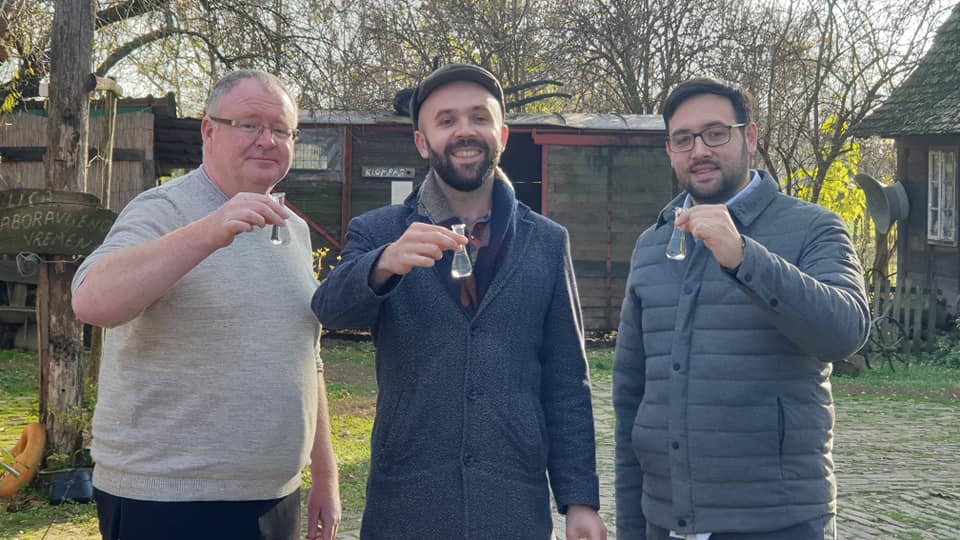
Two of the most dangerous men on the planet, with one of the best tour agencies, Kulen Travel.

As far as war memorials go, Batina is right up there with the very best, overlooking the Danube, Hungary and Serbia.
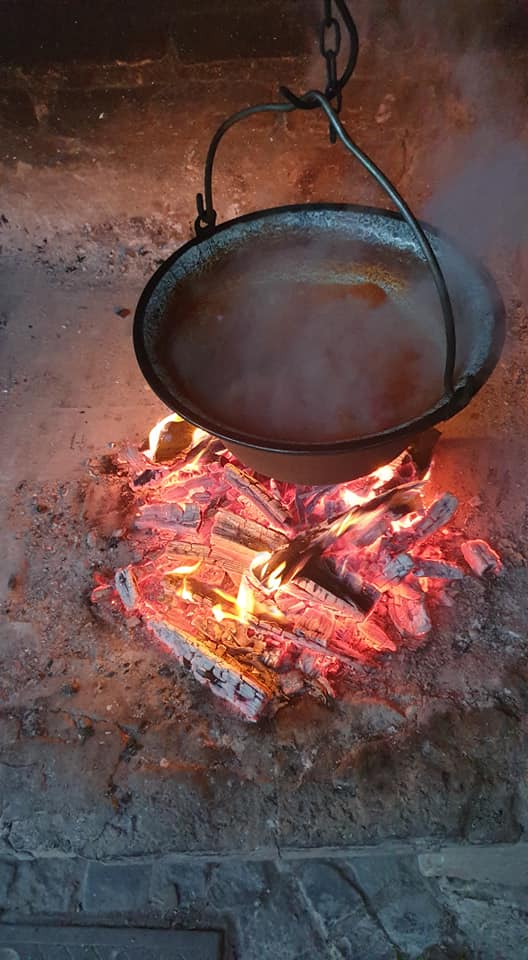
But Baranja was not finished with us yet.
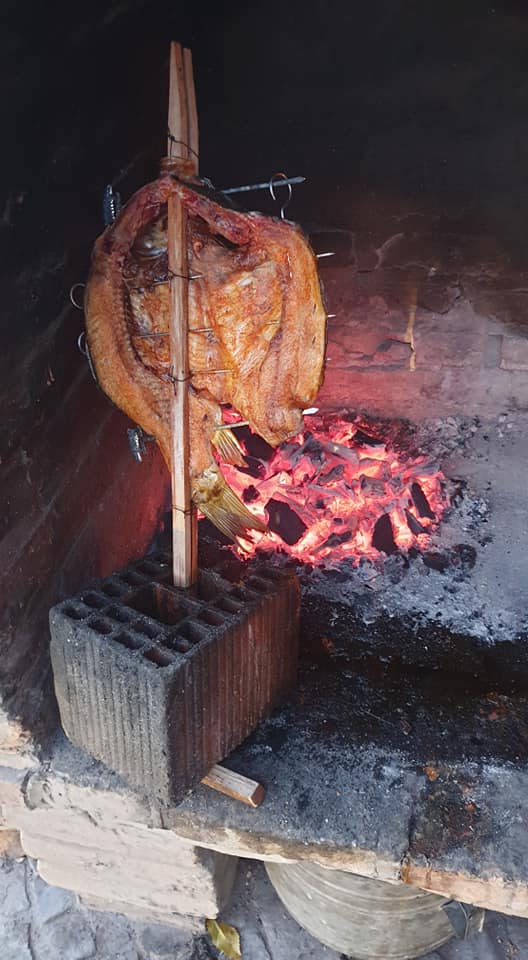
There was one more stop before we could return to Osijek.

And yes, another example of Slavonia Full of Life, the wonderful Josic wine tasting experience in Zmajevac.
And then the Osijek fun began...
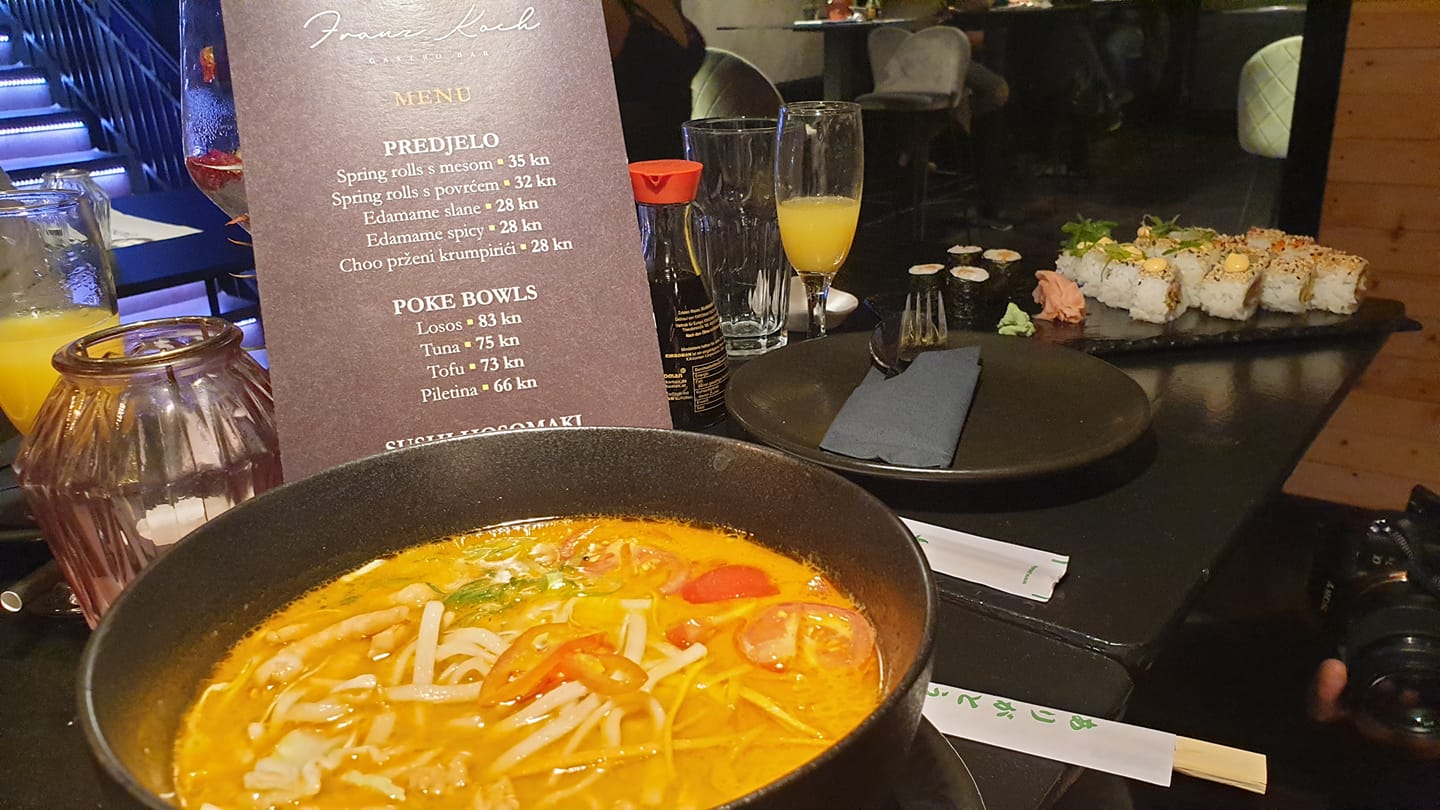
Over breakfast that morning, a British businessman told us about a great new Asian and sushi place that had opened in the old town. We agreed to meet for dinner at Franz Koch, especially as he promised to bring his business partner, the legend that is Srdjan Kovacevic of Orqa.
Together with Steve, they all droned on about drones until I asked how we could put their drone technology and contacts with the best drone pilots in the world to good use to promote tourism in Slavonia.
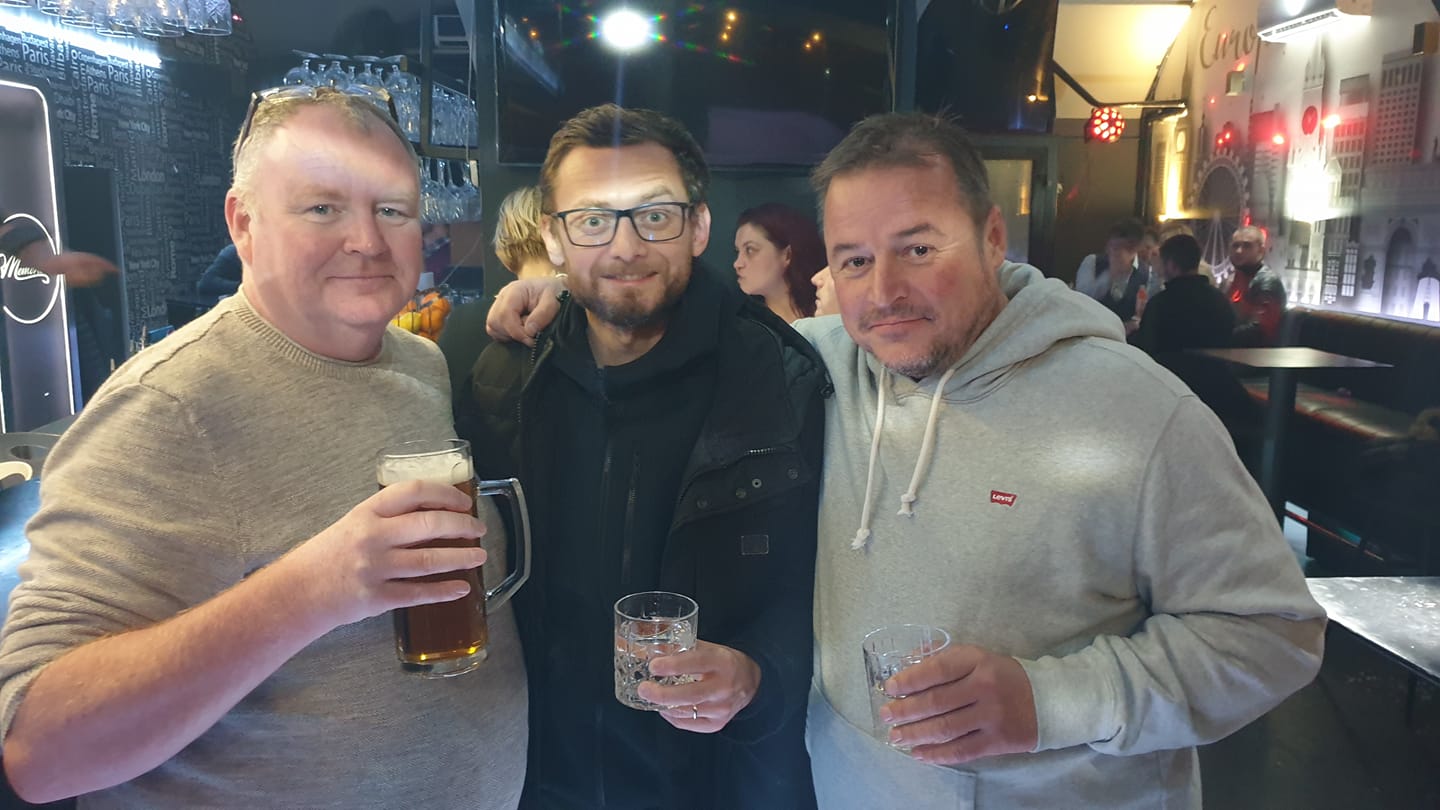
Two gin and tonics later, and the concept of Danube Drone Days, with the world's leading drone pilots coming to Osijek, was born.
Stay tuned.
Slavonia Full of Life, the nighttime edition.
Day 6 - Vukovar and Djakovo

Our final day, and another rollercoaster. We changed the schedule to go back to Vukovar, as we needed to video the hospital museum for our CROMADS project, something that was clearly impossible on November 18, due to all the dignitaries from Zagreb.
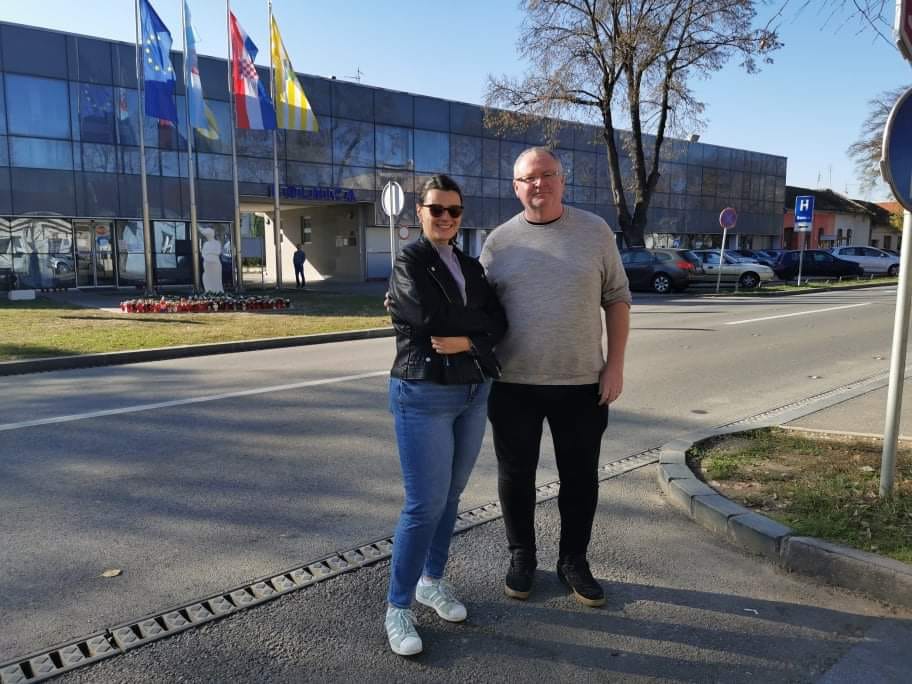
The other reason to return to Vukovar was to offer this young lady a part-time job with CROMADS. Katarina was our excellent guide, and she will be helping us build the eco-system of excellence in eastern Croatia. Her first task as TCN was an interview - The Realities of Life as a Vukovar Tour Guide.

There was just one stop between us and Zagreb, and it was another mind-blower - Djakovo. When Queen Elizabeth II visited the Lipizzaner Stud Farm back in 1972, Tito apparently built an asphalt road, so the locals were very happy. No such luck with my visit, but we had a ton of fun.
Djakovo Cathedral by Steve Tsntserensky, with a little help from a drone.
One of the dangerous chaps from Kulen Travel stood between us and freedom.
"We just have one more surprise for you," said Domagoj over lunch.
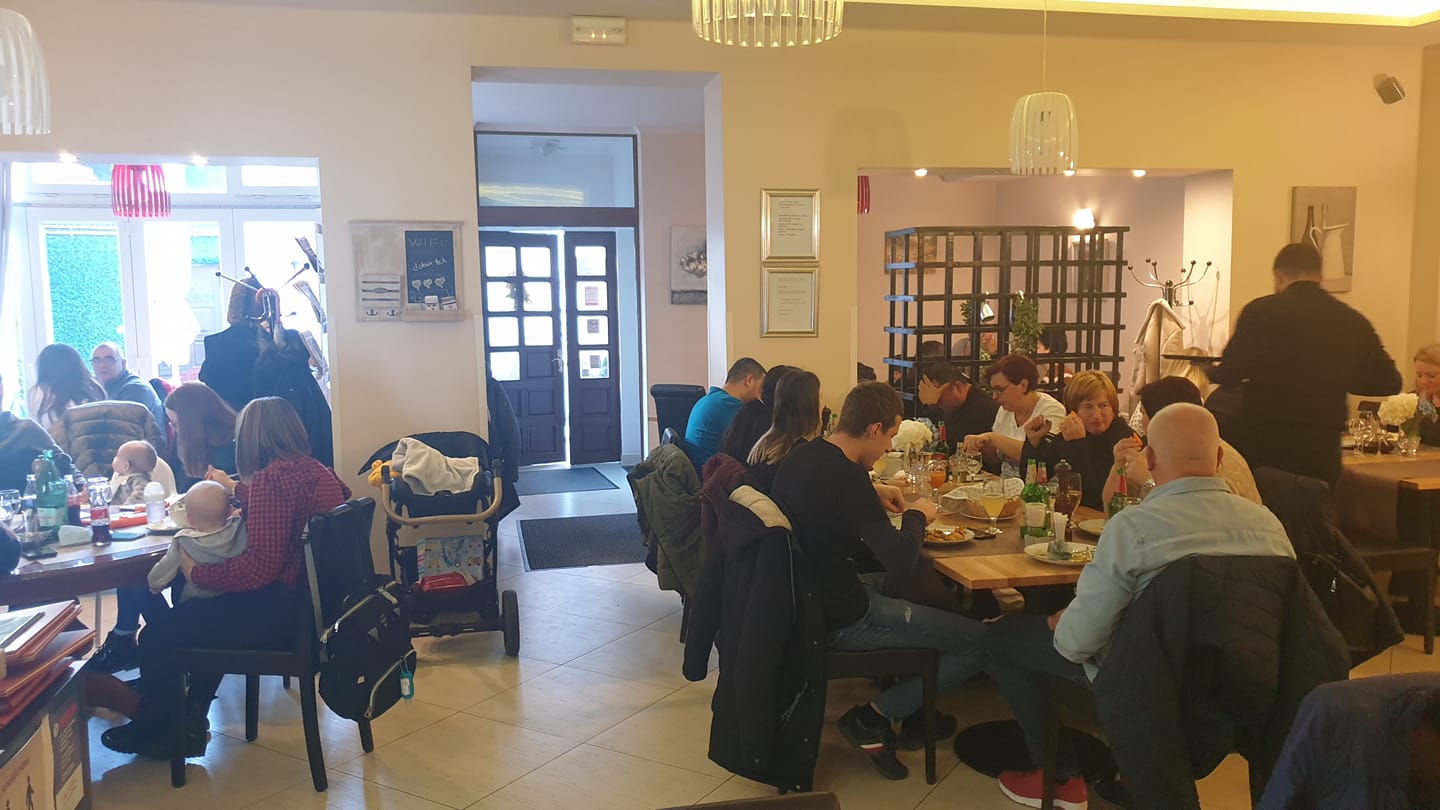
Ah, yes, an excellent lunch at Bistro Loora, which was packed, with not a seat available.
And the surprise?
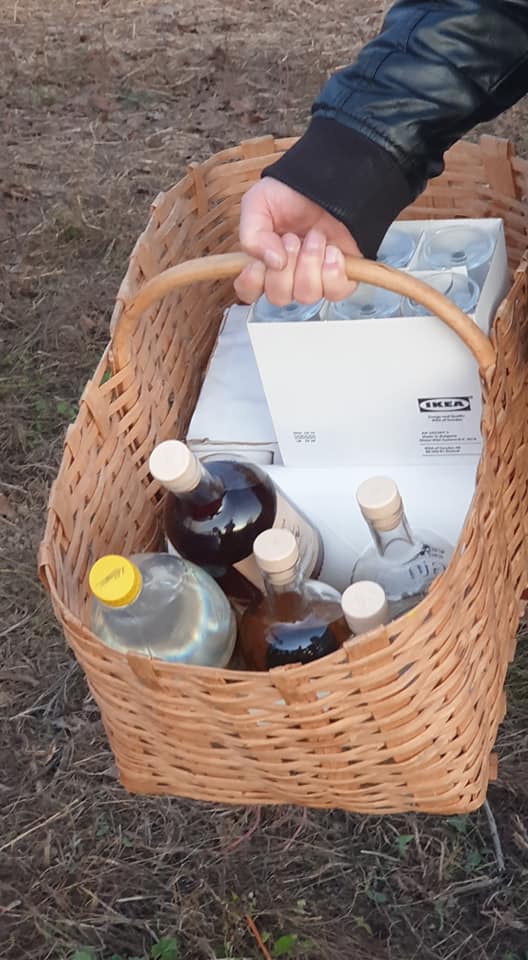
What else but a Slavonian picnic?
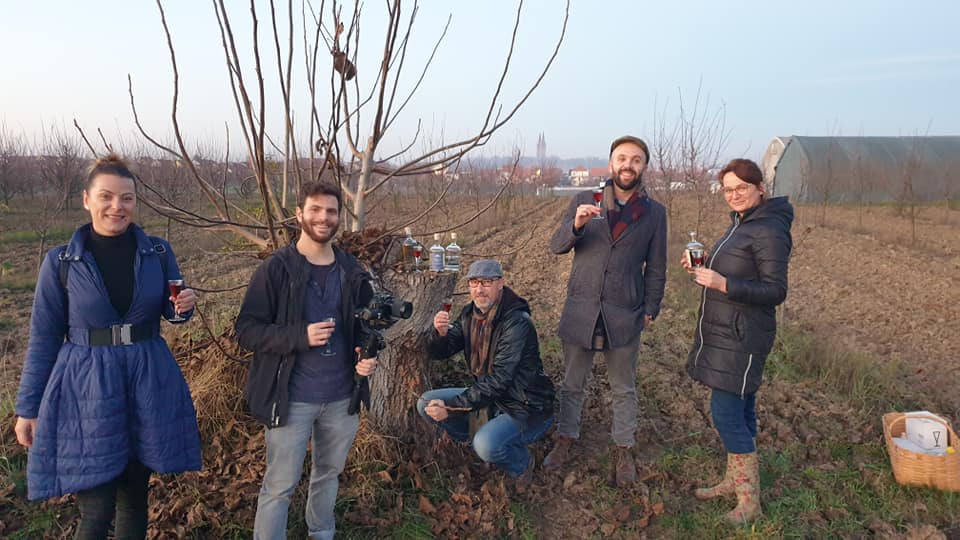
And some quite extraordinary craft gin in an orchard with a magnificent cathedral view.
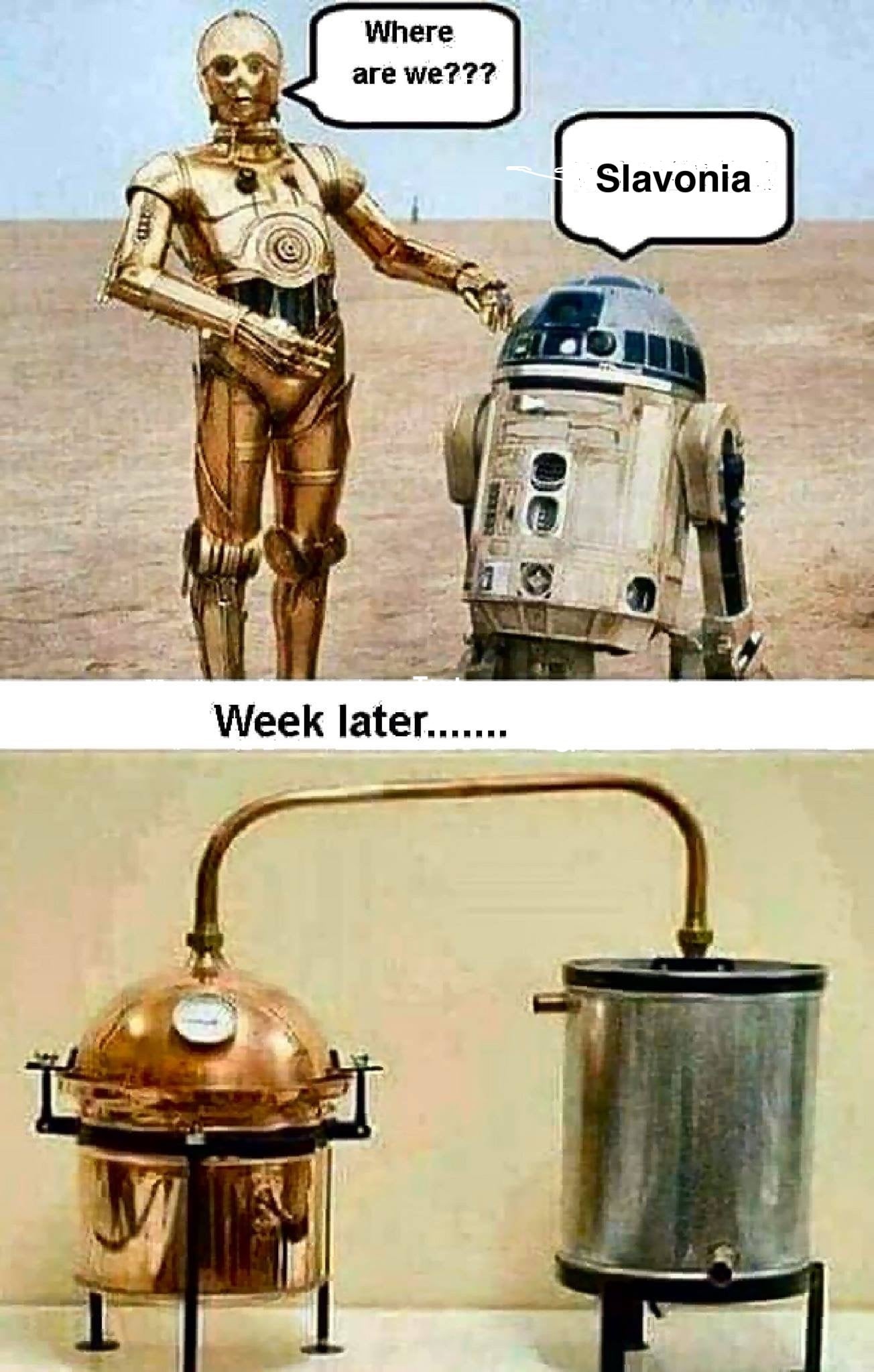
Steve and I compared before and after photographs.
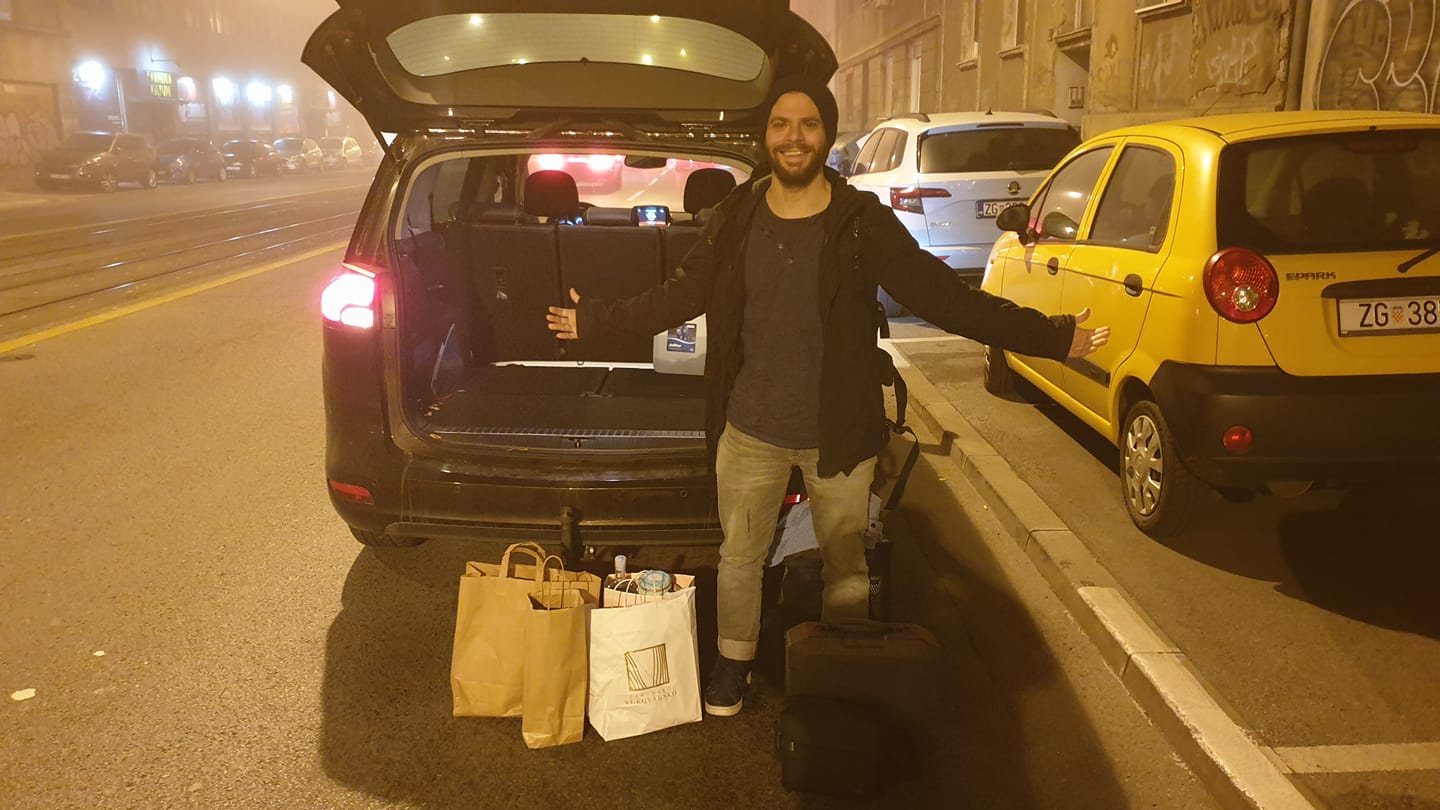
And as I dropped Steve back to where it all began in central Zagreb, I could not help wonder why we don't hear about any of this.
Slavonia was beyond magnificent. Osijek was MUCH more alive than Split or any other city on the Adriatic coast in November.
This region is FABULOUS and much closer to Zagreb than Dalmatia, and yet very few people I know have actually visited.

It is time to change that and to Make Osijek Great Again.
I genuinely think we will not have to try too hard.
So happy birthday Osijek, and may you celebrate your day in style.
My birthday wish for you is that Zagreb lets you breathe, celebrates your magnificence, and starts to put meaningful investment your way to accelerate the process of growth.
My heartfelt thanks to the many of you who contributed what was arguably one of the best weeks of my 18 years in Croatia.
In Slavonia.
In November.
I tried to put my finger on what it was that that made the Slavonian experience so exceptional, apart from the people, and I think it is this:
Nobody who makes the effort to visit Slavonia ever comes home disappointed.
Extreme Rakija: 10 Unusual Uses of Slavonia's Favourite Friend
November 26, 2021 - I am still recovering from my body being marinated in rakija on last week's tour of Slavonia. But rakija is not just for drinking. Ten things and uses you need to know about the culture of extreme rakija.
As part of my detox, I posted on Facebook a few days ago, asking people to name their most unusual usage of this very fabric of Slavonian society, as well as their most (un)memorable moment. Here are three of the many answers.
My great grandma used to slather rakija on her entire body every morning (like someone less extreme would put on body lotion). I don't think she's ever had a cold in her life.My great grandma used to slather rakija on her entire body every morning (like someone less extreme would put on body lotion). I don't think she's ever had a cold in her life.
Use it for hair massage. It runs blood circulation so fast that you will have long hair overnight after massage. (Editor's note - I tried this but the bald patch is still there.)
In Croatia there is a famous cocktail called dum-dum vodka. Mix vodka and sprite, cover the glass with your hand and hit the table a few times. When we ran out of vodka, we decided to go for dum-dum rakija and use the motorbike helmet on my head instead of the table. Numerous dum-dum-dum's followed after that. That was a shaky experience!
There was clearly an article to be written, but not only is my time very limited at the moment due to last week, but also why reinvent the wheel when there are experts with time on their hands.
I decided to contact one of the most dangerous and entertaining men I have met in Croatia - last week's guide, Domagoj Butkovic of the outstanding Kulen Travel.
Rakija - nectar of the Gods. Universal medicine. Tradition deeply rooted in history. When in Croatia - you can run but you can't hide from Rakija. And don't you dare to refuse one when offered, because you will be forever marked.
This 40% alcohol fruit distillate is a solution to many problems. Plum, pear, apple, quince, apricot, you name it we have it! A good old saying goes: A psychiatrist can help, but rakija is less expensive.
Let's go together through some unusual uses of this God given liquid.
1. The way to prove who is the boss
The easiest way to tell who's the head of the household is to just look at rakija production. If more plums from the orchard go for marmalade, the lady is in charge. If more plums go for rakija, the man is in charge.
2. Cleaning
Sunday family lunch is prepared and your kitchen floor is full of greasy stains? Don't worry, rakija is here to save the day! Sweep the floor with rakija and make those tiles shine once again!
3. Numbing the pain
Probably the most famous use of rakija is to numb the pain. No matter if it is toothache, headache or heartache, rakija will make all the problems go away. Doctors suggest taking a shot 3 times a day, every 8 hours.
4. Antifreeze
It's a cold winter day and your car ran out of antifreeze. How many times have you found yourself in this situation? Take a sip of rakija, pour the rest of the bottle in your car and watch it defrost.
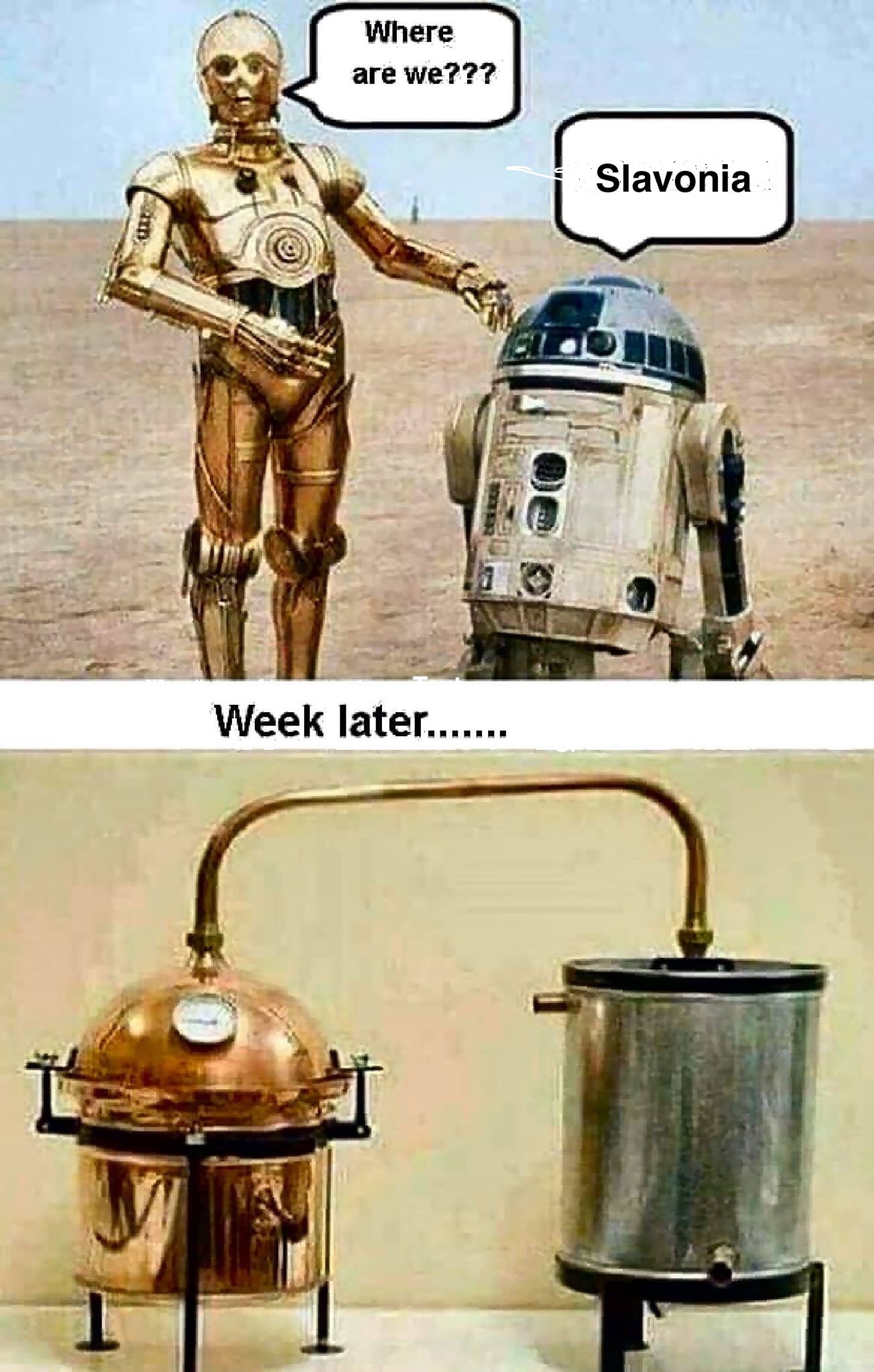
5. Rakija-powered Tomos
Believe it or not, legend has it that the famous motorcycle Tomos can run on rakija. The only trouble is a liter of rakija is far more expensive than a liter of gasoline, but maybe not for too long.
6. Lowering the body temperature
Smell of rakija reminds us of being sick. When we were kids, our grandmas were the ones taking care of us, and grandmas know best. Socks and scarves dipped into rakia and then worn are the best way to lower your temperature.
7. Disinfection
In this day and age we all know how important disinfectants are. Spray rakija on your hands and all the unwanted germs and bacteria will be gone in the blink of an eye. Take a shot after to do the same with your throat.
8. Good luck charm
After a baby is born, a bottle of rakija is buried underground. This rakija is to stay buried until the event of a great meaning - usually wedding. Opening that bottle of rakija and serving it to guests means good luck.
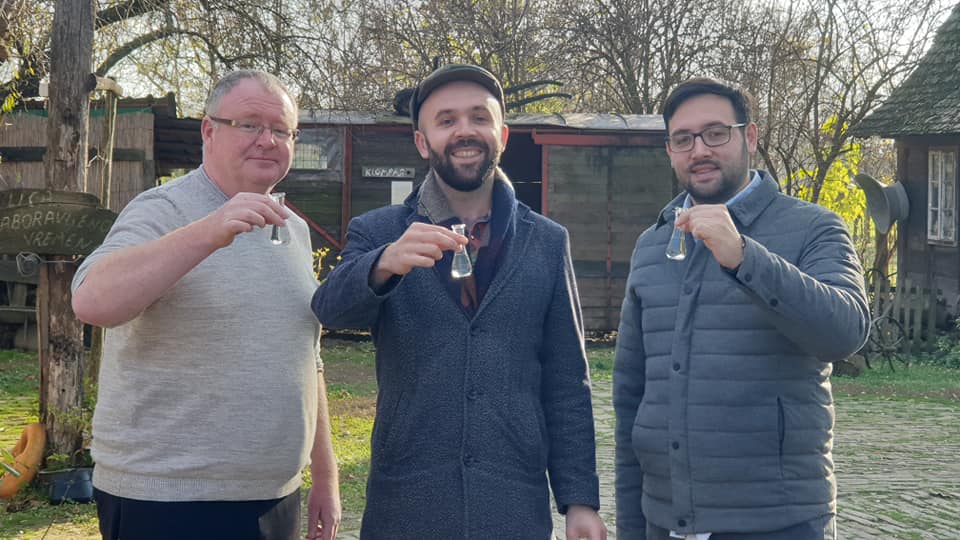
(TCN in familiar Slavonian drinking pose with Kulen Travel's Domagoj Butkovic and Stanko Skrobo at the phenomenal Baranjska Kuca in Karanac)
9. Better than a contract
When you buy something, settle a deal or get a job, you are supposed to have a rakija with everyone who you meet shortly after. This tradition is called aldumash and it is here to make sure your new contract is going to last.
10. Skin cleaning
A well hidden secret from many of us is that rakija can be used to clean the skin of your face. It's not as strong as medical alcohol and it does have antioxidants and vitamins which are good for your skin. You might smell funny, but you will look nice!
Looking for more extreme rakija insights? Check out the TC Rakija, Disconnecting People guide.
Slavonian Villages Without One Coronavirus Case Since Beginning of Pandemic
November the 10th, 2021 - Three Slavonian villages have managed to avoid the novel coronavirus completely with not one single case reported since the very beginning of the pandemic at the beginning of 2020.
As Poslovni Dnevnik writes, while what is being referred to as the fourth wave of the coronavirus pandemic is continuing to break records, a year and a half after the appearance of COVID-19 there is a well and truly "corona free" zone in certain parts of Eastern Croatia, Glas Slavonije writes.
In three Slavonian villages in the municipality of Levanjska Varos, more precisely in Paucje, Milinac and Ratkov Dol, so far not one single coronavirus positive person has been recorded. These three Slavonian villages, living connected to the slopes of Dilj and Krndija, number about 30, and Paucje boasts around 50 residents.
For example, a mere macadam road leads to Ratkovo Dol, from Milinac you can only go to the Cenkovo, and on the side is Paucje, from where you can only go to Borovik. There are just over 40 households in these three Slavonian villages, mostly populated by the elderly.
“There has never been a case of coronavirus in those three villages because they don’t have as many young people going out and about, they don’t have a lot of contact with areas where more people gather together. In addition, there are no bus lines to these three villages, only a school bus picks local kids up to take them to school,'' explained the mayor of Levanjska Varos, Slavko Tidlacka.
In these three Slavonian villages there are no shops, cafes, associations, social activities, wedding festivities, sporting events, nor are there any real places and occasions for gatherings.
"These three villages are supplied with basic groceries via a mobile shop, which also reduces the possibility of contracting the infection. All this indicates that people are in some way isolated, and thus protected,'' added Tidlacka. In these villages, 70 percent of the population is elderly, with less contact and movement, and this reduces the possibility of exposure and infection.
Eva Maricek also confirmed for local portal Glas Slavonije that the novel coronavirus has never found its way into Milinac.
“We feel safe here, but I fear for four children and ten grandchildren living in larger places. We're a big family, but so far only my daughter's husband from Nasice has had the virus. My husband and I were vaccinated, with Pfizer, twice, I got the vaccine in Djakovo, and he managed to get vaccinated in the local clinic in Varos, he isn't a well man, so it was necessary,'' explained Eva, adding that if you don’t have a car in that area, it’s hard to get by.
"There have been no buses running here for years, and the mobile shop is no longer coming to the village. Well, not even the coronavirus will bother coming to Milinac!'' said Eva Maricek jokingly. When asked how a typical day goes in Milinac, she answers: "A little bit of doing the garden, a bit of tending to the pigs…"
Ana-Marija Petrovic also confirmed that Paucje is free of coronavirus even after a year and a half of the ongoing global pandemic.
"We're surrounded by pure nature, and we're careful," said Petrovic.
The entire municipality of Levanjska Varos with its 11 settlements without any infected people continued until October 2020, quite some months after the virus conquered the world. In the meantime, the coronavirus, as was confirmed the principal Natasa Sego, did manage to find its way into the only school in the area, which has just 45 students.
While isolation, a lack of transport, few gatherings and as such few chances to get exposed to the virus all go in the favour of these villages, perhaps the famed Croatian ''cure all'' of rakija also has something to do with it? Who knows...
For more, make sure to check out our dedicated lifestyle section.
Discovering Authentic Croatia's Secrets With Seoski Tourism
November 4, 2021 – Village tourism or countryside tourism - Seoski tourism in Croatia - offers authentic, traditional experiences. Aleksandra Kuratko, secretary of Udruga ruralnog turizma Hrvatske (Croatian Rural Tourism Association) tells us more about it, and their work to help facilitate it
Croatia's visitor offer is evolving and expanding. There are exciting aspects of authentic Croatia to be discovered. Away from the beach, villages inland often look remarkably similar to how they did one hundred years ago. There, crops are grown and produce made in ways passed down through generations of families. And, in some lucky instances, these family farmers are willing to open their doors, invite you inside and show you how they live.
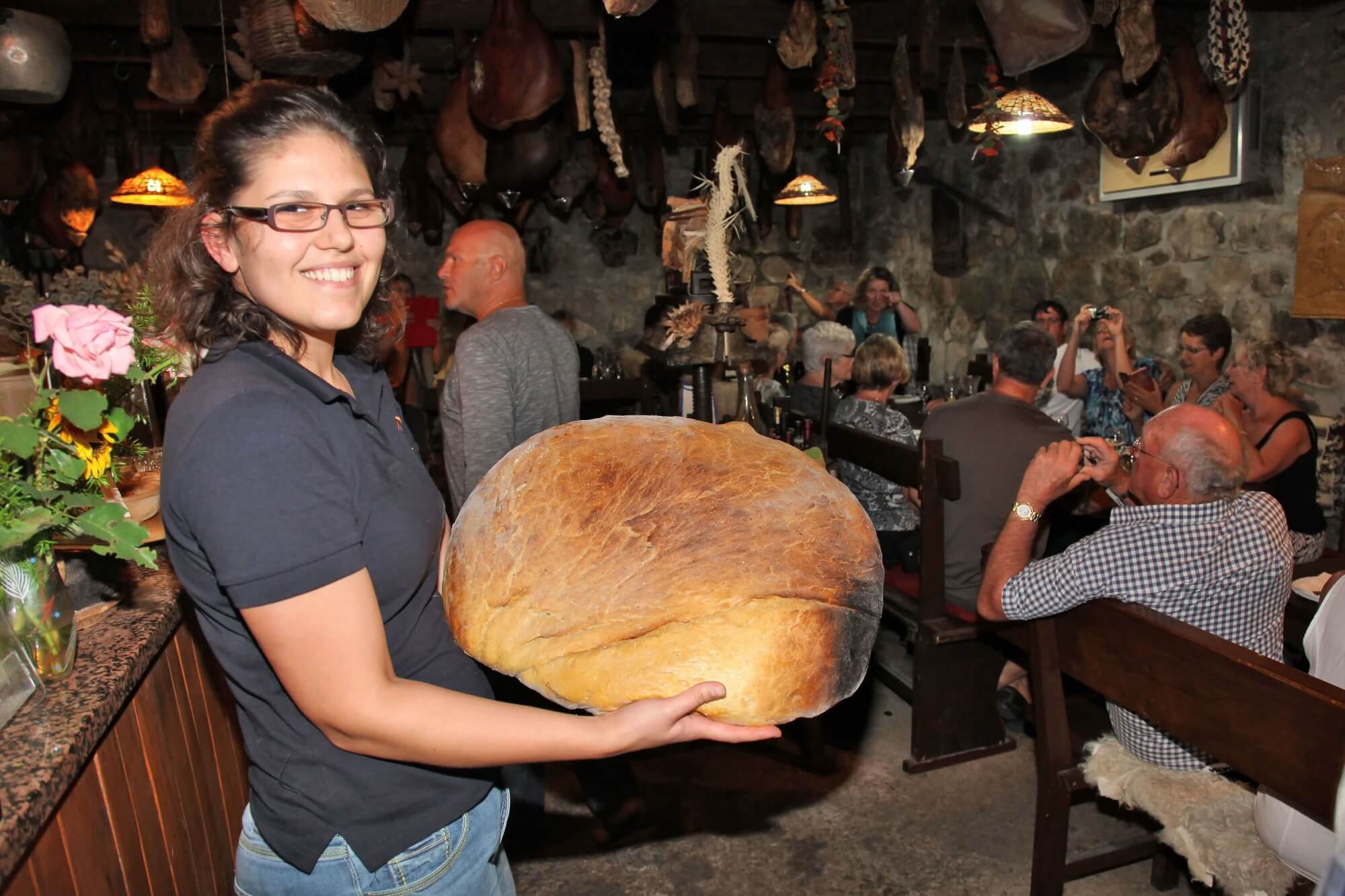 Bread from the peka at Agroturizam Antunović on Pelješac
Bread from the peka at Agroturizam Antunović on Pelješac
Seoski Tourism – translated as either village tourism or countryside tourism – is just that. Family farms that offer hospitality. These are some of the most homely and most welcoming accommodation experiences you can have in Croatia. Offering sights and sounds, tastes and flavours that you can't find anywhere else, visits or stays in Seoski Tourism places have long been loved by locals for weekend breaks or holidays outside peak summer. But, increasingly, these authentic Croatia experiences are being discovered by international visitors.
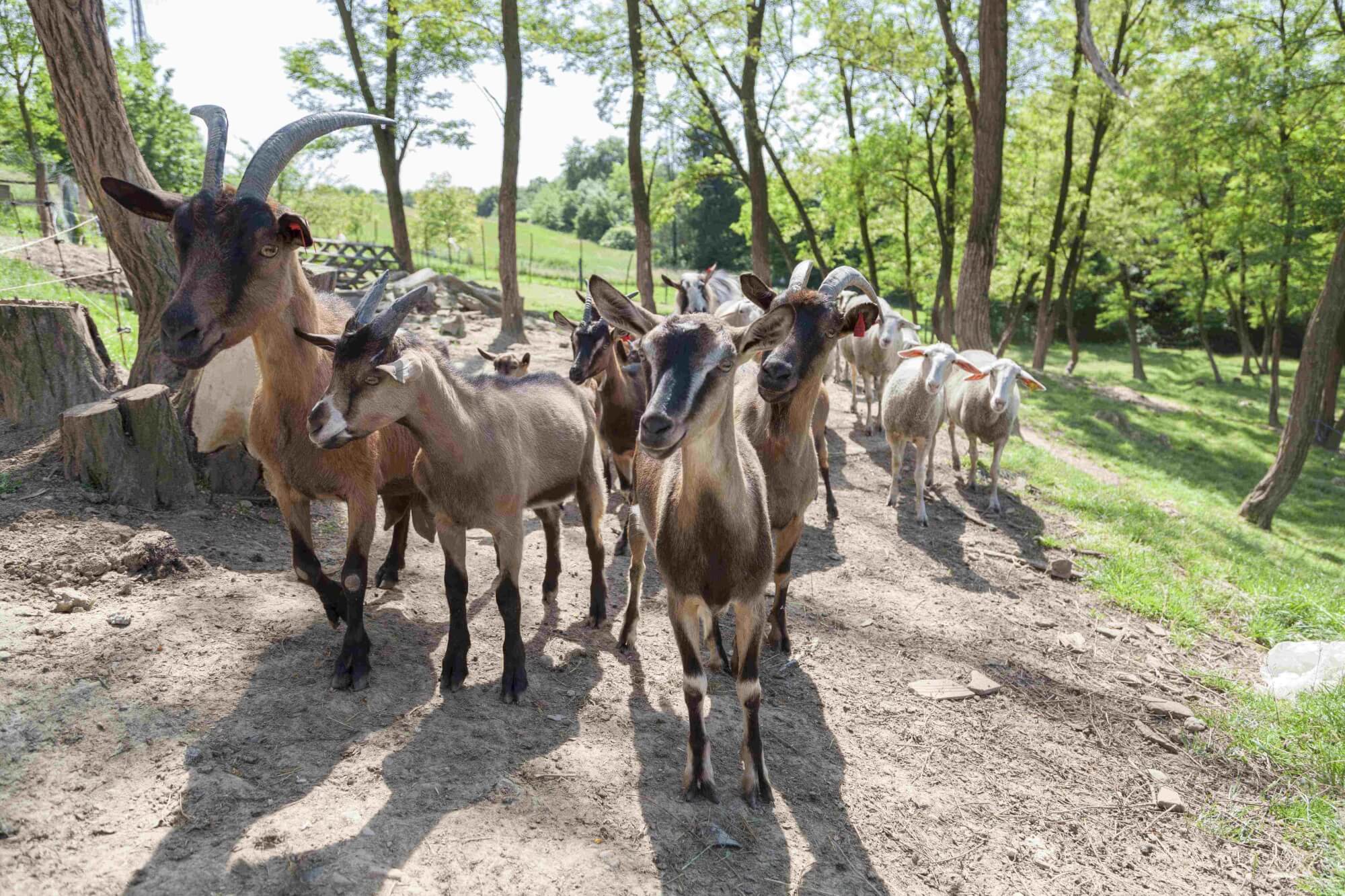 Moslavina goats at Kezele family farm © Davor Konjikušić
Moslavina goats at Kezele family farm © Davor Konjikušić
One institution trying to facilitate the growth in interest is Udruga ruralnog turizma Hrvatske - Croatian Rural Tourism Association. Since it was formed in 2016, they have tried to bring together Croatia's family farm hosts, to promote them and educate them, and to build bridges between these independents and tourist boards, tourist agencies, educators and even the wider world outside Croatia.
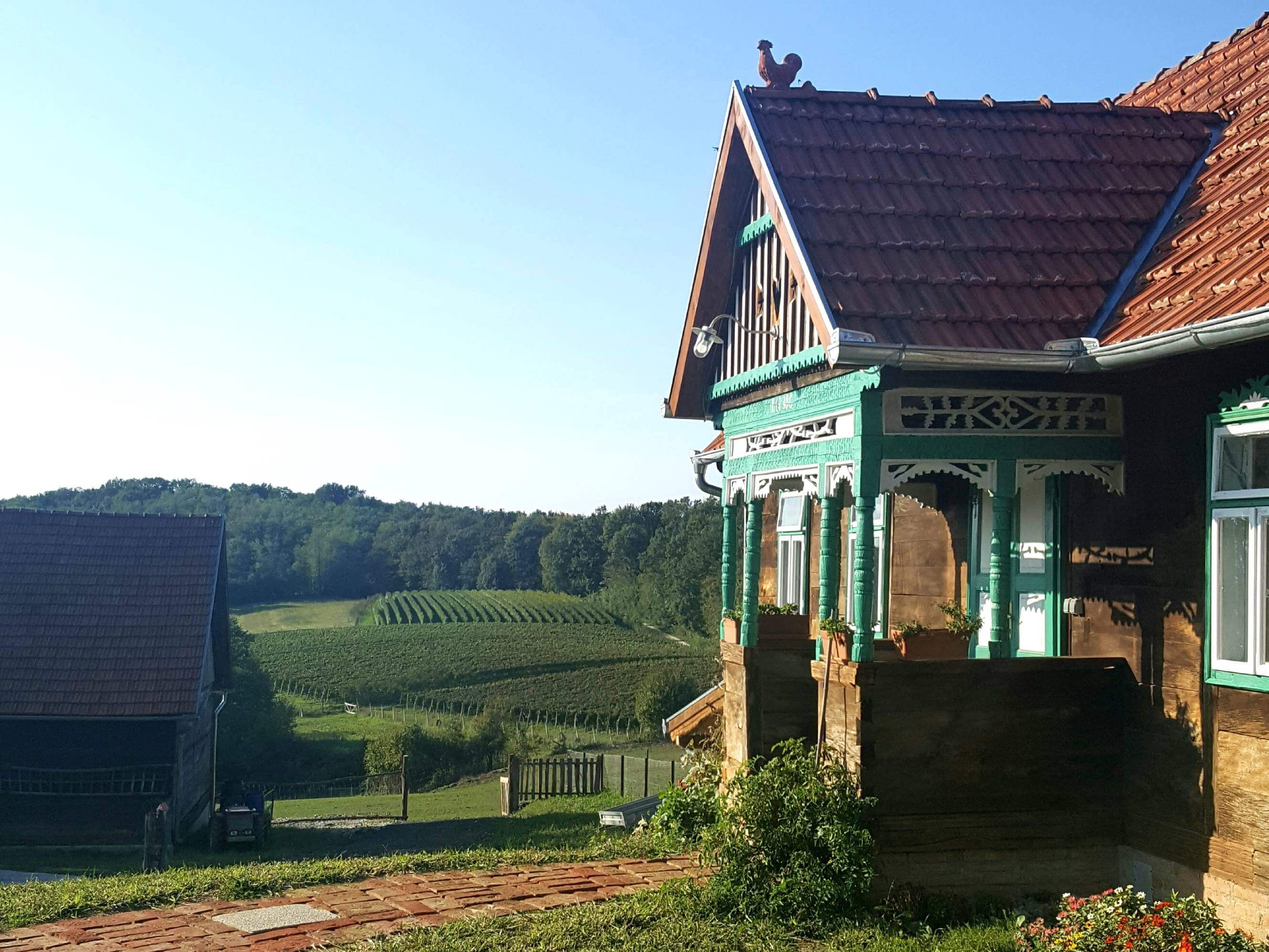 Seoski turizam Kezele in Šumećani, on the border of Zagreb County and Bjelovar Bilogora County © Davor Konjikušić
Seoski turizam Kezele in Šumećani, on the border of Zagreb County and Bjelovar Bilogora County © Davor Konjikušić
Based in Ivanić-Grad, Zagreb County, the Croatian Rural Tourism Association is currently touring the length and breadth of the country, holding workshops with as many Seoski Tourism family farms that will come. And if the farmwork doesn't allow them free time, then they can attend Croatian Rural Tourism Association workshops online.
On the eve of the association's online Seoski Tourism workshops for Central Croatia and Slavonia, TCN interviewed Aleksandra Kuratko, secretary of Udruga ruralnog turizma Hrvatske, to find out more about Seoski Tourism in Croatia.
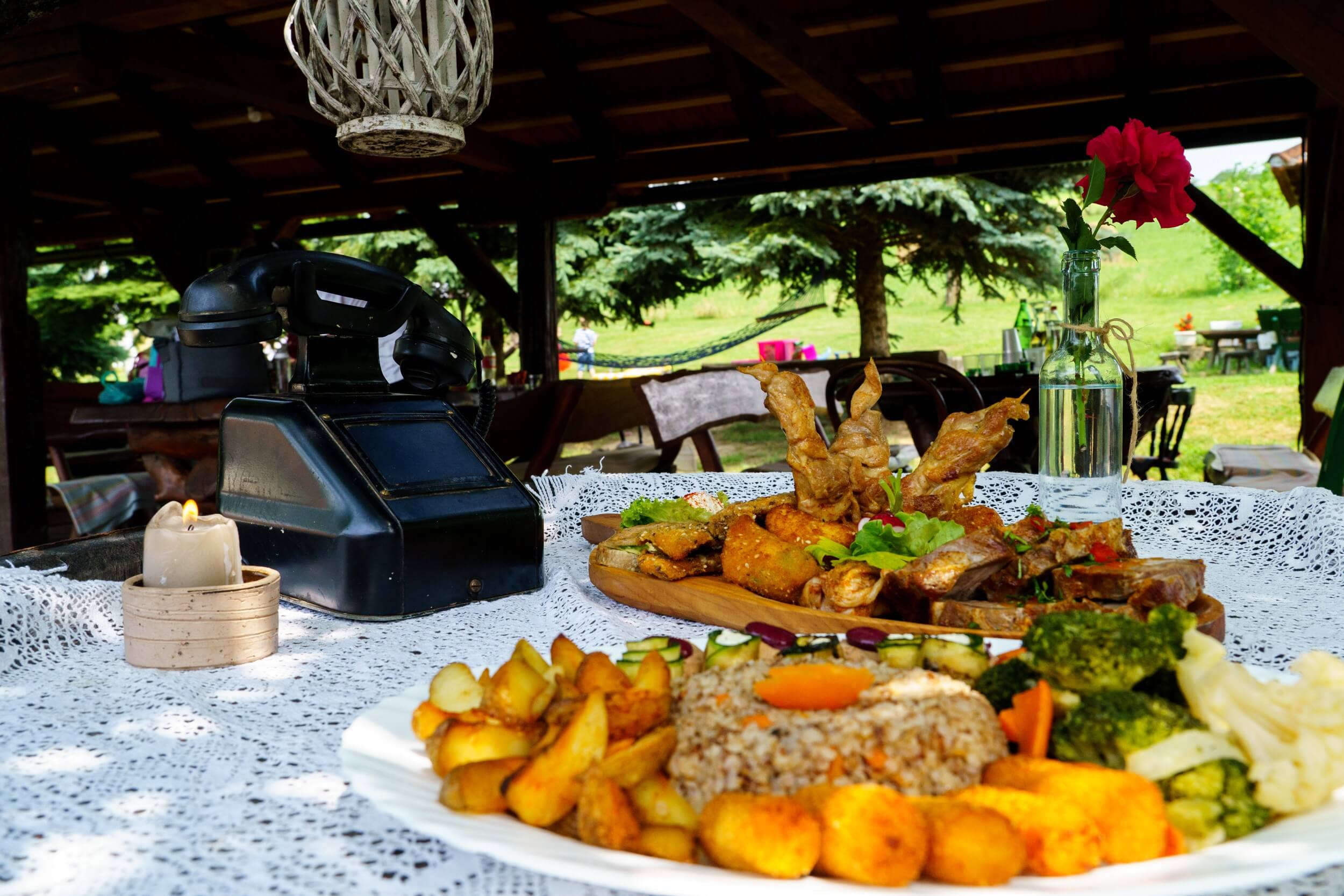 Prigorje specialties at Rakić family farm
Prigorje specialties at Rakić family farm
My name is Aleksandra Kuratko and I am secretary of Udruga ruralnog turizma Hrvatske. As an association, we are 5 years old.
We have 35 members, most of whom are service providers in what we call Seoski Tourism. We also have several tourist boards and two educational institutions as members.
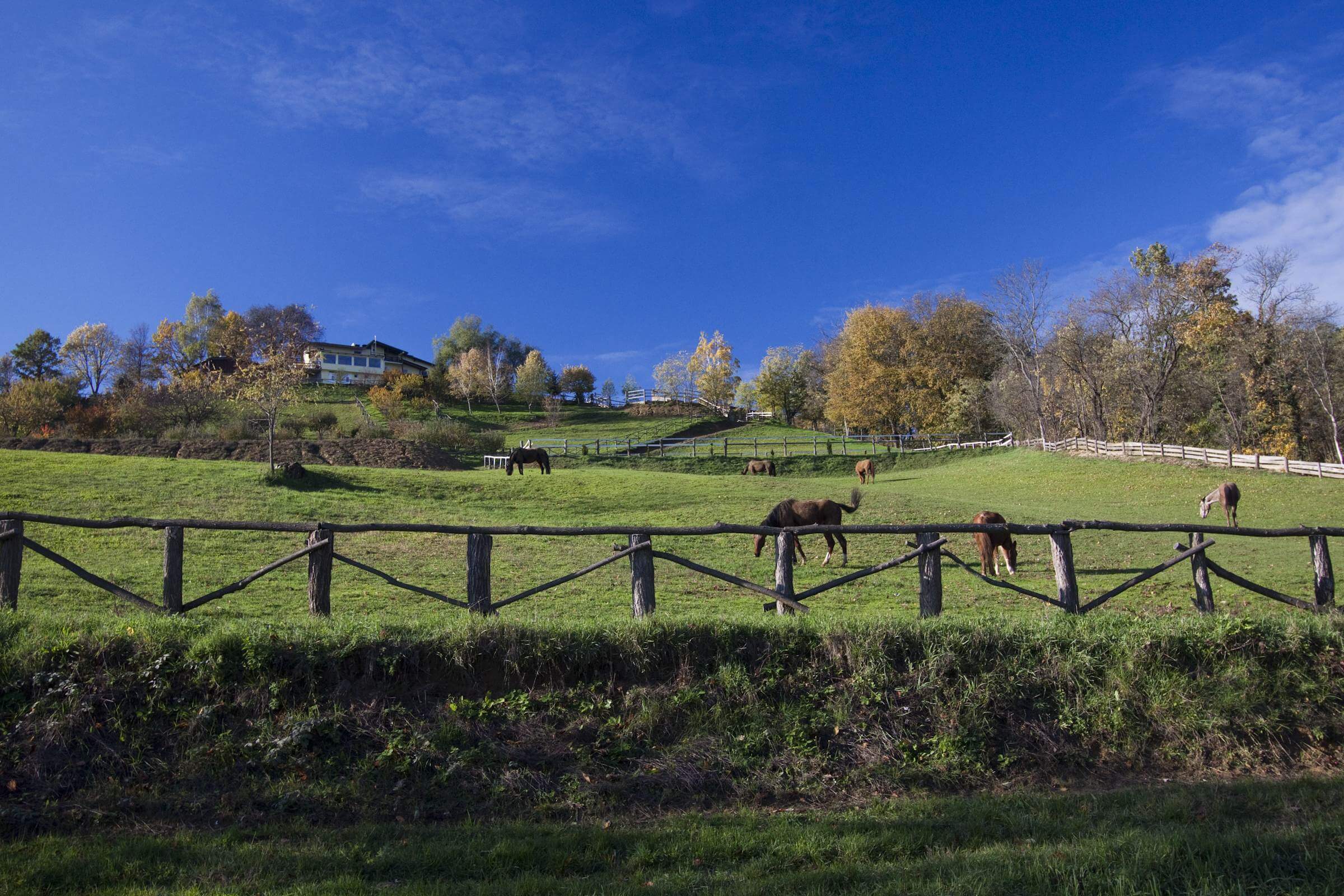 Bilogora horses in autumn at Agroturizam Na malenom brijegu © Vladimir Vlajinić
Bilogora horses in autumn at Agroturizam Na malenom brijegu © Vladimir Vlajinić
Seoski tourism is not quite the same as rural tourism, because rural tourism is many different types of tourism that happen in rural areas. Seoski tourism - which you might translate as village tourism - is quite specific. We assemble people who work in agriculture and who, at the same time, are also offering hospitality. In English, you might call them Farm Stays. Or Agro-tourism – a merging of agriculture and tourism.
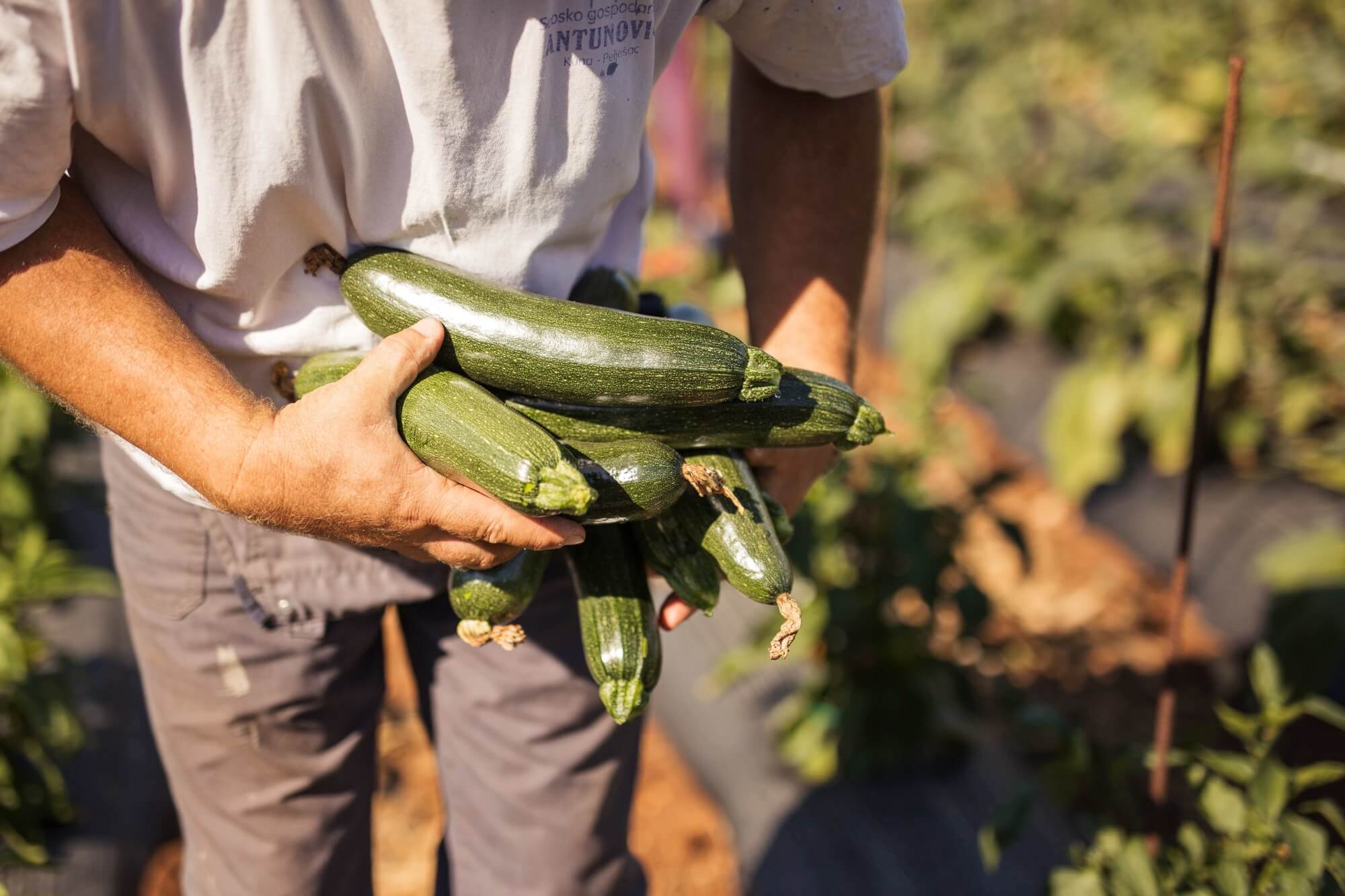 Fresh vegetables at Agroturizam Antunović on Pelješac
Fresh vegetables at Agroturizam Antunović on Pelješac
People who work on agricultural estates often take care of local cultural heritage. For example, they might maintain and renew traditional wooden or stone houses. Many also have etno collections, in which they preserve different objects from their region. Some of these objects might have been used in agriculture and households hundreds of years ago. So, they are preserving the cultural heritage of Croatian villages. This is what we call material cultural heritage. But, there's another kind.
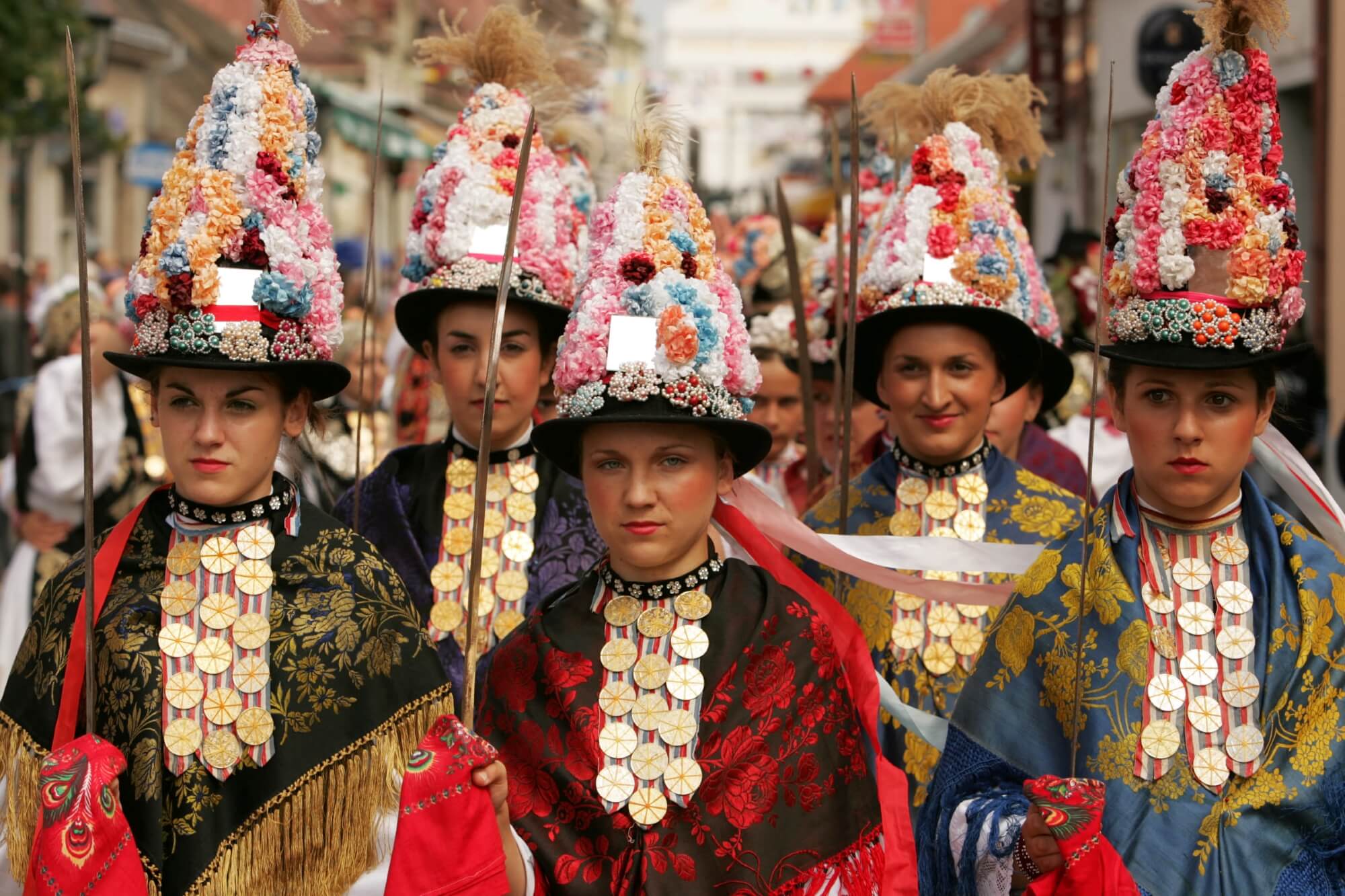 Cultural heritage preserved in one Slavonian village © Mario Romulić
Cultural heritage preserved in one Slavonian village © Mario Romulić
Non-material cultural heritage is also a part. That might be preserving old recipes of traditional, regionally-specific dishes. Or, it might be showcasing the songs and dance of local music.
We are currently running a project which is supported by the Croatian Ministry of Tourism and Sports in which we hold 37 Seoski Tourism workshops in the field all over Croatia. There will also be around 15 online workshops. The workshops are aimed at colleagues who currently operate in Seoski Tourism – they work in agriculture and offer hospitality. Also invited are local tourist boards and local action groups.
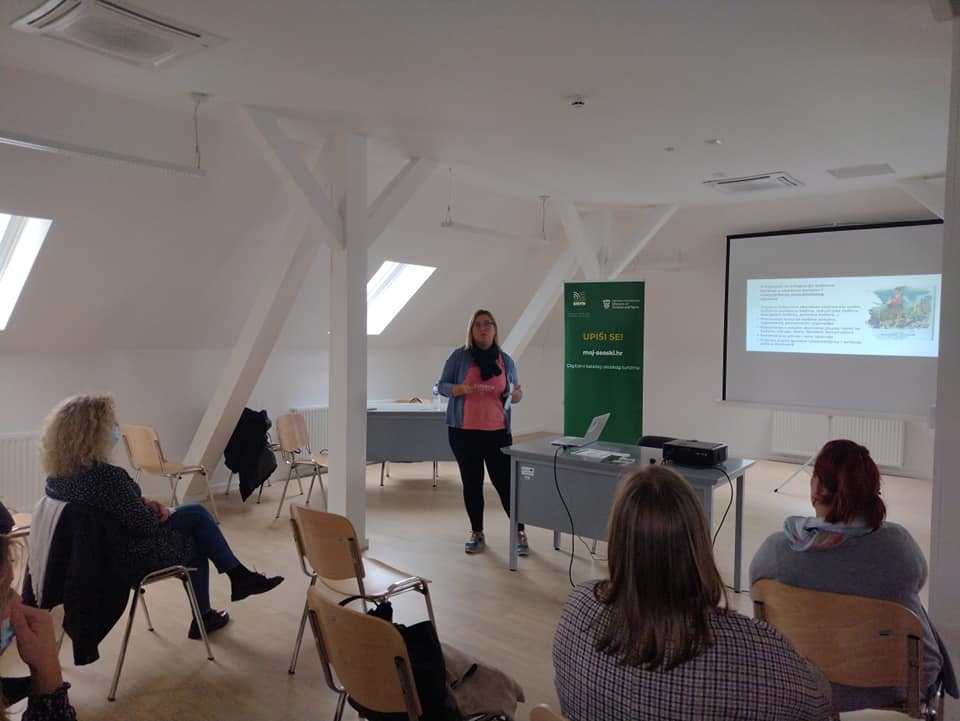 Photo from URTH workshop in Slatina
Photo from URTH workshop in Slatina
So far, we conducted 20 workshops in the regions of Central Croatia, Slavonia and Baranja, and Podunavlje. From next week until the end of the year, we will conduct the workshops in Istria, Kvarner, Lika and Dalmatia. Some service providers were not able to attend earlier workshops, because of work commitments of Covid. So, we decided to also offer access to the workshops online. Tomorrow is our first online workshop for Central Croatia and on Friday it's the online workshop for Slavonia.
These workshops are interactive discussions between our association, service providers and all other stakeholders. We discuss the legislative framework, which can be extremely complex. We talk about new trends in tourism for the post-pandemic era. We also discuss the importance of integrating cultural heritage in digital promotion.
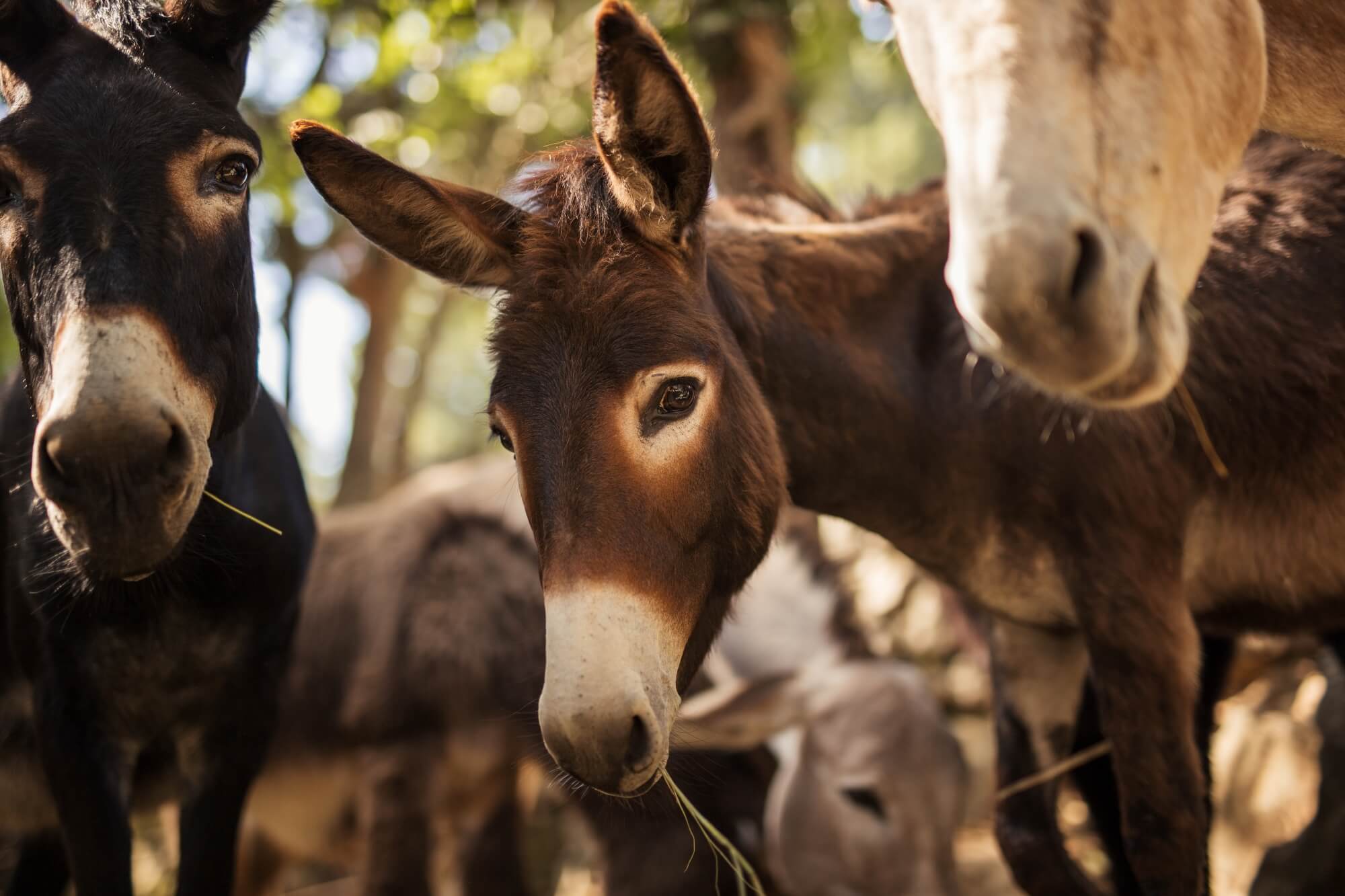 Donkey farm at Agroturizam Antunović on Pelješac
Donkey farm at Agroturizam Antunović on Pelješac
For the legislative framework, we have initiated the formation of a working group for the development of Seoski Tourism, which is now operating in the Croatian Ministry of Tourism and Sports. So, at the workshops, we ask if anyone is having issues. We collect the responses and address them in the working group.
Part of the workshop is the presentation of a new web application of Seoski Tourism, which we have developed with Croatian Ministry of Tourism and Sports. It has two purposes. One is to create a digital catalogue of Croatian Seoski Tourism. You can see region by region some of the Seoski Tourism options – currently around 40, those who have already enrolled.
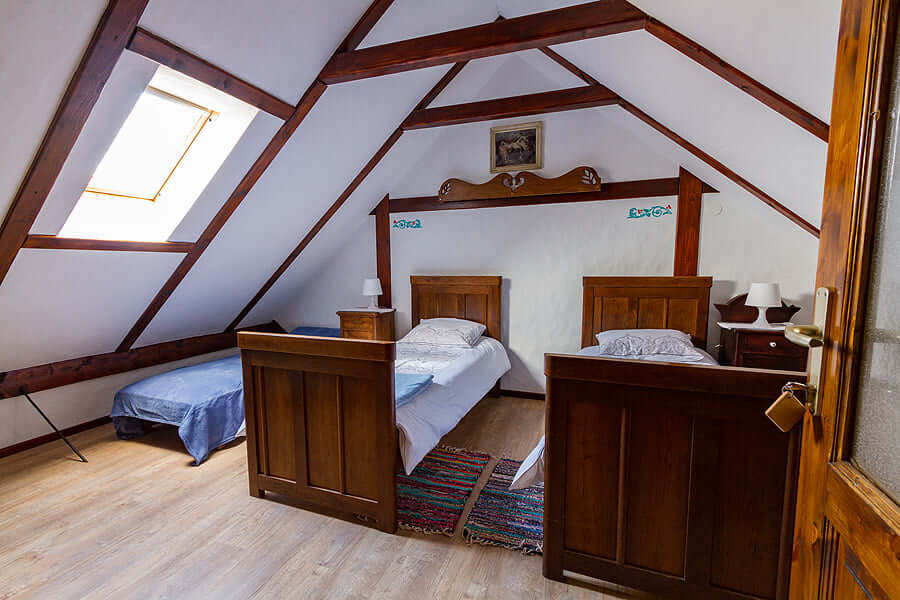 Podravina Etno rooms at Zlatni klas Otrovanec
Podravina Etno rooms at Zlatni klas Otrovanec
A version of the app is currently available on the website of the National Tourist Board. But, they are building a new website. The forthcoming version of the catalogue will likely be more user-friendly with many more functions and options. On the new website, Croatia's Seoski Tourism options will be detailed in many different languages. It should be a great resource not only for tourists but for travel agencies, journalists like you and for educational institutions. That's the reason we are devoting time in our workshops to encourage Seoski Tourism providers to enroll. We are just at the beginning of the process.
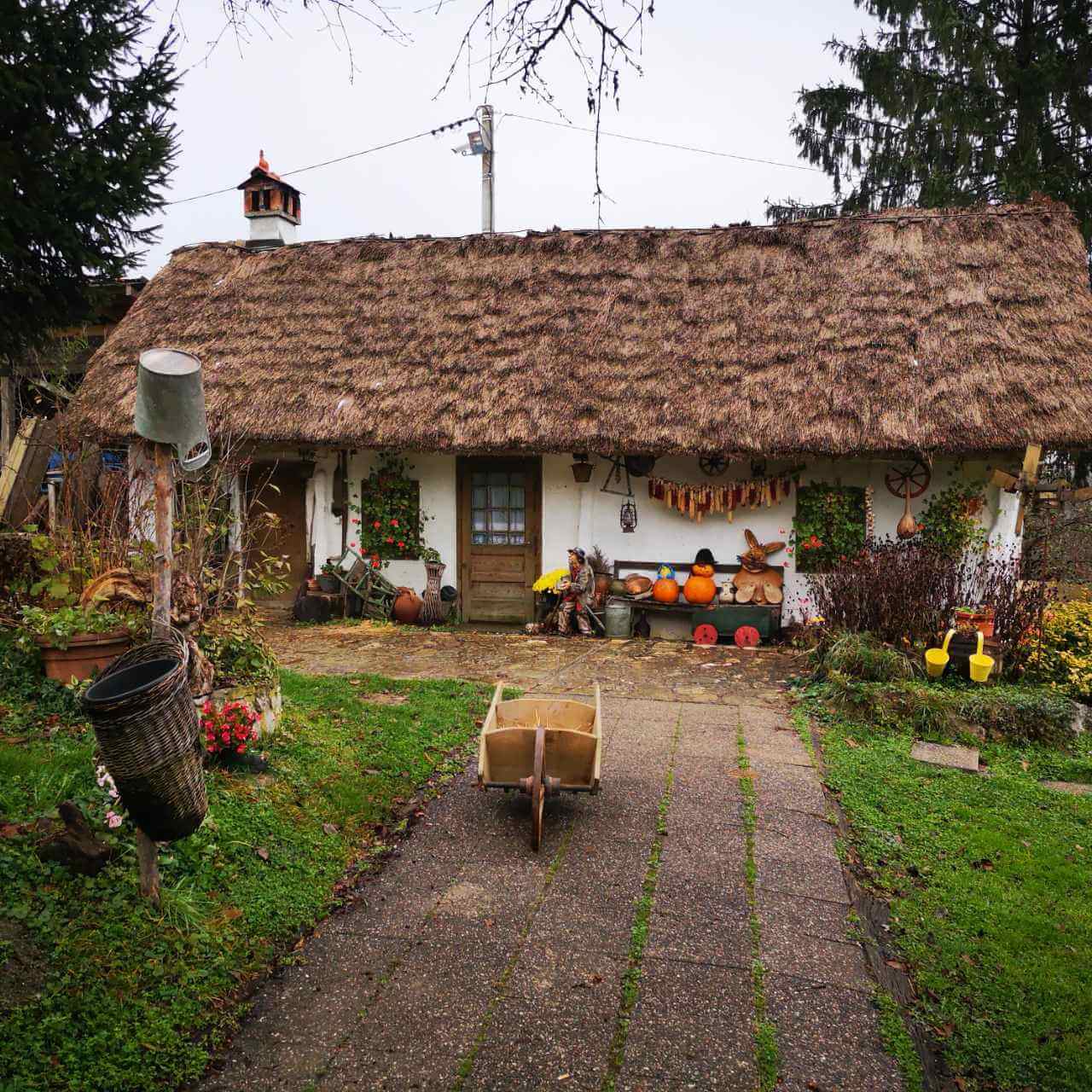 Grešna pilnica in Zagorje © Jasna Podboj
Grešna pilnica in Zagorje © Jasna Podboj
The second purpose of the app is to collect information about the service providers. This info will be used by our working group when defining a Croatian model of Seoski Tourism. So far, we have taken examples from Slovenia, Italy and other countries that are successful with Seoski Tourism. But, these models were entered into our legislative system without fully considering our distinct business and cultural environments. That is now about to change.
We are very happy that, following many years of partially successful advocacy, there is now political will at a ministerial level to really shape things up, to change the laws and regulations in order to facilitate Seoski Tourism. We want to encourage more Seoski Tourism, not to have people from agriculture being turned away because of the difficulty of the process and bureaucracy.
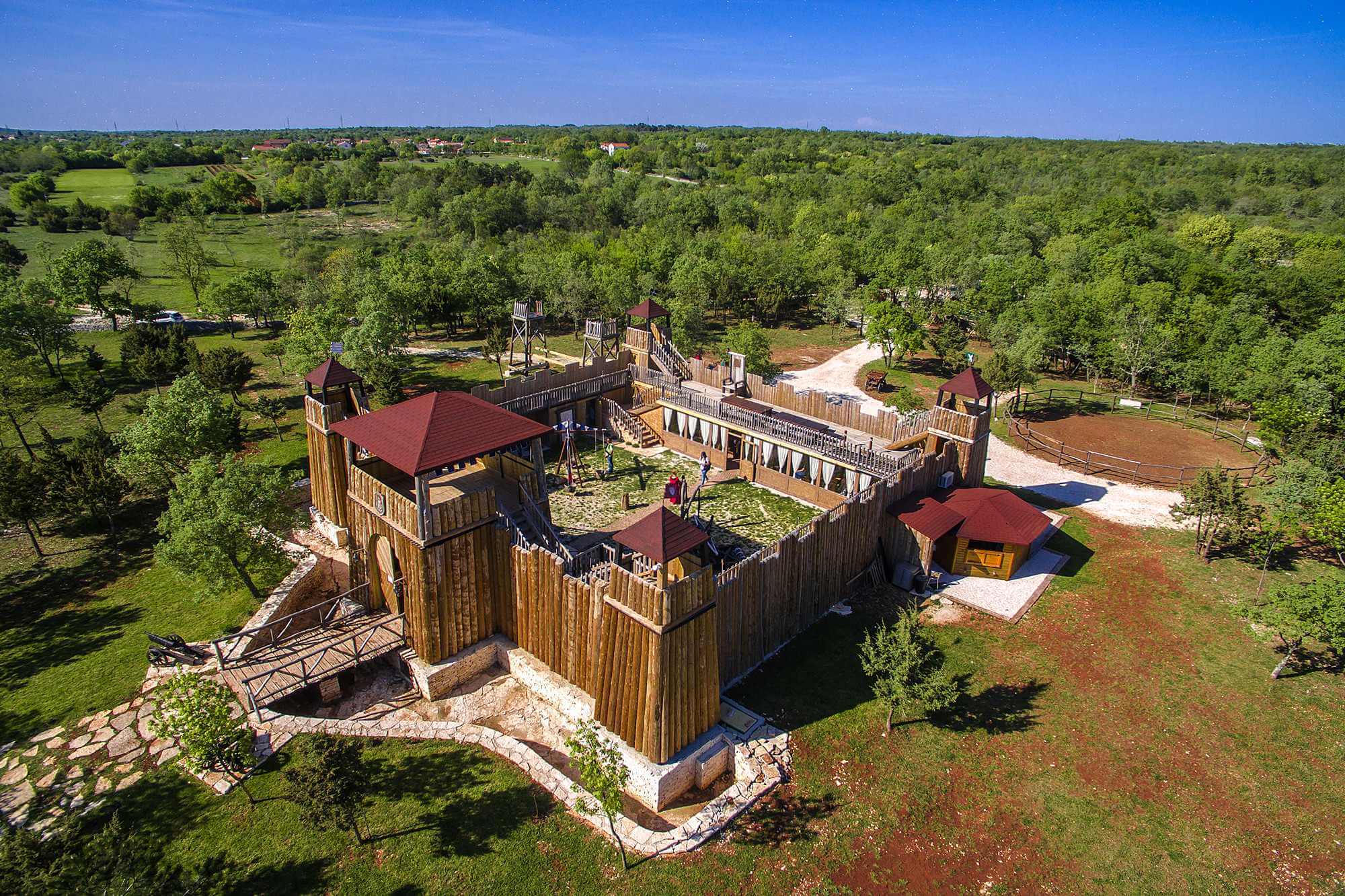 Medieval Theme Park San Michael © Silvia Otočan
Medieval Theme Park San Michael © Silvia Otočan
You said part of the workshops will focus on new trends. What are some of these?
Research has been done by a working group that is developing a new tourism strategy for Croatia. It's called Strategy for Sustainable Tourism to 2030. Under the auspices of this group, a number of research fields have been analysed.
The collected data shows that a huge percentage of tourists are now more inclined to eat locally grown and healthy food. They want to spend their time on estates that are run in accordance with ecological principles. So, they really care about issues like how waste is disposed of etc. They also pay a lot of attention to culture. They are curious to learn exactly how we are living, how we are working and how we produce things. They want to learn about our society and culture. And, importantly, they really care about how they spend their money. Above all, they want to spend money in areas that can help support local communities.
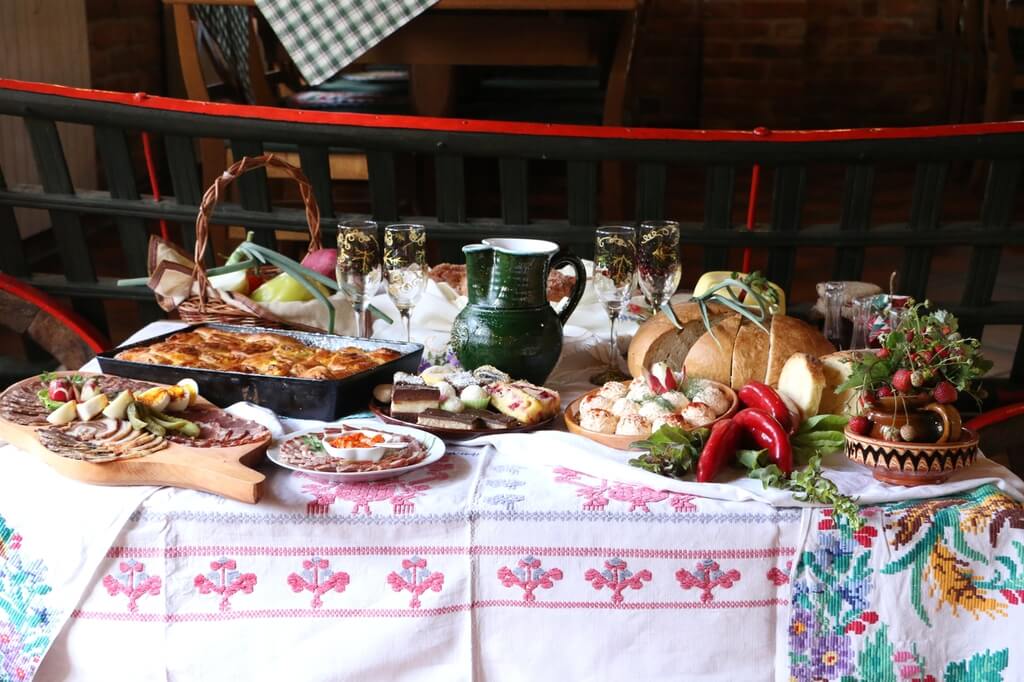 Prigorje Breakfast at Rakić Family Farm
Prigorje Breakfast at Rakić Family Farm
For us, this is really important. Because Seoski Tourism answers these demands to an incredibly high level. We do produce local, healthy food. Not only on the agricultural estates where you can experience Seoski Tourism, but also from their neighbours who just do agriculture. We are concerned with ecology, we protect cultural heritage and the money spent in Seoski Tourism stays in local communities, where it has very beneficial effects.
In the digital promotion part of the workshops we are trying to persuade people about the importance of their online presence. Basically, these days, if you're not online, it's almost like you don't exist. So, we try to explain the importance of having good-quality photos, short videos and a regular online presence.
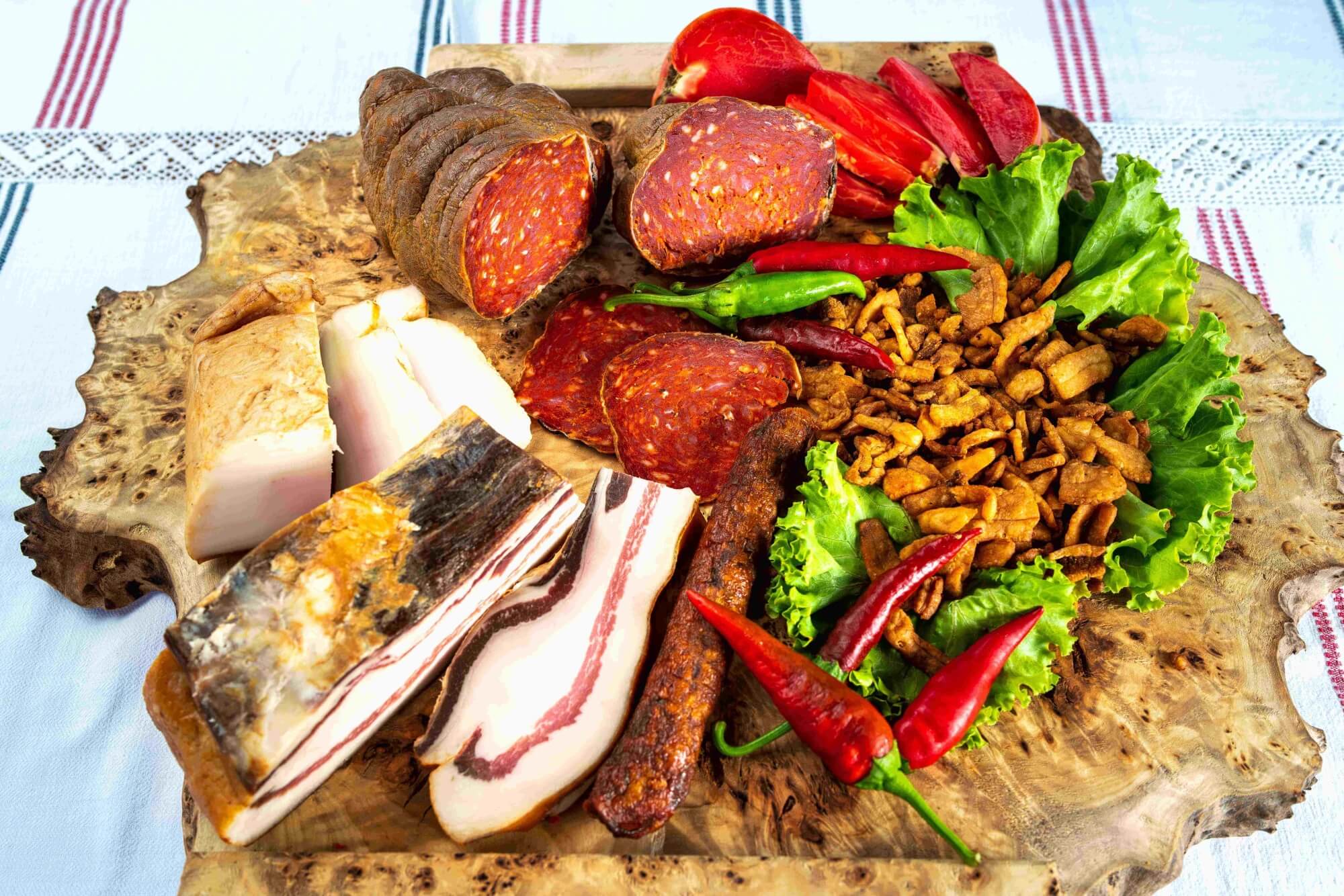 Kulen, čvarci and other specialties at Baranjska kuća © Denis Despot
Kulen, čvarci and other specialties at Baranjska kuća © Denis Despot
That's interesting. In some cases, it might be like two different worlds colliding - people who work in a traditional industry and a traditional environment having to adapt to a very modern way of operating. There's also another potential collision when providers learn of the expectations within modern tourism. Because these people can no longer just work in agriculture. To operate in Seoski Tourism, you're also very much expected to also be a host.
Yes. All of our current service providers who are successful within Seoski Tourism are also great hosts. It's essential. You can see it in almost all of the reviews for this kind of tourism. Guests come for the food and drinks and surroundings, yes. But, what they value the most, what they remember the most, is the host part of the experience. On the estates of Croatian Seoski Tourism, guests are welcomed like family. Across all of Croatian tourism we are expected to be good hosts. It's part of our reputation and the reason why many people come here from all over the world. In Seoski Tourism, it is vital we live up to those expectations.
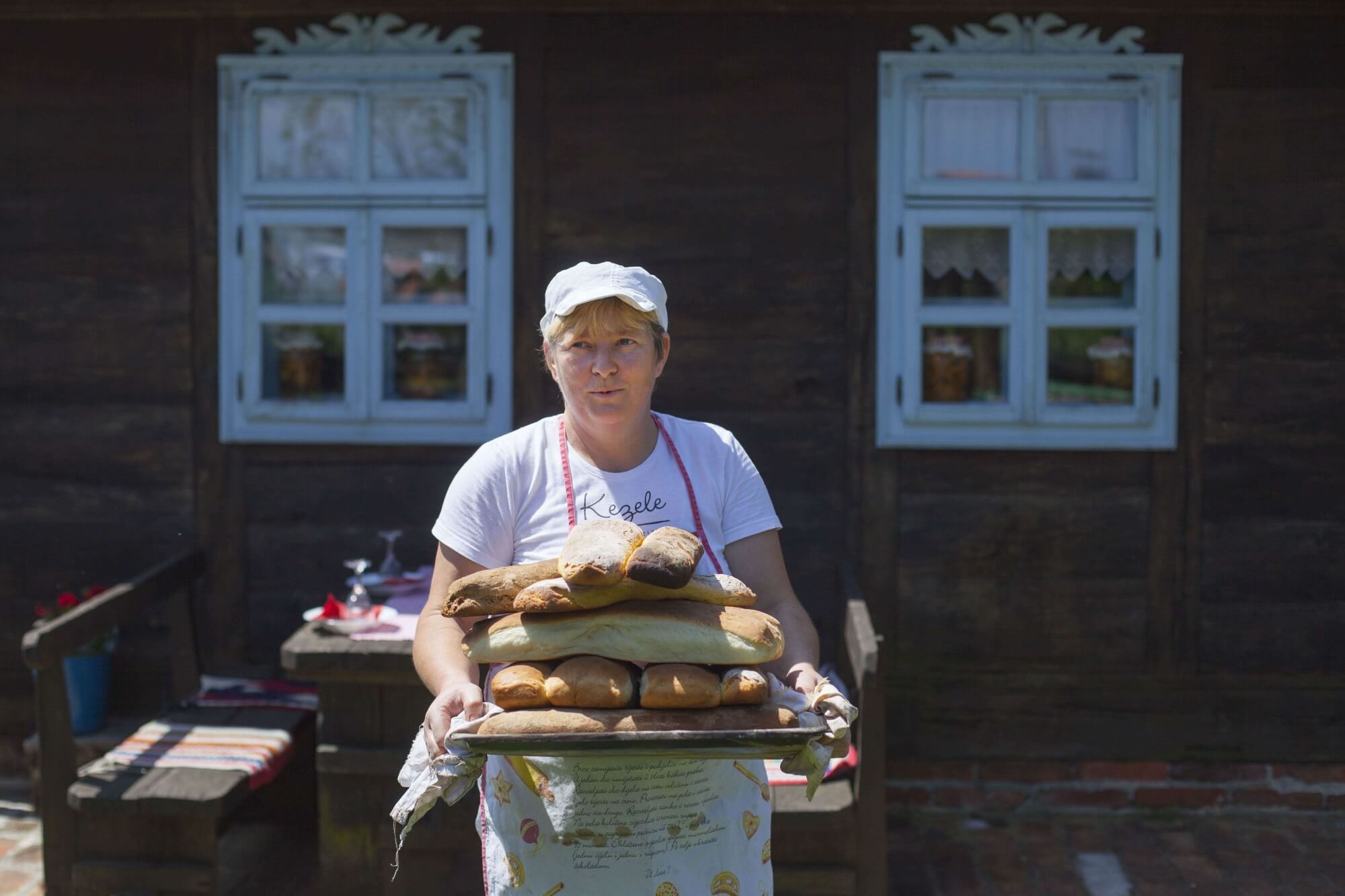 Kezele family farm © Davor Konjikušić
Kezele family farm © Davor Konjikušić
Another aspect of this, which is a more recently-observed element, is that visitors often want an insight into the actual lives, even the personalities of their hosts. They want not only to taste the homemade sausages you make, but they also want to know how you do it, where you do it, how you learned to do that. When they go to Spain, they want to know how the people there make their wine. And, when they come to Croatia, they want to learn how we do it here.
So, all in all, those of us in Seoski Tourism are really busy. We are in agriculture, yes, but we are also in tourism and we are also online. With this more recently-observed aspect, we will need to try and devote even more time to our hosting. It can be difficult to balance the demands on your time. But, in our workshops, we are trying to persuade people to talk more about themselves, their lives, their cultural heritage. And, if there isn't time to do everything themselves, then to involve different and often younger generations of the family. Sometimes within the hosting or alternatively just with the online promotion and presence.
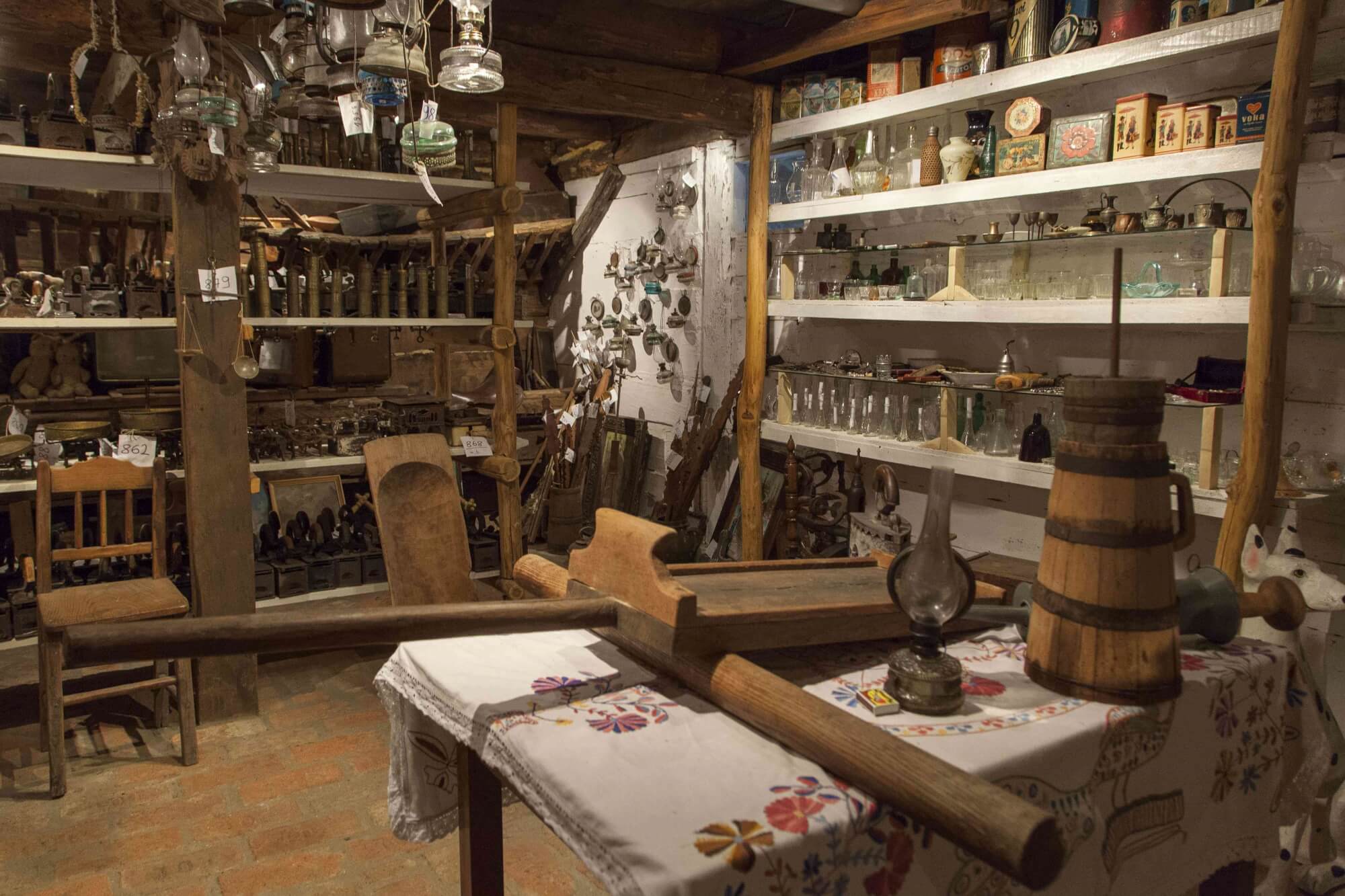 Kezele family farm ethno collection © Davor Konjikušić
Kezele family farm ethno collection © Davor Konjikušić
I've visited some family farms that were right at the start of their journey with Seoski Tourism and they seemed surprised that I was at all interested in what they do and how they do it. I think maybe they thought I was a bit crazy.
Yes, that is a response we sometimes also see at first. I think it's because our generation takes a lot of things for granted. We sometimes think that what we do is just what we do. We are not so good at showcasing it. “Why would I show someone how I make my cheese? I make my cheese like my grandmother used to make it” But, for those who open their doors to Seoski Tourism, inquiries about how they do what they do are only increasing. So, they seem to appreciate how we advise them in the workshops.
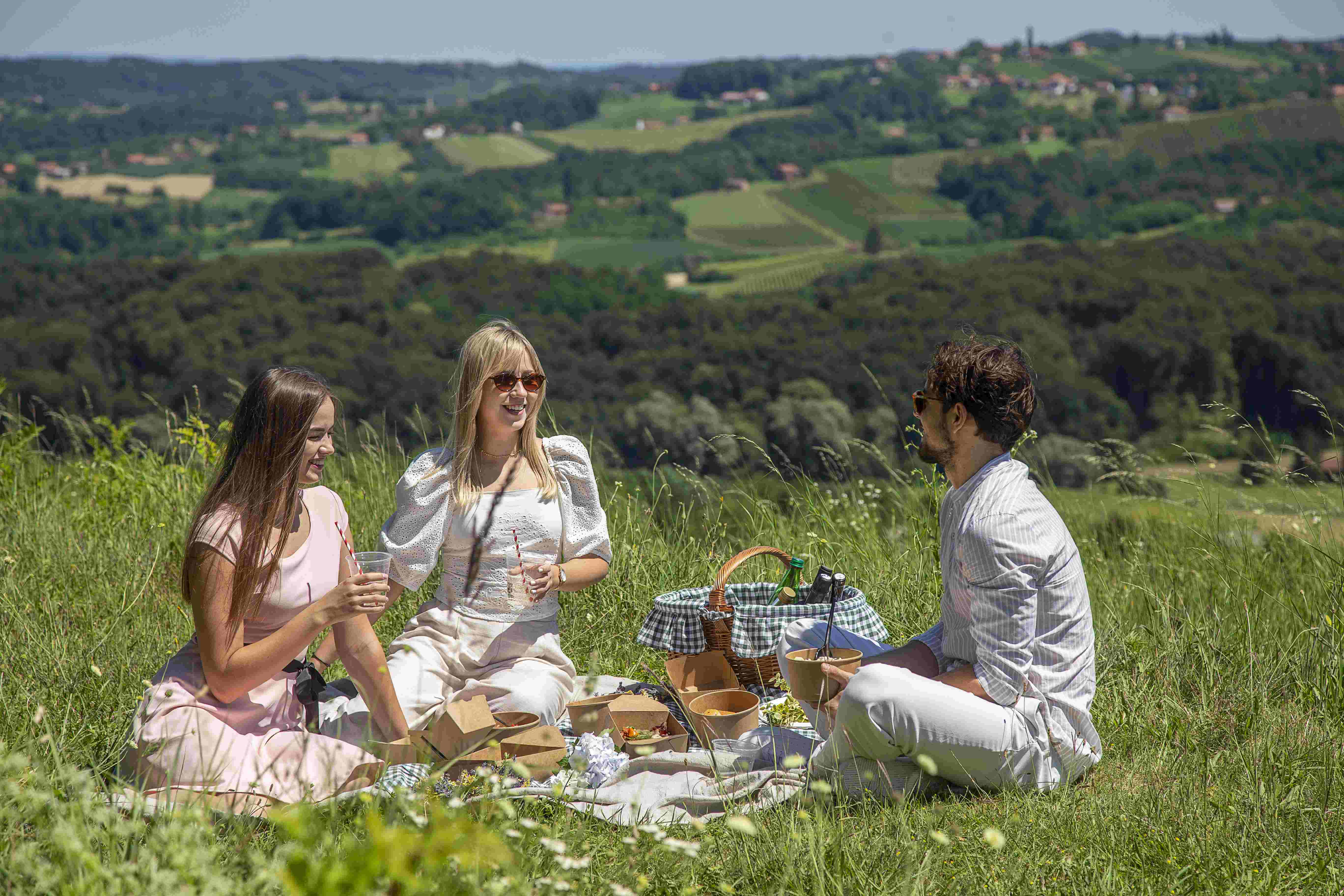 Picnic by Restaurant Međimurski dvori © Igor Nobilo
Picnic by Restaurant Međimurski dvori © Igor Nobilo
We are trying to let our producers know that Seoski Tourism is not just a platform to sell their produce and an overnight stay, but it's a full experience they can sell. There are agricultural farms in Austria that are established in tourism that you must pay only to visit. Of course, that doesn't happen currently anywhere in Croatia, even though some of our Seoski Tourism estates have sections that look like museums.
Some of these aspects are very new. And the feedback is great. I truly believe there are hidden treasures to be discovered in some Croatian villages. We are here to tell that story.
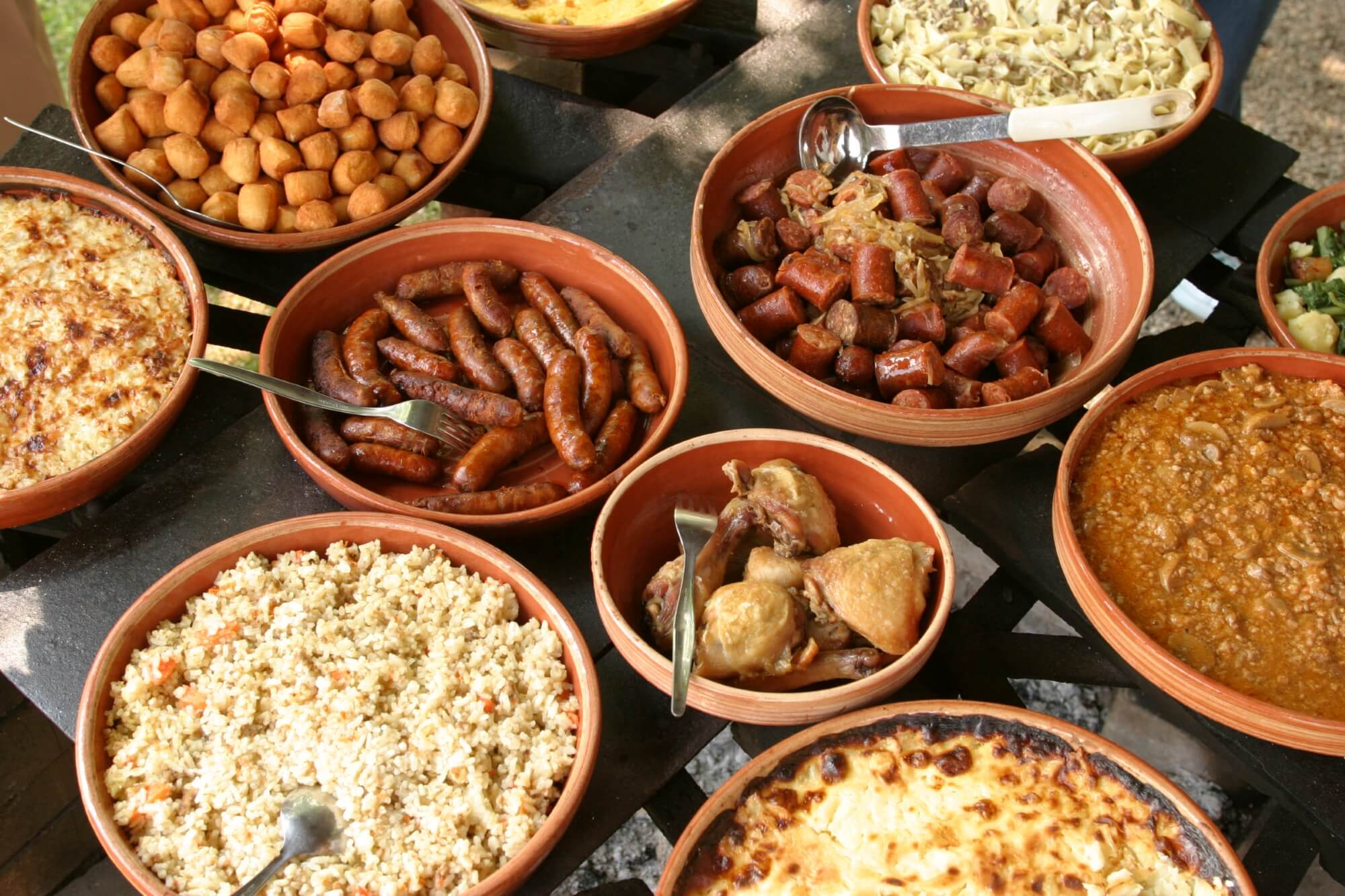 Selection of food from a Slavonian village © Mario Romulić
Selection of food from a Slavonian village © Mario Romulić
What is so rewarding about Croatian Seoski Tourism that international visitors would want to go to a traditional farm in some inland village instead of lying on the beach in Dalmatia for 14 days?
People come because they really want to see a different side of Croatia. And, there are many different aspects of Croatia to discover – not just Seoski Tourism, but also National Parks and Nature Parks. All of our current trends show us that more and more tourists are willing to come inland from the coast or to explore a different part of Croatia – inland Istria, for example, or continental Croatia.
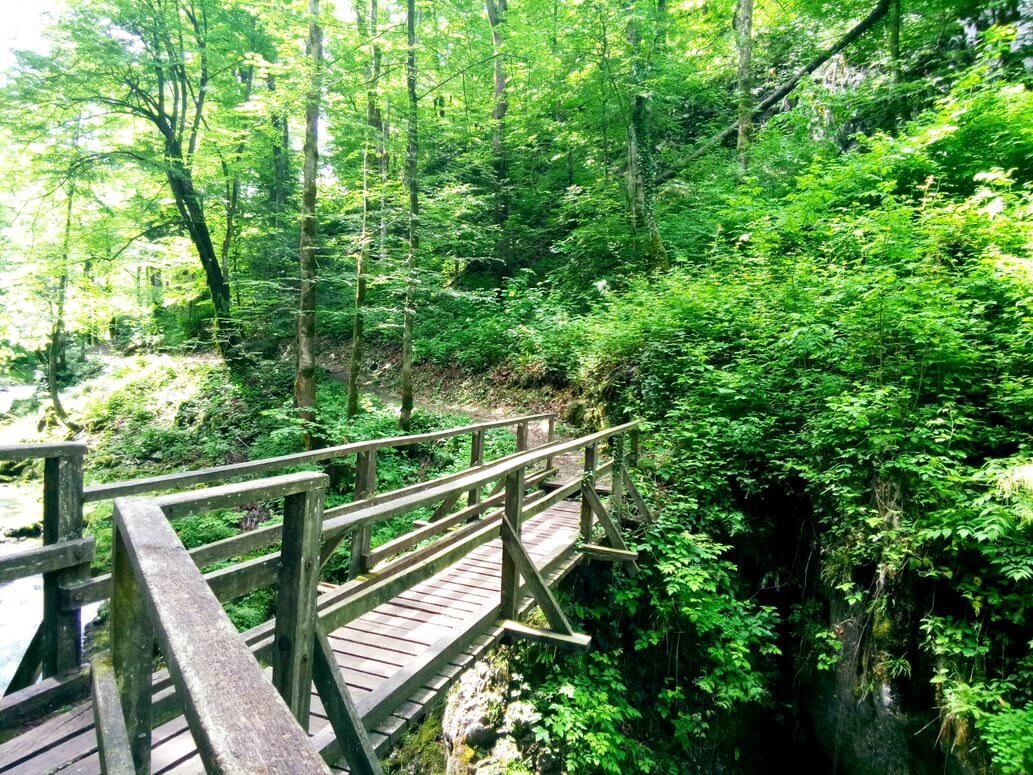 Kamačnik river canyon © Aleksandra Kuratko Pani
Kamačnik river canyon © Aleksandra Kuratko Pani
They really want to try authentic, local food. They want to eat healthy, to know what they are eating and how it is made. And, they want to experience flavours that are different from the usual ones they get from the supermarket.
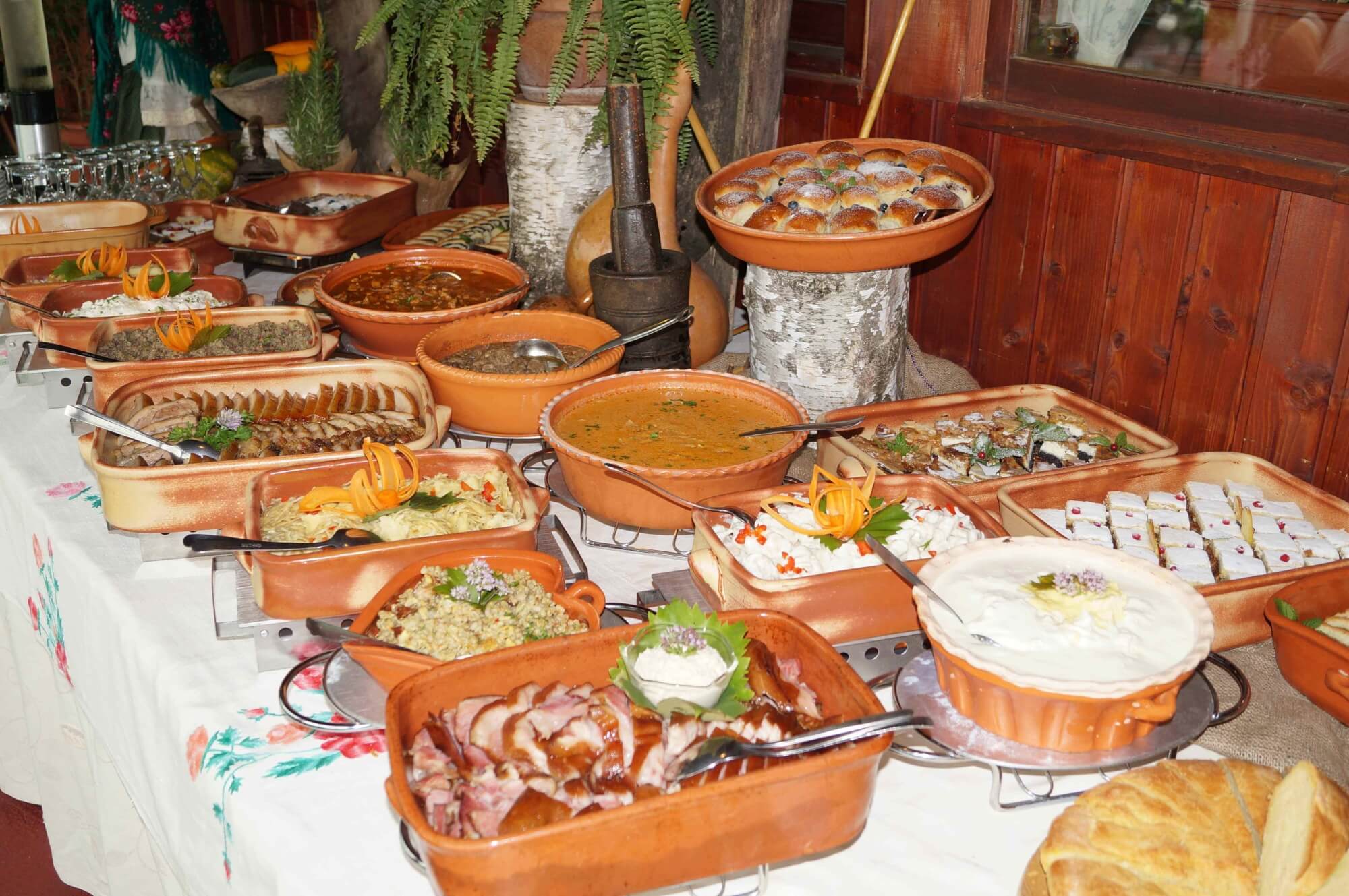 Traditional Međimurje table at Etno restaurant Međimurski dvori
Traditional Međimurje table at Etno restaurant Međimurski dvori
Also, I would say that with Seoski Tourism, people get to know better an authentic version of Croatia and its culture. It's a story we hear very often from our members. Some of them are visited by large groups from cruisers. These are people who might be on a cruise on the Adriatic and who journey inland for a day trip. Or, it might be a group who are cruising the Danube and disembark to visit a family farm in Slavonia, Baranja or Srijem.
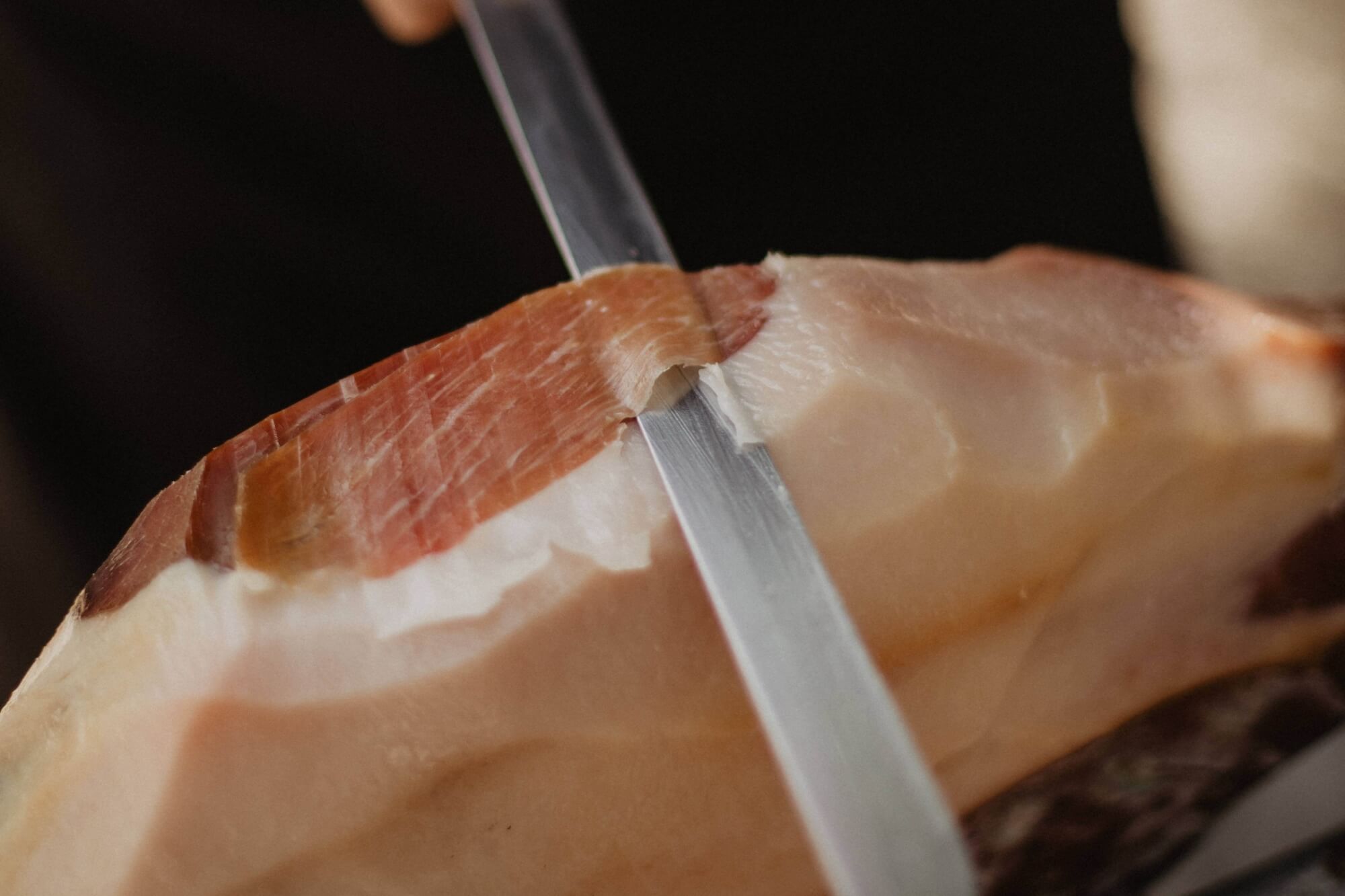 Prosciutto from Drniš at Agrotourism Kalpić © Ivana Kalpić
Prosciutto from Drniš at Agrotourism Kalpić © Ivana Kalpić
When they visit farming estates on day trips, it's very often a huge 'wow' moment for them. For many, in their minds, Croatia is simply sun and sea. And that's not entirely their fault. We, as a country, have done very little until now to promote alternative sides of Croatia. The visitors experience these wow moments because of the hospitality they receive and because of the tangible aspect of the visit. This is a modern aspect – people want to touch things, know how things feel, taste, smell. They want to ride on horses or feed them. Or take part in cultural activities. These parts of a visit to Seoski Tourism are very difficult to experience anywhere else.
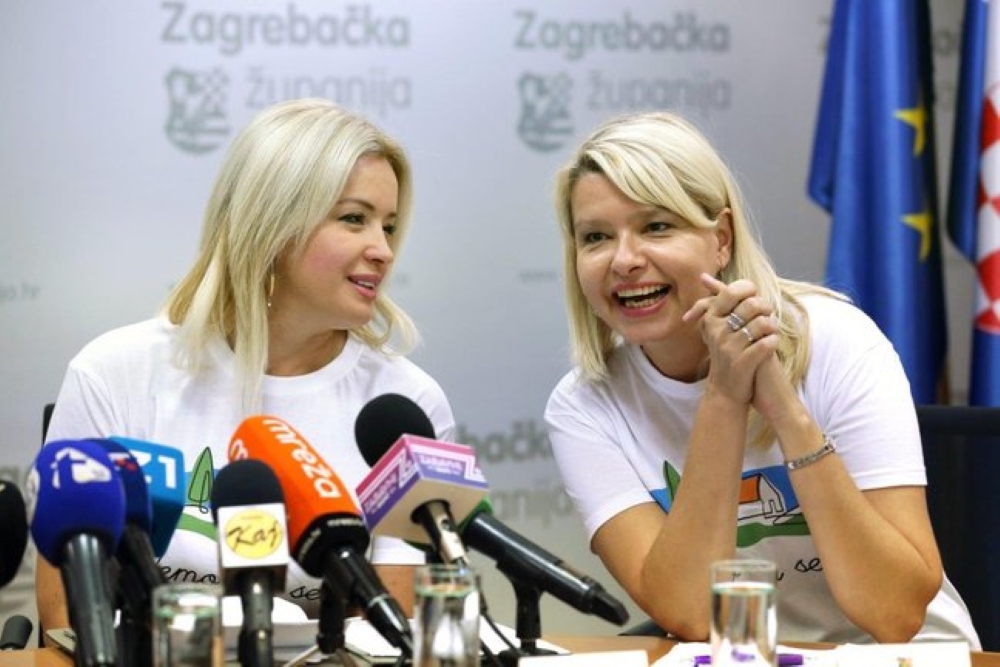 (left) Ivana Alilović, director of Zagreb County Tourist Board (right) Aleksandra Kuratko, secretary of Udruga ruralnog turizma Hrvatske (Croatian Rural Tourism Association) © Zagreb County
(left) Ivana Alilović, director of Zagreb County Tourist Board (right) Aleksandra Kuratko, secretary of Udruga ruralnog turizma Hrvatske (Croatian Rural Tourism Association) © Zagreb County
Udruga ruralnog turizma Hrvatske's online Seoski Tourism workshops begin today and their physical workshops continue next week in Istria.
If you'd like to read more about rural tourism in Croatia, then look here
Požega-Slavonia County Tourist Board Wants You to Experience Golden Slavonia
October 9, 2021 - The most beautiful of Golden Slavonia - grapes, vineyards, fields, golden grains, green Papuk, five mountains, five cities, and five municipalities are the inspiration for the Požega-Slavonia County Tourist Board's new marketing concept.
In addition to the new logo, there are new slogans, key messages, websites, promotional films, and targeted marketing campaigns to attract travelers to discover this area, reports HRTurizam.
Wines in three vineyards, the world-famous Graševina, Kutjevo cellar from 1232 - the oldest in this part of Europe and more than 30 wineries in the entire county are an attractive story for wine lovers.
Pleternica with Becarac Square and the Terra Panonica Interpretation Center, Požega with its baroque center, Lipik with the State Lipizzaner Stable and the famous Spa, Pakrac with the Jankovic manor complex, Velika with the Pannonian Sea House, eco-camp, adrenaline park and aqua park, accommodation on tourist farms or in villas on the slopes of Papuk can be seen in the new promotional film Experience Golden Slavonia, which will be shown at the most famous tourist film festivals.
"We have gathered an excellent team that conveyed our key messages in the best way. Our goal is to continue with interactive and multimedia campaigns that attract young modern travelers eager for new experiences. We have a wonderfully warm story, and we could hardly wait to tell it in a new and modern way. So we invite you to embark on the discovery of the Golden Glory; you will not regret it," said Maja Jakobović, director of the Požega-Slavonia County Tourist Board.
The new visual identity is led by Digital Cultural Transformation, and the author of the promotional film is the creative Balduči film team.
Požega-Slavonia County is a small continental destination with highly significant changes. Last year, they quickly adapted to the new coronavirus conditions. An innovative marketing campaign emphasized the attractive natural potential, camps as a recommended type of vacation, and outdoor activities.
“At the beginning of this year, we created a new modern concept from which the new logo, key messages, film, and slogan Golden Slavonia logically emerged. As a result of these activities, we are the only county in the continental part of Croatia that has all the tourist indicators better than in the first nine months of 2018, the year preceding the record tourist 2019," points out Maja Jakobović.
For more on travel in Croatia, follow TCN's dedicated page.
Vukovar Franciscan Monastery Virtual Tour: New Screen Tourism Addition
September 30, 2021 - The Vukovar Franciscan Monastery Virtual Tour is a new addition allowing people to get better acquainted with this amazing tourist site even if you cannot travel to this Eastern Croatian town.
We wish you a pleasant tour filled with God's grace - says the robotic female voice as you click this link and start exploring Vukovar's Franciscan Monastery online. The recently launched option of 360° sightseeing this iconic location in the Eastern town of Vukovar in Slavonia (referred to as the ''Hero City'' due to its suffering in the Homeland War) is an excellent innovation for what's become known as "screen tourism". Whatever your reasons for not being able to physically get to Vukovar at the moment, the Vukovar Franciscan Monastery Virtual Tour is always ready for you to take part.
''The QtouR virtual guide is implemented in the entire complex of the Franciscan monastery in Vukovar, covering over 3,500 square metres. The virtual tour offers visitors an online tour of the museum over two floors, the church, the script, the bell tower with the watchtower, the wine cellar…'' listed the Culture.net website.
Indeed, with this app (its development helped by the Croatian Ministry of Culture), you can explore the Franciscan monastery from every angle you'd usually be allowed to see during your visit. You can either navigate with your mouse or mousepad or even your keyboard to choose which direction you want to go in. From exploring indoors to heading out into the back yard, you can even soak up the breathtaking view of the nearby Danube river.
''Franciscans have had their presence noted in Slavonia and Srijem ever since the 14th century. Sadly, during the Turkish (Ottoman) occupation of these parts, every historical record of their activities was destroyed. Some traces can still be found in various documents of the Franciscan order and in the Vatican archives, however. What we know for sure is that the Franciscans of the Bosne Srebrene (Silver Bosnia) were the only messengers, bishops, priests, and guardians of the Catholic faith in these areas under Ottoman rule,'' reads the official website of Vukovar's Franciscan monastery.
Both the monastery and the church are named after saints Filip and Jakov (Phillip and Jacob). The church was completed in 1733 while the monastery was built in 1736.
''The monastery, along with the church with its monumental architecture, has been home to priceless artistic and cultural treasures for centuries now. It possessed a rich inventory and a library with rare editions along with a small picture gallery. By the sheer complexity of its heritage, it was placed amongst the most valuable memorial sites in continental Croatia,'' explains the monastery's official website.
The history of Vukovar is often clouded by the tragedies of the Homeland War, but while that is and will forever be of enormous significance, there is much more to it than that.
As TCN wrote, the history of Vukovar runs much deeper than the horrendous events which took place at the end of the 20th century, and Croatian historical and social sciences are more than aware of the fact. This was evident in the presentation of the book ''The Cultural Identity of Vukovar – A Contribution to Investigating Heritage and Successors''.
Additionally, as evidenced by the VukovART festival earlier this year, we can see that this town at the very border of Eastern Croatia and Serbia has much more to offer than just the memory of death, war crimes and misery brought about by bullets, hate, and war.
Learn more about Vukovar in our TC guide.
For more about history in Croatia, follow TCN's dedicated page.


